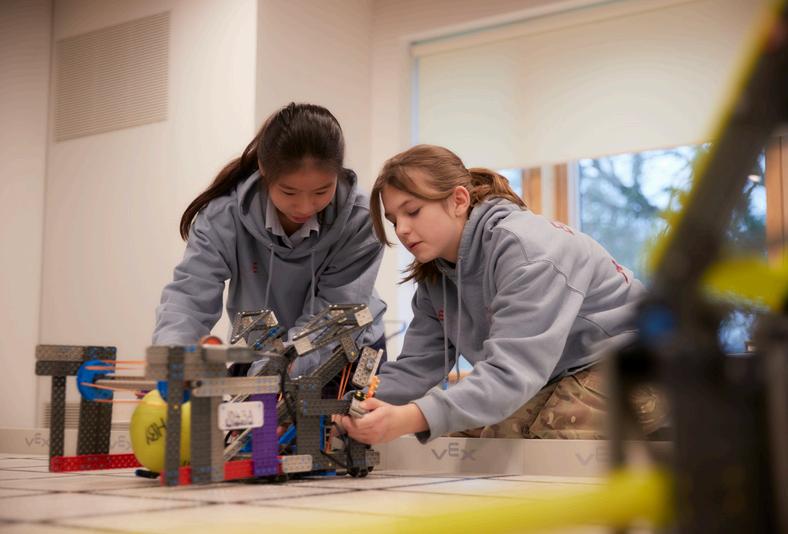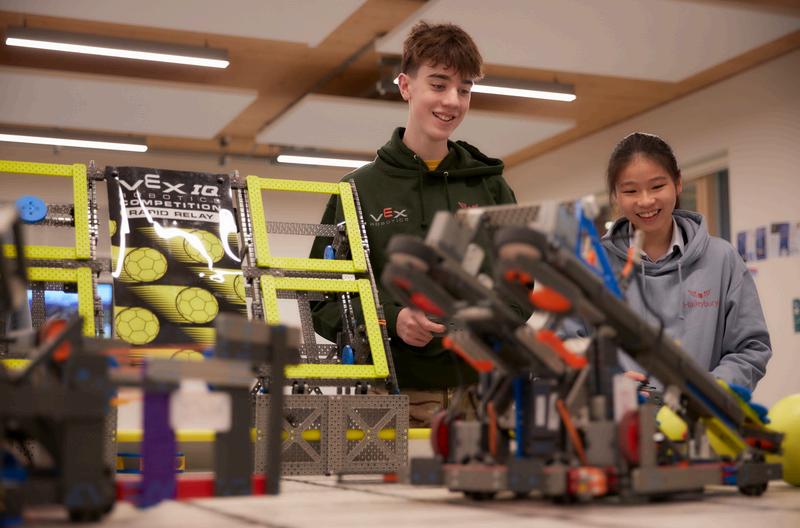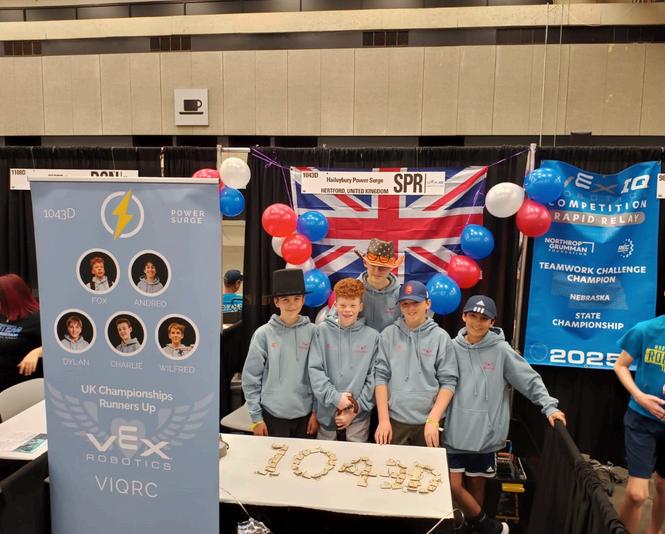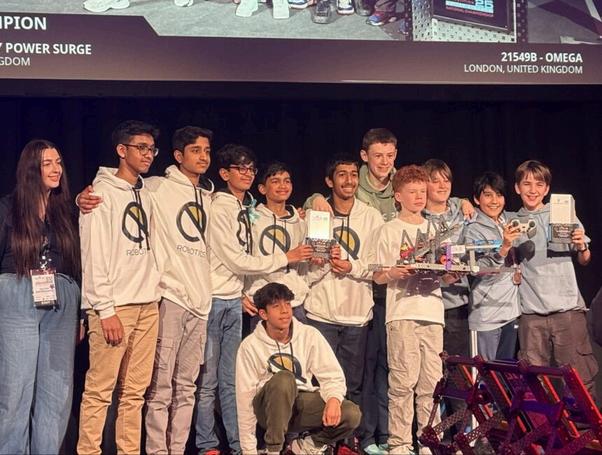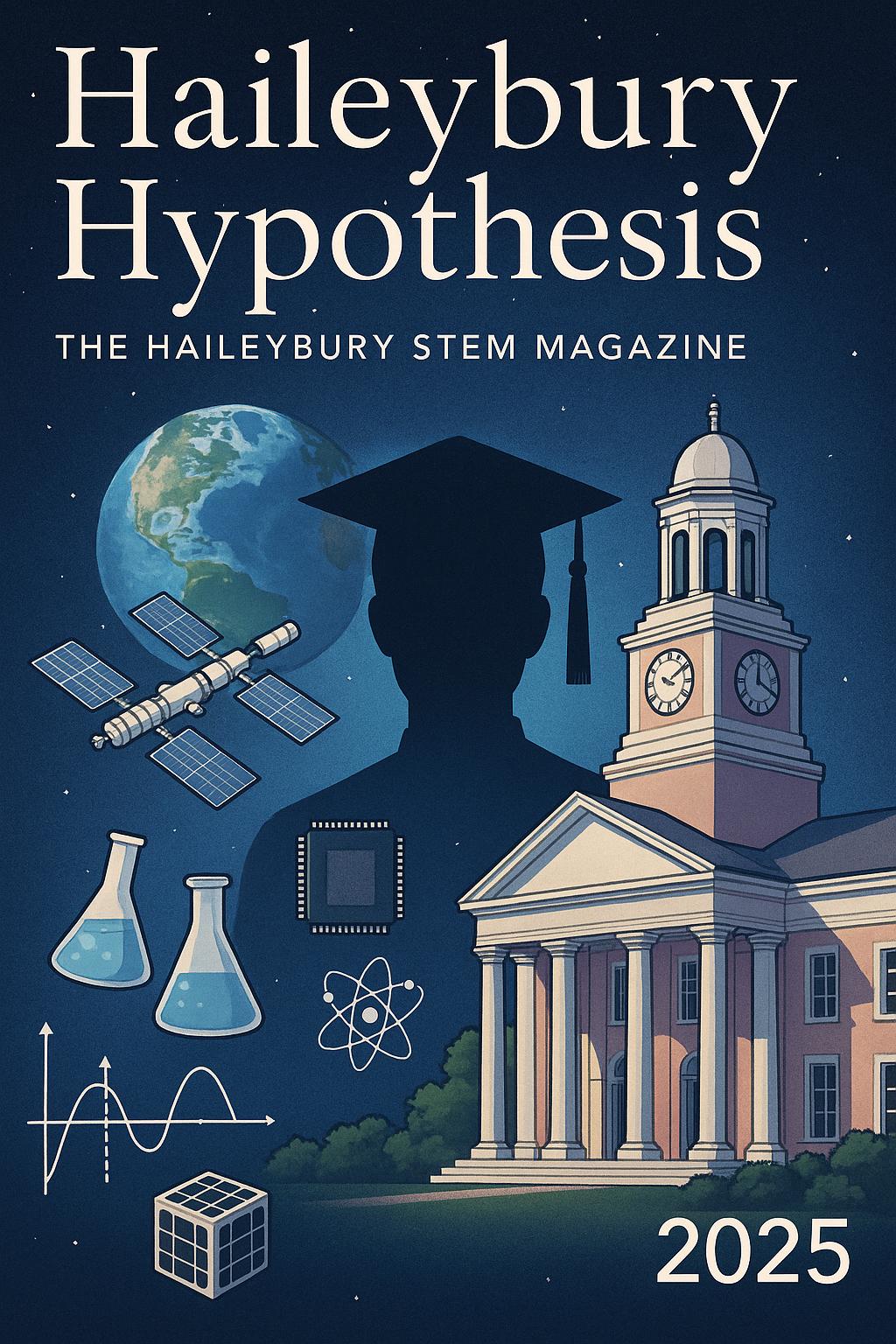

A Message From Your Editors
Science at Haileybury is driven by innovation, curiosity, and action Pupils lead hands-on projects across campus, from racing electric cars in the Greenpower challenge to designing a CubeSat for space They build autonomous robots in VEX Robotics, develop smart tech in Arduino Club, and conduct real genetics research with Stanford scientists via Stan-X
The Space Economy Society explores careers in the space industry, hosting guest speakers and encouraging bold thinking These initiatives show pupils aren’t just learning science they’re applying it to real-world challenges
Curiosity comes alive through pupil-written articles tackling everything from black holes and string theory to crime-solving with math and the science of rare diseases. These pieces reflect deep subject knowledge, original thinking, and scientific literacy.
Science here goes beyond labs. Pupils investigate how psychology, politics, and tech shape our world. Articles explore memory flaws, misinformation, and the effects of social media on democracy, demonstrating how the social sciences help us understand human behaviour and society.
Sustainability is central to Haileybury’s approach. From the award-winning SciTech building to biodiversity mapping with the EcoMap project and testing water for the Drinkable Rivers campaign, students put science into action for a greener future. At Haileybury, pupils don’t just study science they live it.
We hope you enjoy reading what the pupils at Haileybury have been doing this year.
Haileybury Hypothesis Editors
Ella (Chief Editor)
Reuben Rosalie
Evie


Table of Contents
Whats Happening at Haileybury
Arduinopg6
VEXpg7-8
CubeSatpg.9-10
TheSpaceEconomySocietypg.11-13
Greenpowerpg.14
StanXpg.15
Pupil Articles
PhysicsandSpace
Muons:theimportanceofstudyingsubatomic particlespg.17-18
Stringtheorypg.19-20
Thephysicsandethicsoffootballspg21
Quantumentanglementcommunicatorspg22
Exploringequitablespacecolonisation: addressinginequalityandpreparingfor extraterrestrialidentitypg.23-24
Anexplorationofthepossibilitiesof childbirthinspacepg.25
Bitsandpiecesaboutblackholes:theultimate vacuumcleaner!pg26
MathsandAI
MathematicsandPalladianArchitecture: VillaSaracenopg28
AIinbiology:AlphaFoldpg29
CanAIredesignIVF?pg.30
Theroleofmathematicsinsolvingcrimes pg31-32
Fromtheorytorealitywithartificial intelligencepg33-34
Digitaltechnologyanddemocracy:from deepfakestodisinformationpg.35-36
ForaSetof10All-USEquityPortfolios (1926–2024),DoestheCapitalAssetPricing Model(CAPM)Hold?pg37
BiologyandHumanBehaviour
CongenitalInsensitivitytoPainwith Anhidrosis(CIPA)pg39-40
UnderstandingADHDingirlspg.41
Whatifyoustoppedeating?pg.42
Thescienceofmemory:Canwetrustwhatwe remember?pg.43-44
Thegeneticeffectsofex-situbreeding programmesonanimalspg45
HowdoesLucozadebenefitanathlete’s sportingperformance?pg46
Table of Contents
DNAdeterminingyourdestiny:totestornot totestpg.47
ExploringthebrainsciencebehindADHDand ticdisorderspg.48
De-extinction:thenewsolutionpg.49
Whats Happening at Haileybury
Epigeneticsinpersonalisedcancertherapypg. 50
Astigmatismspg.51
Thepowerofsmell:howscentaffectsmood andperformance?pg.52
Towhatextentareconsumersrational?pg.53 -54
Thesciencebehindmusic:itsconnectionto othersubjectspg.55
Chemistry,ClimateChangeandPollution
Fromtragedytotransformation:how thalidomidereshapedpharmaceutical chemistrypg.57-58
Howisclimatechangeaffectingtheworld?pg. 59-60
Howdomarinemammalscommunicateto surviveandhowaretheyimpactedbyhuman noisepollution?pg.61
Building a Greener Future
HaileyburySciTech-Asustainablescience buildingpg63-66
DrinkableRivers:Avisionforahealthier futurepg67-68
Ecomaps pg. 69
Isaac Newton’s apple tree comes to Haileybury pg. 70
Using Science to Make a Difference
Advancingsustainableconstruction:The SeniorEngineeringSociety'scollaboration withHaileyburyYouthTrustpg.72-73
ProfessorSeungKimpg.74
Science beyond the Syllabus
Haileyburylectureseriespg76-77
Removesscientificthinkingprojectpg78-79
AweekofscienceTEDtalksandresearch inquirypg.80-82
Looking into the Future
How to become an engineer pg 86
Science after Haileybury pg. 84 - 85
What's happening at Haileybury?
Arduino club: empowering innovation through technology
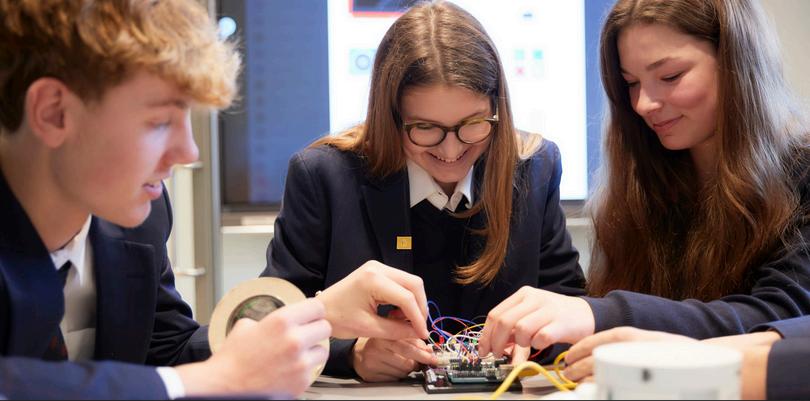
Project highlights:
The Arduino-STEM team has harnessed the power of Arduino microcontrollers to create an array of autonomous smart devices Their methodology involves an organic approach to design and troubleshooting, constructing devices from fundamental components rather than relying on pre-made solutions Their philosophy centers on the ethos of crafting instead of purchasing off-the-shelf devices. This holistic process enables the application and enhancement of a diverse range of STEM skills, fostering continuous innovation and creativity Guided by the principles of the 17 UN Sustainable Development Goals, the group integrates environmental consciousness, sustainability, and climate considerations as driving forces in each project The overarching objective is to contribute meaningfully to our global society by addressing shared challenges.
Solar system model - Pupils have designed and 3D-printed gears for a scaled motor-gear solar system This impressive model accurately replicates planetary orbits, providing a handson learning experience in orbital mechanics This undertaking harnesses the capabilities of a high-power stepper motor coupled with an intricate gear system to create a dynamic scaled model of our solar system In this model, each planet orbits the centre (representing the Sun) at a speed corresponding to the actual orbital velocities of the eight planets in our solar system
Rocket propulsion stabiliser - Using 3D printing, pupils created a rocket launche ll d by an Arduino-powered servo motor, demonstrating skills in both design and prog Founded on the MPU-6050 microchip, this project aims to explore the practical app a gyroscope in various projects These applications include tasks such as balancin wheeled vehicle, managing the thrust vectoring of a rocket, and addressing numer scenarios centered on navigation in both space and time
Self-watering plant system - Pupils have upgraded their Arduino-based self-wate with a capacitive-based soil moisture sensor for increased accuracy The system is being tested on a geranium plant in Haileybury’s Geodome When moisture levels predetermined threshold, an automated water pump is activated The pump ceases operation once the soil has received adequate irrigation This self-regulating watering system, designed for both ground-based and potted plants, effectively conserves water, preventing unnecessary waste of this limited resource This project’s ultimate goal is to optimise its function taking into account also sunlight, temperature and other factors
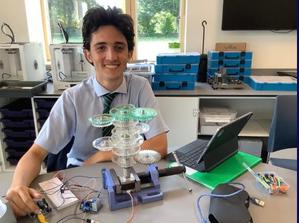
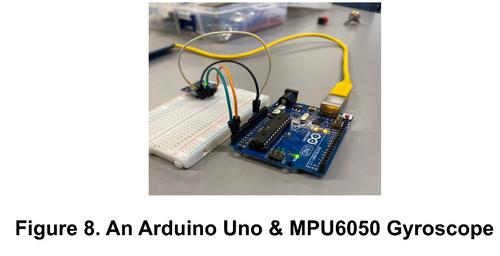

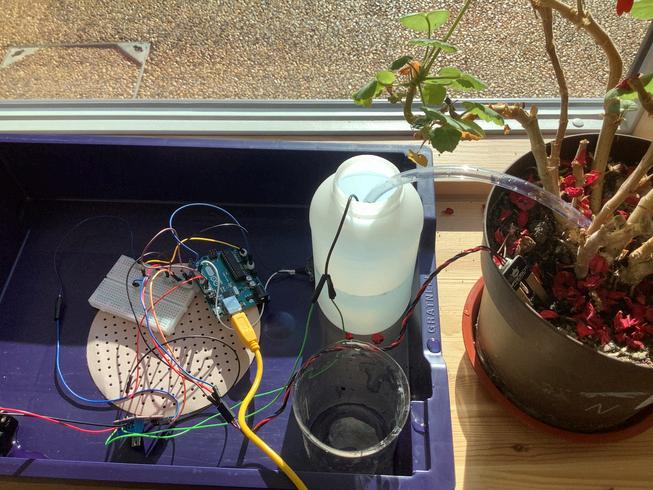
Braccio++ Robotic Arm - The Arduino-STEM club, in partnership with Haileybury's Design Engineering team, has successfully assembled three Braccio++ robotic arms Notably, these robotic arms feature memory motors, providing a valuable capability to record motor positions in 3D space This functionality ensures precise reproduction of movements, allowing for the repetition of mechanical tasks with high accuracy. Programming for these robots is accomplished using the Arduino IDE in C++, leveraging pre-made libraries. An illustrative example is the recording code, which captures motor angles at specific time points. The recorded movements can subsequently be replayed as required. The robotic arm has been trained to complete repetitive tasks, such as placing a sphere at the top of a ramp and collecting it after it rolls down, showcasing the ability to empl operations.
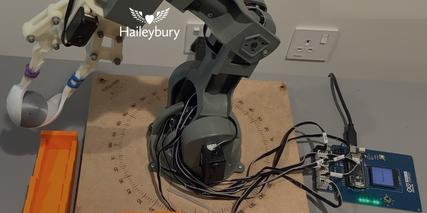
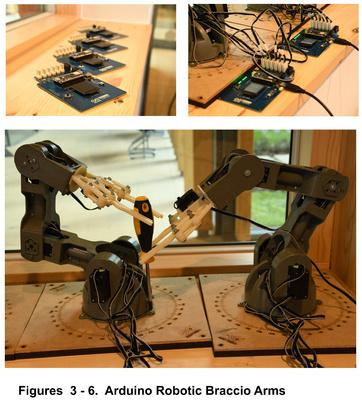

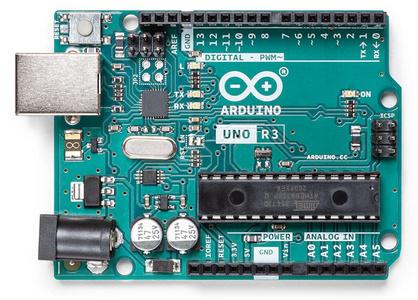
Board
An Arduino UNO and MPU6050 gyroscope
Thesolarsystemmodel
The self-watering plant system
Arduino robotic Braccio arms
VEX Robotics
Kyrah (R)
This year VEX Robotics has taken us all from strength to strength, in progression and successes As of this week, there are now six Haileybury teams across four year groups: Middles, Removes, Lower School Two and Lower School One
The brand new teams are currently considering how they plan to represent themselves through team names and logos, and setting their goals for the upcoming competition season Grace (LS1) says she’s already making progress on logging team sessions in their notebook, and looks forward to designing the best robots for her team, Interstellar.
The LS2 teams are also hoping to continue this year’s successes into the next season Lumina steadily improved their robot and worked on their team skills to gain an eventual score to be very proud of Power Surge came second in their division at Nationals, and took incredible strides to get all the way to Worlds in Dallas, Texas The entirety of Haileybury’s VEX teams are incredibly proud of this achievement, as it has been a goal for us since we began the club
Ashlynn Wong, in Middles, has enjoyed her time in VEX, saying that she loved the team aspects of it and the time we spend time problem solving as a group
Overall, we have pride in our progress and our effort this year, and we plan to continue expanding our achievements As someone who has been in the VEX teams since the beginning, I’m both delighted and anticipatory for the future steps of this club and it’s brilliant teams


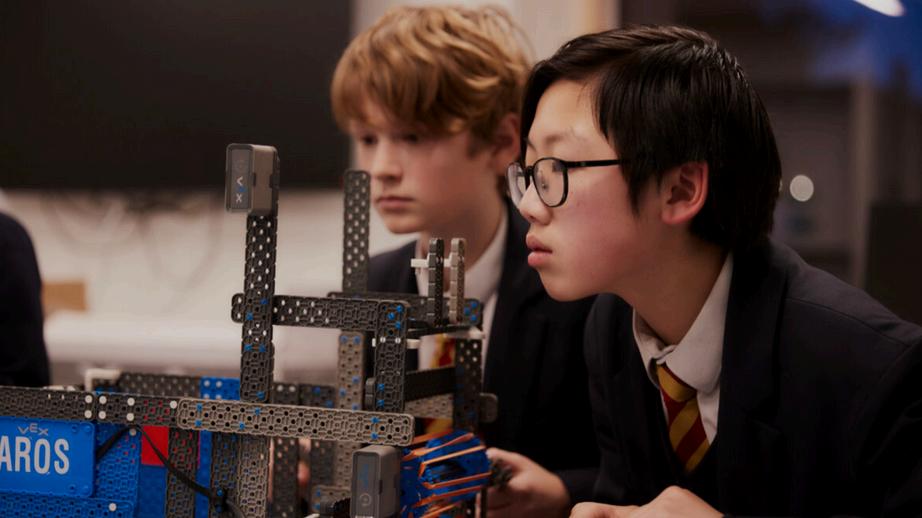

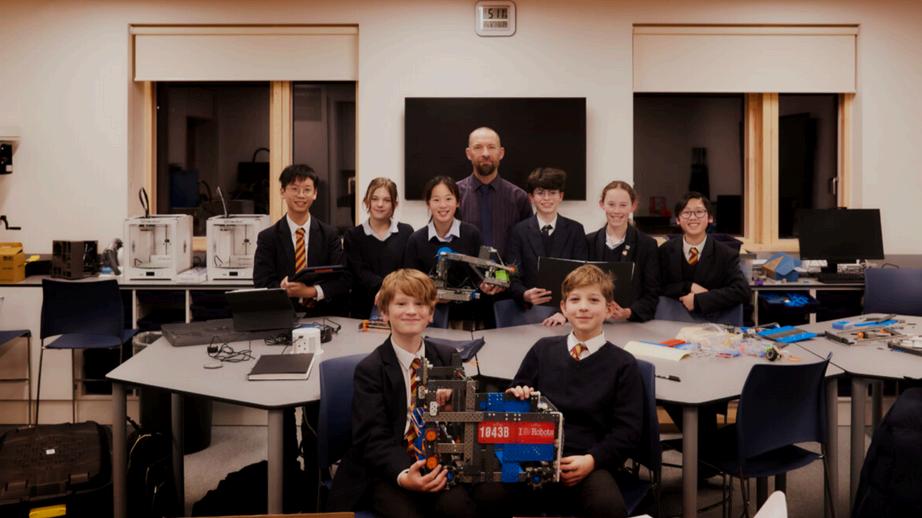
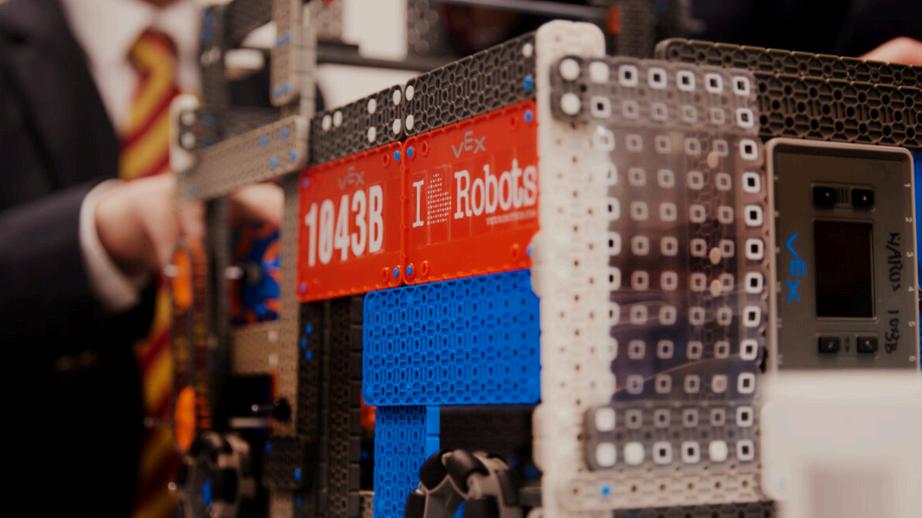
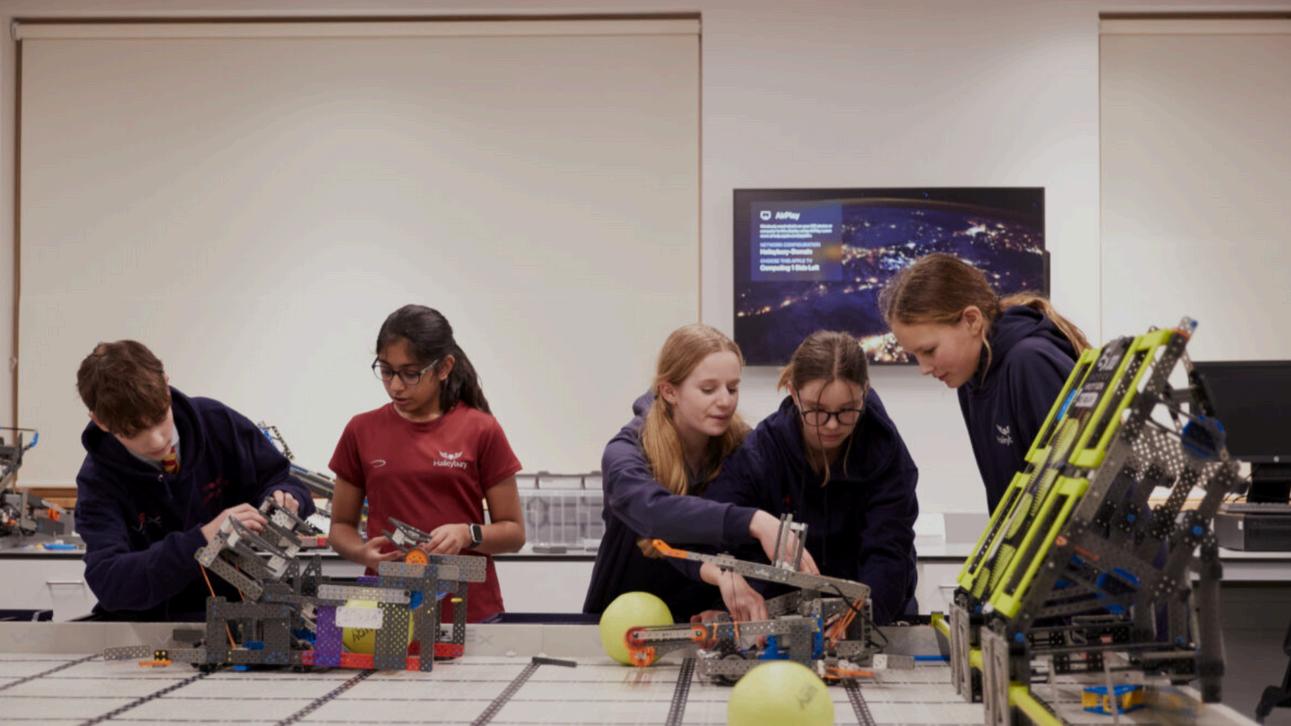
Cubesat
Olivia (L6th)
What is a cubesat?
A cubesat is a classification of nanosatellite, its size is unitised, whereby a 1U (unit) cubesat would be 10cm X 10cm X 10cm, and a 2U would be twice the volume of the 1U (20cm X 10cm X 10cm) California Polytechnic State University at San Luis Obispo (Cal Poly) and Stanford University were the original developers in 1998/99, in order to provide a new platform for space exploration and education Seven years later, the first cubesat was launched in 2003. It was launched using a Russian eurockot Then by 2012 there were seventy five CubeSats in orbit The CubeSat industry has evolved into a collaborative ecosystem involving government, academia, and private sectors, driving advancements in capabilities CubeSats now serve as a cost-efficient platform for scientific research, technology demonstrations, and innovative mission designs, including constellations, swarms, and distributed systems
Our cubesat programme
The Haileybury cubesat team aims to launch a 1U cubesat into space within four years from now (2025) We will be using a falcon 9 rocket from Space X. This would make us the first secondary school in Europe to ever be successful Unlike other previous missions we have a partnership with industry experts, BAE, which have been running monthly lectures and providing occasional support when needed. Our mission is to take a picture of earth for environmental monitoring purposes This provides many possibilities such as tracking deforestation, glacial melting, or even desertification. Our pictures that we will collect can be used to give data to geographers

The progress made
So far, our team has conducted thorough and deep research into each component that would be required. Beginning with the orbital trajectory,
Although researching our orbital trajectory would not contribute directly to the feasibility check of an individual component It gives an better insight into what will occur and it would mean that we gain more information about factors that would impact every other aspect. For example: the initial altitude height would impact the signal transmission process and therefore the anteni required Another example is how, the lifespan of the cubesat would impact the power required impacting the battery that is used and would also determine the quantity of photos able to be taken There are three regions in which satellites orbit in: LEO( Low earth orbit), MEO (medium earth orbit) and GEO (geostationary equatorial orbit) Our cubesat will be launched from LEO
Afterwards, we began the feasibility checks on all of the components Initially starting with the camera by comparing different cameras to our requirements such as mass (total mass for 1U is 1kg), size (total dimensions for 1U is 10 X 10 X 10cm) and as the maximum height is 500km, discovered from the research of the orbital trajectory, then the requirement of GSD (ground station distance).

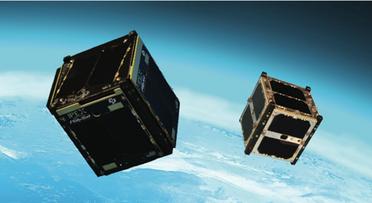
Once we knew the camera that we would use, we could determine the aneti and conduct a feasibility check on potential aneti, as we knew the data which would be transmitted Additionally, factors that resist the transmission of the signal could be determined from knowing the orbital trajectory. The Aneti that was then selected has a corresponding OBC (on-board computer) therefore the OBC was also proven to be feasible
Regardless of the mission, the main factor which means that many missions have failed previously is that once launched the cubesat spins, and the propulsion system is unable to stabilise The guidance from BAE recommended that we use reaction wheels Reaction wheels operate without the need for external torque applicators and are capable of independently providing three-axis attitude control This is a significant advantage of a reaction wheel assembly, as it conserves valuable space and contributes to a lighter, more manageable satellite or spacecraft Reaction wheels are also precise and effective in stabilisation
Finally once we know all the components that we will be using then we can calculate the power requirement of all these components simultaneously Based on this we determined the number of solar panels required (maximum five as six faces and one face is used for the camera) and the feasibility of the battery
The future of the programme
Recently, we have produced a PDR (preliminary design review) which includes all our research and is to be sent to BAE to be checked which, when approved, will then lead us onto project phase C, which finalises the design for both fabrication and software development. Allowing us to then purchase components, and begin construction
Additionally testing is curtailed, initially by testing each individual component followed by testing the integration of the components together In addition to electromagnetic compatibility (EMC) and electrostatic discharge (ESD) testing are essential to verify the CubeSat’s capability to operate reliably when exposed to external electromagnetic fields and discharge events during its mission. Also testing environmental situations such as temperature, pressure and external forces (as close as possible) and testing if it is comparable with the ground station is also important.
References Ieva(2024)CubeSatandsmallsatellitetesting NanoAvionics.Availableat:https://nanoavionics.com/blog/cubesat-and-small-satellite-testing/ (Accessed:23January2025). Zhu,F.(nodate)2.1programphases,AGuidetoCubeSatMissionandBusDesign.Availableat:https://pressbooksdev.oer.hawaii.edu/epet302/chapter/21/#:~:text=The%20design%20is%20peer%2Dreviewed%20in%20the%20preliminary%20design%20review,for%20fabrication%20and%20software%20de velopment.(Accessed:02January2025). WhatareSmallSatsandCubeSats?(2024)NASA.Availableat:https://www.nasa.gov/what-are-smallsats-and-cubesats/(Accessed:12December2024). Access,I.(2024)Howdoleo,GeoandMEOsatellitesdiffer? IPAccessInternational.Availableat:https://www.ipinternational.net/how-do-leo-geoand-meo-satellitesdiffer/#:~:text=Geostationary%20equatorial%20orbit%20(GEO)%20satellites%20are%20a%20type%20of%20geosynchronous,the%20sky%20at%20all% 20times.(Accessed:23February2025).
Caldwell,S.andBowman,A.(2024)Cubesatscale.
Caltech, NASA/JPL (2013) Artist’s concept of the Intelligent Payload Experiment
Sergieieva, K (2022)
GEO vs MEO vs LEO Satellite Constellations

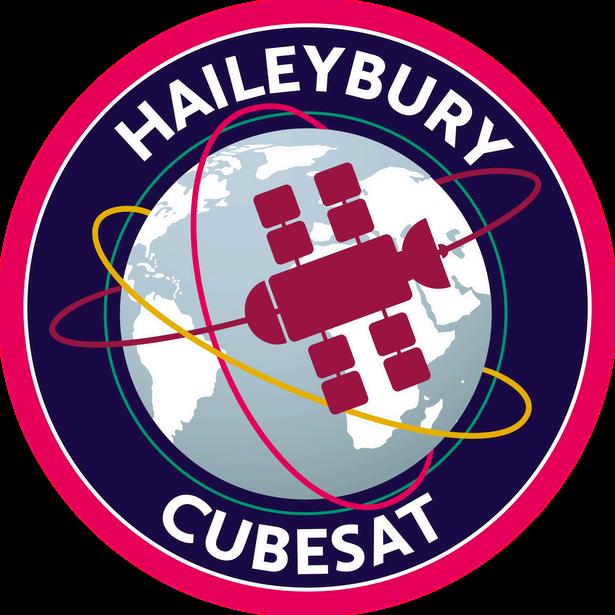
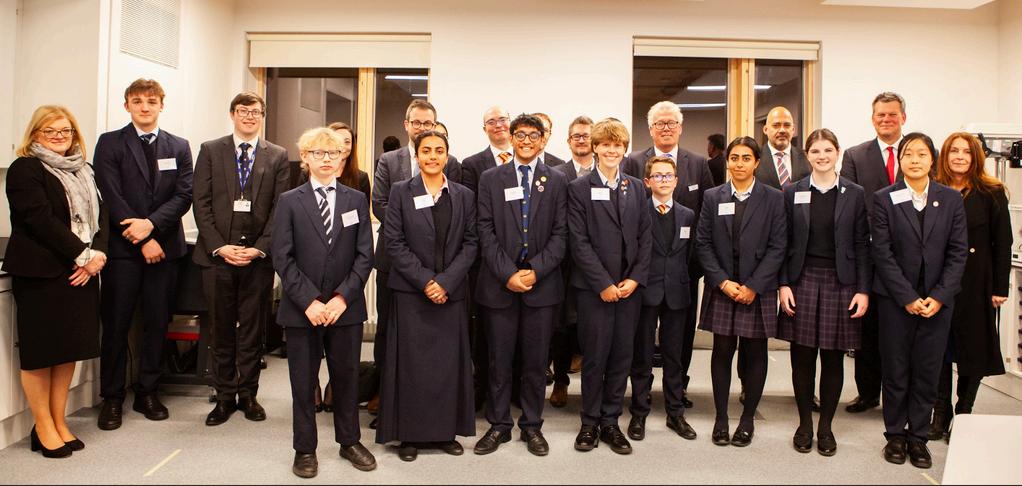
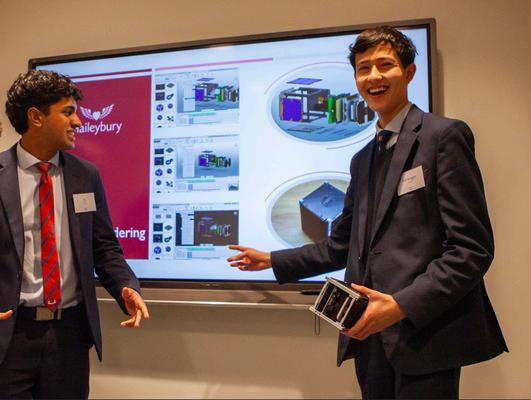
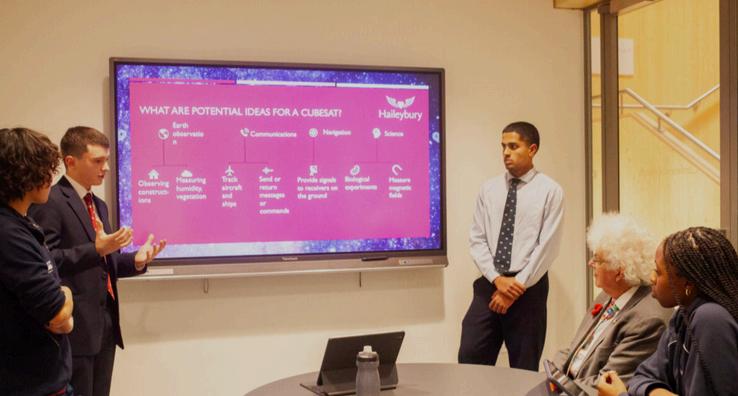


The Space Economy Society
Ella (L6th)
A major focus of my academic society is to educate Haileybury’s pupils about the exciting career paths available to them in the space economy We aim to explore the intersection of space with various disciplines such as medicine, law, technology and more, to highlight that the space economy has room for people with all academic backgrounds
Haileybury is the first co-educational school in the country to have a society of this sort We've seen tremendous engagement, with around 30 pupils attending each session and over 60 participating in special events It's one of the largest societies the school has ever seen. The society meets once a month, which allows us to put on high-quality, valuable sessions without overburdening pupils' schedules So far, we’ve hosted a wide range of talks and events, designed to show how diverse and accessible the space economy really is These include:
Helene Huby, CEO of The Exploration Company – one of the only female CEOs in the space exploration industry and the first in Europe
On January 18 the society was honored to host Hélène Huby, cofounder and CEO of The Exploration Company (https://www exploration space), via zoom Hélène Huby is a renowned expert in space economics and policy, with a deep passion for exploring the intersections of space exploration, technology, and commerce Huby shared her journey and insights into the space industry and the opportunities available in the space economy th
A foundational session on "What is the Space Economy and Why Should We Be Excited by It?" hosted by me
Mr Metcalfe (Biology) – How can we confirm the presence of life on exoplanets?
Mr Wilson (Psychology) – How do teams work, and why is that important for space?
Mr Heard (Sustainability) – Sustainability in Space
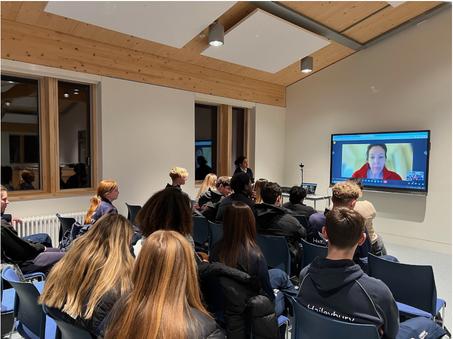
A Martian Movie Night - Relaunching the Space Economy Society into the New Year.
Upasana Dasgupta, international space lawyer - Haileybury’s Space Economy Society had the incredible honor of hosting Dr Upasana Dasgupta, a leading expert in space law with over a decade of academic experience Holding a PhD from McGill University’s prestigious Institute of Air and Space Law, Dr. Dasgupta is currently a postdoctoral researcher at Université Laval, where she explores the complexities of international space treaties and their impact on global policy Her expertise has shaped future space lawyers through her teaching at O P Jindal Global University, making her one of the foremost voices in this evolving field.
In an exclusive session with members of Haileybury’s Space Economy Society and Law Society, Dr Dasgupta provided fascinating insights into the legal framework governing outer space From the challenges of regulating commercial space activities to the role of international treaties in shaping the future of space exploration, she shed light on the pressing legal issues that will define humanity’s presence beyond Earth A truly inspiring session that showcased the legal frontier of the final frontier!
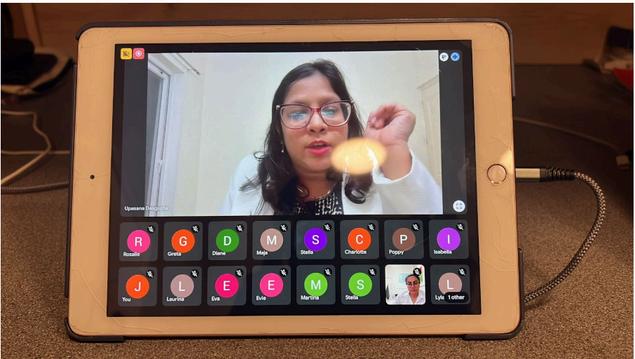

Helene Huby lecture
Upasana Dasgupta lecture
Emeritus Professor Craig Underwood of Surrey University, visiting professor (not arranged by the society, but engaged with our group while on campus)
Jim Cantrell, Co-Founder of SpaceX and CEO of Phantom Space – this session evolved into a full Haileybury Lecture, with over 80 people joining from around the world.
The Space Economy Society was honored to host Jim Cantrell, cofounder of SpaceX and CEO of Phantom Space, for an insightful talk on the evolution of the space industry- from NASA to SpaceX and beyond
Jim made it clear: the space industry is booming, real, and here to stay. He highlighted how SpaceX is laser-focused on making life on Mars a reality- sooner than we might think- while Phantom Space and many others are working to “Henry Ford-ize” space, making access to it more economical and scalable.
His biggest takeaway? Get involved! The space economy isn’t just the future-it’s happening now Thank you, Jim, for inspiring us to reach for the stars!
Heather Bulk, CEO of Special Aerospace Services (SAS)
From Finance to Flight: A CEO’s Unconventional Journey into the Space Industry
It was an honour to host Heather Bulk, CEO & co-founder of Special Aerospace Services (SAS), for an inspiring session at our Space Economy Society
Heather shared how she navigated from finance into aerospace, becoming a CEO in a field that was once dominated by engineers and the public sector She emphasised that space is no longer just for astronauts or technical experts-the private sector has opened a world of opportunities for all.
Her key message? Think beyond boundaries Take risks Be brave She encouraged us to embrace entrepreneurship, take unconventional paths, and find our place in industries that once seemed out of reach
She also spoke about balancing leadership, flying, and being a mum, reminding us that passion makes anything possible- even on the busiest days! Huge thanks to all who attended, including pupils who joined online!
The Space Economy Society is expanding internationally, with new chapters planned in two schools in Oman, another in Dubai and a potential branch in the United States. We are now able to connect pupils globally, allowing us to effectively achieve our mission
This work recently led to my invitation to speak at the Royal Institution’s Youth Summit, where I will be one of only three speakers presenting to an audience of 300 pupils and educators The summit is a platform that helps shape the prestigious Christmas Lectures, and I was invited after the Royal Institution learned about the society’s impact It’s a unique opportunity to represent Haileybury and demonstrate how pupil-led initiatives like ours can influence national conversations around science, education, and the future of space
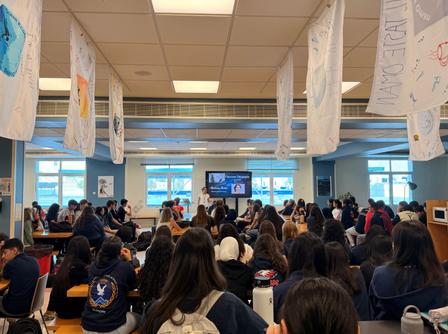
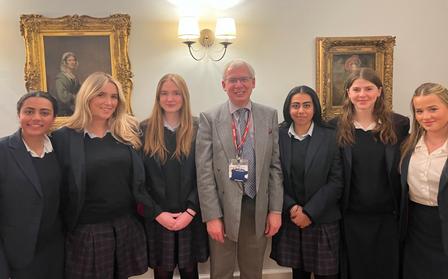
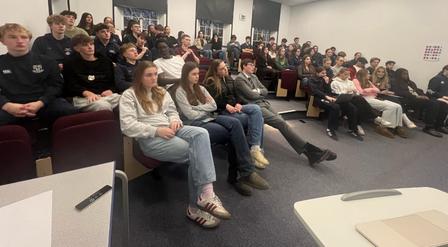
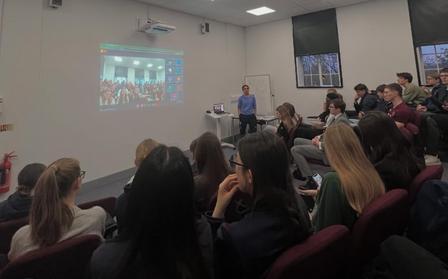

EmeritusProfessorCraigUnderwood meetingpupils
JimCantrelllecture
Heather Bulk lecture
Heather Bulk lecture
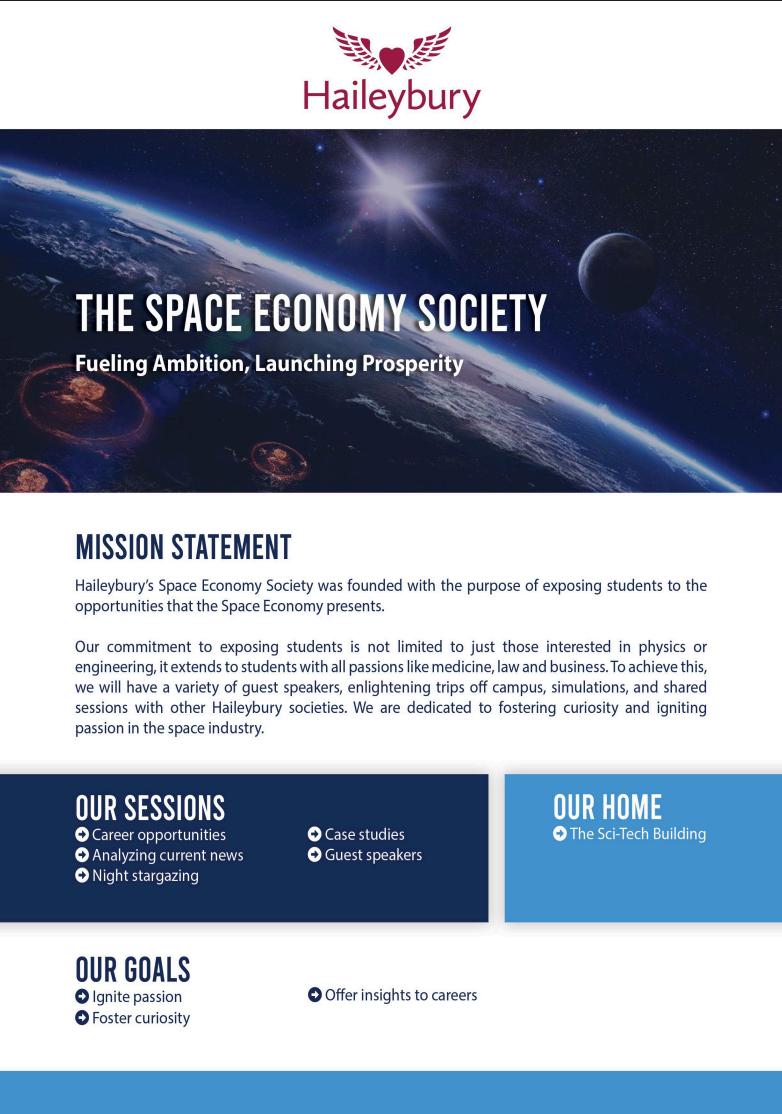
Greenpower
Bob (L6)
Greenpower Racing is a UK-based initiative that challenges students to design, build, and race electric cars, aiming to inspire young people to excel in science, technology, engineering, and mathematics (STEM) through the excitement of motorsport The competition is divided into three categories: Formula Goblin (ages 9–11), Formula 24 (ages 11–16), and Formula 24+ (ages 16–25). By participating, pupils gain hands-on experience in engineering and technology, develop teamwork and project management skills, and promote environmental awareness by focusing on sustainable technologies. The ultimate goal is to bridge the STEM skills gap and cultivate the next generation of innovators and engineers
Our Greenpower team comprises six dedicated Sixth Form pupils who meet every Wednesday afternoon to work on our electric car project Last year, we successfully designed and built our first electric vehicle, proudly displaying Haileybury's "heart and wings" emblem on its front Although we haven't named the car yet, it represents our initial step into the world of sustainable engineering and competitive racing
In March of this year, we participated in our first test race, which provided valuable insights into our car's performance and areas for improvement. Engaging with other teams allowed us to identify key aspects where we could enhance our design, particularly in reducing aerodynamic drag to increase speed Given that all teams use the same standard 240W, 24V electric motor, optimising our car's shape and materials is crucial for gaining a competitive edge
Looking ahead, we plan to design and construct a second vehicle with a focus on weight reduction and improved aerodynamics Our goal is to create a faster, more efficient car that not only performs better on the track but also embodies the principles of sustainable engineering. This endeavor will involve careful material selection, innovative design strategies, and rigorous testing to ensure compliance with Greenpower regulations.
Our team operates with clearly defined roles, fostering effective collaboration and project management. We are fortunate to have the guidance and support of Mrs Pretorius and Mr Lapidge, whose expertise and encouragement have been instrumental in our progress Their mentorship has not only enhanced our technical skills but also instilled a deeper appreciation for the importance of teamwork and perseverance in achieving our objectives
Participating in the Greenpower project has been an enriching experience, allowing us to apply classroom knowledge to real-world challenges and develop practical skills in engineering and design. As we continue our journey, we are excited about the opportunities to innovate, compete, and contribute to a more sustainable future through our involvement in Greenpower Racing.
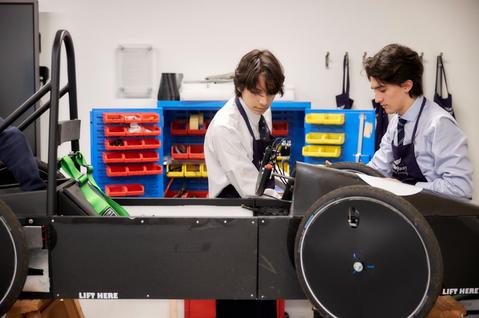


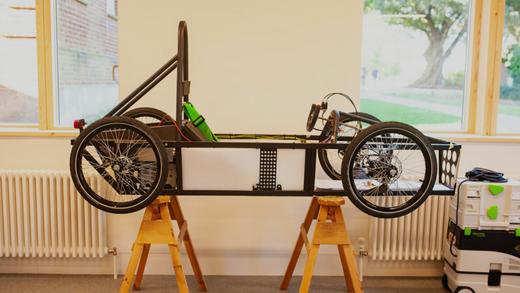

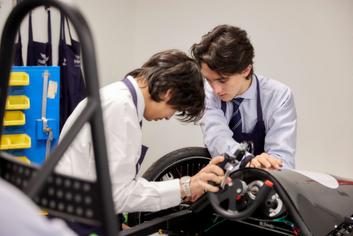
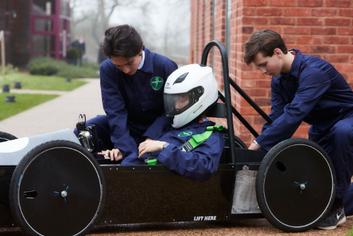
Stan-X
Throughout the year, the Stan-X pupils dedicated their time to genetically modifying fruit flies, scientifically known as Drosophila melanogaster They spent their days looking through vials of flies to find individuals with the specific genotypes they needed, flipping vials for breeding, performing brain dissections, and even observing fluorescent patterns in the flies’ brains The Stan-X course is split into an IB and an A Level group, which are slightly different courses
L6 activity - what we did
With the help of the newly introduced CRISPR-Cas9 system, Lower Sixth pupils aimed to genetically modify fruit flies, enabling specific tissue studies to be carried out The following article explains how our course works and how it contributes to scientific research
Why do we use fruit flies?
Despite their size, fruit flies share 75% of disease-causing genes with humans, making them an excellent model for studying various human diseases These genes can be turned on and off to understand what they do, helping scientists learn how they function in humans Many of these genes work only in specific tissues, such as the brain or muscles, which makes them relatively hard to study.
How can we target these specific tissues?
To study specific genes in fruit flies, we use something called the binary expression system, which acts like a two-part tool One part, called the Driver, works like a GPS, guiding the system to a specific part of the fly’s body. The other part, called the Reporter, is like a switch that can turn the gene on or off We created flies that carry both of these components by carefully breeding them The goal is to ensure their offspring inherit both parts so we can control exactly when and where a gene is active
CRISPR-Cas9
The special thing about the gene-editing tool CRISPR-Cas9 is that it is very precise and allows us to control exactly which gene is turned on or off. With the help of this tool, we are creating new LexA drivers, enabling scientists to explore tissue interactions with more precision than ever before
Why does our course matter?
By developing more LexA tools, we help give scientists the ability to study how tissues interact in fruit flies with great accuracy. We send our modified flies to a fly base, where they can be ordered by scientists from around the world for further research Since fruit flies share so many genes with humans, these studies can improve our understanding of human diseases and may help lead to new treatments
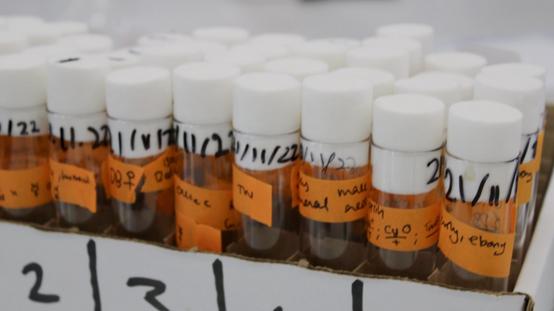

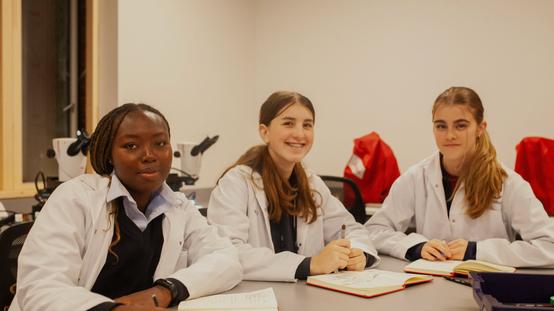

Rosalie (L6th)
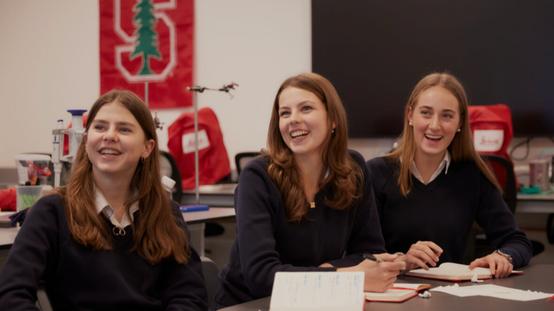
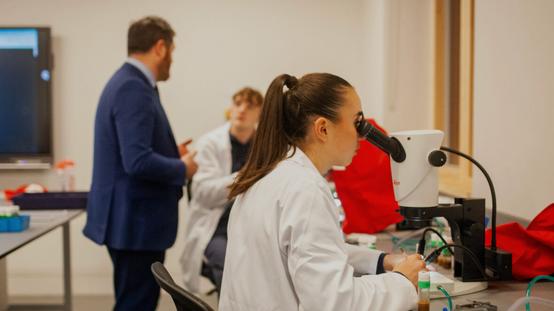
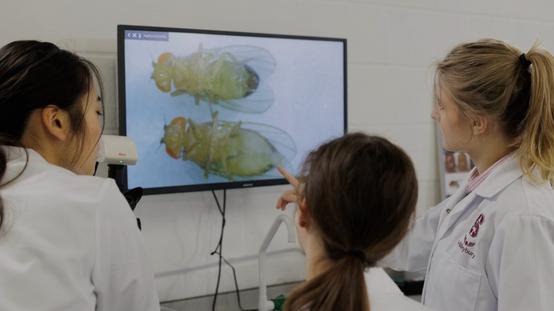
A Level course - introduction
The A Level Stan-X course is slightly different from the IB CRISPR course. Although many of the same lab tasks are involved, the goals of the two courses are quite different.
Objective
In the A Level course, the main project involved generating a LexA driver line using the P element system. The goal was to activate certain genes in specific parts of a fruit fly’s body by using enhancers already present in the fly’s DNA. This allows scientists to control more precisely where and when genes are active.
How is this different from the CRISPR course?
The P element system is about controlling when and where a gene is active in a fly, without actually changing the gene itself. It’s like using a dimmer switch to control lights in certain rooms depending on what you want to study. CRISPR, on the other hand, is more like a pair of molecular scissors. It edits the DNA directly by cutting, removing, or replacing parts of a gene to change what it does. Rather than flipping a switch, CRISPR rewrites the instruction manual.
Findings
Since A Level pupils have multiple sessions each week, they had the opportunity to complete 40 hours of brain dissections in order to earn a certificate. This was a very important part of the course, as students had to carefully remove the brain from larval flies to observe GFP expression in the brain. This was done to see whether the gene next to where the P element landed is active in the fly’s brain.
International Fly Conference
After a long year of work in the fly lab, we had the opportunity to present our findings alongside other pupils at the International Fly Conference in New Jersey. In pairs, we created posters about our work, specifically focusing on the gene that the P element had landed next to. We presented our posters in a show-round format, which allowed us to explain our project to small groups, as well as walk around and learn about other students' research. It was a great opportunity to meet new people and connect with like-minded students who share an interest in biological research.
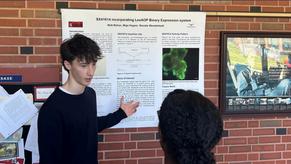
Physics and Space
Muons: the importance of studying subatomic particles
Demeterios (R)
What
is a muon?
A muon is a subatomic particle similar to the electron, however much heavier, around 207 times heavier Muons also carry a -1e charge, just as an electron Both the muon and electron belong to the lepton family, which is a type of fermion
Fermions are particles that have a half-integer spin and include two branches: leptons and quarks Leptons are placed in their own branch of fermions primarily because they only interact with weak nuclear forces and electromagnetic forces Unlike quarks, which interact with strong nuclear forces, they are able to make up particles such as the proton and the neutron
In addition, the lepton family also includes the electron, and tau, and their corresponding neutrino, which are very light and have no charge, making them much harder to detect than their parent particle. Muons are described as very unstable and decay extremely quickly (within 2 2 microseconds) They are created in very high-energy interactions, for example, when cosmic rays hit Earth's atmosphere.
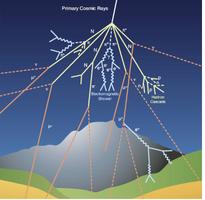
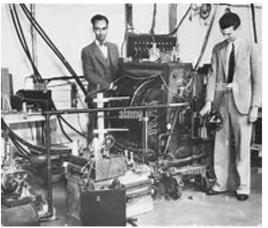
Who discovered the muon?

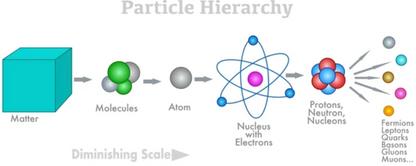
The muon was discovered in 1936 by Carl D. Anderson and Seth Neddermeyer while studying cosmic rays in a cloud chamber When observing the particle, they initially mistook it for the meson
The meson was a theorised particle in 1935 by a Japanese physicist named Hideki Yukawa. After further investigation, it was revealed that the muon interacted with weak nuclear forces, unlike the meson that was theorised to mediate strong nuclear forces This meant that the particle discovered by Anderson and Neddermeyer was different from Yukawa's theoretical particle The unexpected nature of this discovery led physicist I I Rabi to ask, “Who ordered that?” This humorous remark reflected the surprise of discovering a particle that didn’t fit into the existing theories, highlighting the gaps in scientific understanding at the time
Why are muons important?
Muons hold a significant place in both fundamental physics and practical applications, primarily due to their unique properties Muons are closely related to electrons but are approximately 200 times bigger, which gives them special behaviors and interactions with forces like no other, making them very valuable to scientific research
In particle physics, muons are crucial for testing the Standard Model, a theoretical framework that describes and labels every known particle and force. A very intriguing characteristic of the muon is its magnetic moment a property that describes how a particle interacts with magnetic fields Experiments done at Fermilab (Muon g-2 project) found slight discrepancies between the measured magnetic moment and the values predicted from the Standard Model These anomalies suggest that unknown particles or forces might be in play that are beyond our current understanding
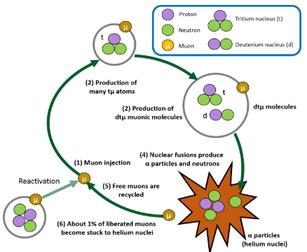
Muons also play a vital role in studying the weak nuclear force, one of the four fundamental forces This is because the particle can only interact through this force, making it an excellent tool When studying weak nuclear forces, muons can isolate them from strong nuclear forces, providing more precise answers Additionally, comparisons between leptons such as muons, electrons, and taus are used to test the principle of lepton universality This principle predicts that all leptons should behave identically under the same conditions If violations of this principle are found, it would have profound implications for physics and deepen our understanding of fundamental particles
Muons have also proven to be extremely useful in real-world applications due to their ability to penetrate deeply into matter A key application of these characteristics is muon tomography, a technique that uses naturally occurring muons from cosmic rays to image dense materials. This method has been employed in various fields. A common job using this method is archaeology
Muon tomography is also very useful in geophysics as it helps study volcano interiors and monitor magma movement, as well as in nuclear safety, where it can detect hidden nuclear materials or inspect reactor cores for structural integrity
Hierarchical structure of quantum systems Particle hierarchy [2]
Standard Model of Elementary Particles: Muon [1]
Cosmic-ray interactions in Earth's upper atmosphere create cascades of secondary nuclear particles Diagram taken from Pierre Auger Observatory [3]
Dr Carl Anderson (left) and Seth Neddermeyer with their 'cloud chamber' machine Sept 29, 1933 At California Institute of Technology With it gamma rays were split into electrons and positrons Anderson won the 1936 Nobel Prize in Physics Neddermeyer lead the Manhattan Project implosion team for the Trinity Test (July 17, 1945) [4]
In energy research, muons have been investigated for muon-catalysed fusion, a process where muons facilitate nuclear fusion reactions at much lower temperatures than typical fusion. Although it is not yet ready for commercial use, it holds great promise for clean energy in the future Muons also help provide insight into cosmic ray interactions, helping scientists understand high-energy processes in the universe and the behavior of Earth's atmosphere
Muons are especially important because of their mass, short lifespan, and abundance Their high mass compared to electrons allows them to penetrate deep into materials, which helps image dense objects Their short lifespan of 2.2 microseconds ensures that experiments using muons are highly controlled and precise Additionally, muons are produced in vast quantities when cosmic rays collide with Earth, providing a natural source for experimentation.
What do scientists use to detect muons?
As muons hold a very important place in physics, scientists use specialised detectors, such as scintillation detectors, to detect muons Scintillation detectors use a strong light to detect muons The light emits once a muon passes through it and is then collected by photodetectors, like photomultiplier tubes or silicon photomultipliers, which convert the light into an electrical signal that can be analysed and used in experiments

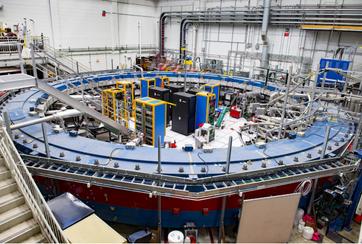
Fermilab’s Muon g-2: the centerpiece of the experiment, a 50-foot-wide electromagnet ring, which generates a uniform magnetic field so scientists can make measurements of muons with immense precision [5]

The ScanPyramids project began in 2016 and in 12 months a huge void was detected deep within the 4,500-year-old Great Pyramid of Giza by using muon tomography. [6]
This has been used in experiments such as cosmic ray muon tomography (CRMT), where muons are detected to study the structure of large objects like volcanoes or pyramids A good example of this is when the CRMT technique was used to study the interior of the Pyramid of Giza. Researchers used muons to discover hidden chambers within the pyramid. It was an ideal detector because it is highly sensitive, fast, and able to detect penetrating muons in real time, allowing detailed imaging of the pyramid's interior Other common ways of detecting muons are using drift chambers and wire chambers These devices use thin wires within a chamber filled with gas. When a muon passes through, it ionises the gas, creating charged particles that drift towards the wires, which then produce an electrical signal
These detectors are generally used in large-scale projects like the Large Hadron Collider (LHC) The drift and wire chambers are used for tracking particles produced in the collisions when protons and heavy ions hit each other at incredibly high energies, making it easier to analyse conditions similar to the Big Bang In the LHC, wire chambers are also used as part of the trigger system, which identifies important events during the collisions in real time Because there are millions of collisions per second, only a fraction of the events can be stored for analysis. Wire chambers help by picking out events where interesting particles, like muons, are produced.
What further research can be done in school?
Muons are much easier to detect than people think These subatomic particles are constantly raining down on Earth from cosmic rays and can be captured in surprisingly simple devices such as cloud chambers Cloud chambers are relatively simple devices that can be built in a classroom environment and are meant to visualise the tracks of muons from cosmic rays Using dry ice, isopropyl alcohol, and a sealed container, students can observe faint streaks caused by these subatomic particles, including muons, that pass through the chamber
If venturous, with more advanced equipment, you can use small-scale scintillation detectors or portable cosmic ray detectors These allow students to measure the rate of cosmic ray muons and explore their origins in the upper atmosphere Students can also measure muon flux using accessible detectors or even collaborate with universities or programs like the British Astronomical Association
Conclusion
In conclusion, while muons might seem like a topic reserved for advanced scientific research like the Large Hadron Collider or g2, they are actually much easier to detect than many would expect This makes it a memorable experience It allows students to observe these fascinating particles firsthand. By engaging with muons, students can not only gain insights into particle physics but also develop a deeper appreciation for the mysteries that surround our universe every day.
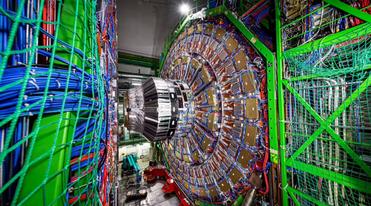
References
The Compact Muon Solenoid (CMS) detector assembly in a tunnel of the Large Hadron Collider (LHC) at the European Organisation for Nuclear Research (CERN), in Cessy, France [9]
http://www.cosmicwatch.lns.mit.edu/about https://en.wikipedia.org/wiki/Muon https://home.cern/news/news/experiments/how-make-your-own-cloud-chamber https://en.wikipedia.org/wiki/Muon_tomography
Images:
[1]https://www.istockphoto.com/vector/standard-model-of-elementary-particles-quarksleptons-gauge-bosons-vector-bosons-gm2091950996-565870662
[2]https://www.shutterstock.com/image-vector/hierarchical-structure-quantum-systemsparticle-hierarchy-2264644473
[3]https://www.researchgate.net/figure/Cosmic-ray-interactions-in-Earths-upper-atmospherecreates-cascades-of-secondary-nuclear_fig1_355104965
[4]https://www.alamy.com/stock-photo-dr-carl-anderson-left-and-seth-neddermeyer-with-theircloud-chamber-87520965.html
[5] https://news.fnal.gov/2018/02/fermilabs-muon-g-2-experiment-officially-starts-up/
[6]https://www.sciencefocus.com/future-technology/how-scientists-are-using-cosmic-radiationto-peek-inside-the-pyramids
[7] http://large.stanford.edu/courses/2016/ph241/yoon1 [8] https://physicsopenlab.org/2016/01/04/scintillation-muons-detector/ [9] https://science.howstuffworks.com/muon.htm
Image and Diagram of a typical scintillation detector for cosmic muons [8]
String theory
Lucy (L6th)
When you hear the word ‘string,’ I’m sure ideas such as the prediction of the graviton or a universe which contains twentysix dimensions or the deepest point in a black hole don’t spring to mind These are just a handful of the endless possibilities which string theory allows us to explore Whether an aspiring physicist, a student who knows nothing about science or a teacher looking for a five-minute break from marking that endless essay pile, by the end of this article you will not deny: string theory is the future of science.
Comprised of billions upon billions of atoms – each of which is made up of subatomic particles, such as the electron or proton –our world has been a marvel since the dawn of time Two solid foundations of physics have been crafted to explain and, more usefully, predict the outcomes of anything and everything in our universe: quantum mechanics and the modern theory of gravity – otherwise known as general relativity However, there is a problem: these two theories don’t exist hand in hand; they are a physicist’s shipped couple that just can’t seem to get together

A depiction of these vibrating ‘strings of energy’, taken from: Roussel, A (2021) String Theory

So, what if I told you a way to solve this issue would be to visualise particles not as tiny, dimensionless points but rather a series of open or closed strings of energy, which vibrate in different ways to create different particles? String theory does just that – and not only do its calculations predict certain vibrating strings to match the behaviours of known particles, like photons, but also particles such as gravitons –‘the gravity particles’ –which could unify general relativity and quantum mechanics, solving the problem that has challenged physicists for over a century
String theory is by no means an incredibly recent discovery of the last decade or so, however its modern developments only date back to the year before the moon landing. Back in 1968, Gabriele Veneziano was aiming to describe the physics behind the strong interactions between particles such as protons and neutrons, when he accidentally discovered that an 18 century mathematical expression called the Euler beta function could describe the collision between two meson particles at extremely high energies.
The Euler beta formula had many properties that physicists needed to incorporate into a fundamental theory – meaning a theory that creates the basis for others, rather than being derived from preexisting theories – of the strong nuclear force However, despite the fact that Veneziano’s paper soared in its popularity with physicists of the time and resulted in the publication of hundreds of further scientific papers, it wasn’t until about five years later that theorists including Leonard Susskind, Holger Bech Nielsen and Yoichiro Nambu separately demonstrated Veneziano’s work as being able to describe the quantum behaviour of strings rather than particles
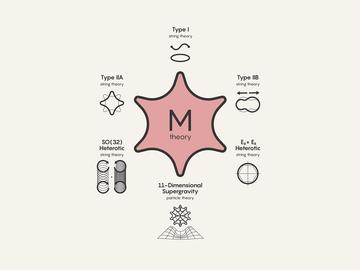
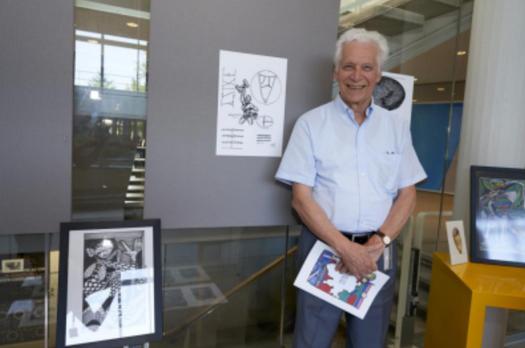
An image of Gabriele Veneziano, photographed at CERN in July, taken from: Chalmers, M (2018) Untangling the origin of string theory, CERN
Types of string theory
Simplified representation of string theory
Incredibly, string theory was, therefore, born when Gabriele Veneziano had been searching for something else and it would be his work, alongside the development of many scientists to come, that would morph our understanding of the world into something extraordinary
Speaking of extraordinary, the propsects of the future of string theory are arguably even more exciting than its past Applications of this way of modelling particles range from designing high-performance materials, like superconductors –which enable energy efficient medical and transportation methods – to exploring dark energy and matter, theorised to amount to around 70% of the total energy and matter in the universe
In our world today, there are a multitude of companies and researchers making use of the applications of string theory Very recently, in February of this year, scientists at the university of Oxford succeeded in developing a breakthrough in quantum computing, which could lay a major groundwork for larger-scale usage of a ‘quantum internet’. The research explored the use of quantum entanglement of particles, which is where two or more particles have correlated states, no matter how far apart they are in distance. This allows for a technique called quantum teleportation: the lightning-fast transfer of data that will fuel the acceleration of quantum computing


A visualisation of how ‘extra’ dimensions could enable quantum entanglement, taken from: Ratner, P (2022) This new equation promises to unify physics theories with the help of wormholes, Big Think
Quantum entanglement ties in with string theory like well, like a string The fact that string theory proposes multiple ‘extra’ dimensions is an incredibly solid way of explaining how and why quantum entanglement happens the way it happens, therefore deepening our knowledge of how we can use quantum entanglement in new technology and what implications this has on our understanding of the universe Really, the possibilities are infinite So, whether an aspiring physicist, a student who, until now, knew nothing about science or a teacher who has finally found a five-minute break from marking that endless essay pile, I hope this article has inspired you to not only appreciate the magnificence of string theory but also to believe that, however small your contribution may be, anyone can change the world – one discovery at a time
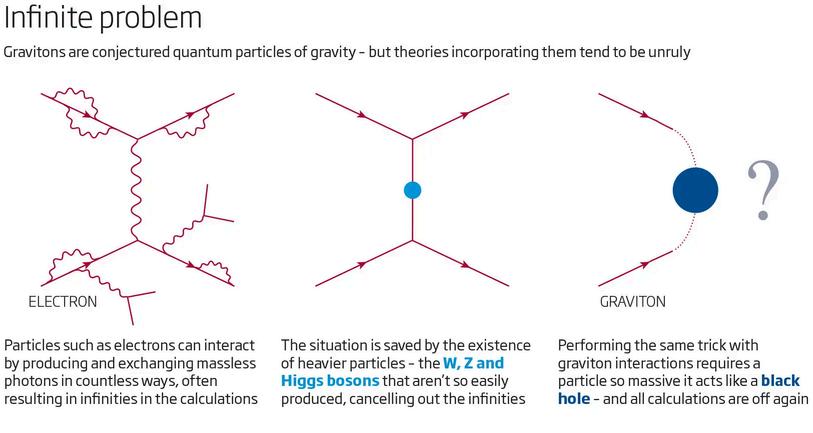
References
Chalmers, M. (2018) Untangling the origin of string theory, CERN. Available at: https://home.cern/news/news/physics/untangling-origin-string-theory (Accessed: 27 January 2025). Engineering.com (2024) String theory underpins quantum mechanics?, Engineering.com. Available at: https://www.engineering.com/string theory-underpins-quantum-mechanics/ (Accessed: 09 February 2025).
Hall Fras, I. (2023) 10 potential uses of string theory in our everyday lives - the average scientist, The Average Scientist -. Available at: https://theaveragescientist.co.uk/2023/06/13/10-potential-uses-of-string-theory in-everyday-life-theoretical-physics-in-action/ (Accessed: 09 February 2025). Puiu, T. (2017) New theory suggests quantum entanglement and wormholes are linked together, ZME Science. Available at: https://www.zmescience.com/research/quantum-entanglement-wormholes 0424/ (Accessed: 09 February 2025). Quantum Inspire (2025) Superposition and entanglement, Quantum Inspire. Available at: https://www.quantum-inspire.com/kbase/superposition-and-entanglement/ (Accessed: 09 February 2025). Ratner, P. (2022) This new equation promises to unify physics theories with the help of wormholes, Big Think. Available at: https://bigthink.com/hard-science/a-new unifying-equationpromises-to-transform-physics-with-the-help-of-wormholes/ (Accessed: 07 February 2025). Rodriguez, R.V. (2023) Strings attached: How the string theory shapes our understanding of the world, Global Leaders Today. Available at: https://globalleaderstoday.online/strings-attached-how-the-string-theory-shapes our-understanding-of-the-world/ (Accessed: 09 February 2025). Roussel, A. (2021) String Theory, YouTube. Available at: https://www.youtube.com/watch?v=n7cOlBxtKSo (Accessed: 12 January 2025). Zimmerman Jones, A. and Robbins, D. (2016) Ten notable string theorists, dummies. Available at: https://www.dummies.com/article/academics-the arts/science/physics/ten-notable-string-theorists-177668/ (Accessed: 09 February 2025).
Euler beta function equation
Gravitons and quantum particles
The physics and ethics of footballs
ShouldtheJabulanifootballbebanned?
Noah (LS2)
Inthe1997WorldCupfinal,Brazilvs France,RobertoCarlos kickedaseeminglyimpossibleshot,courtesyoftheperfectly sphericalJabulanifootball Asaresultofthiswinningshot,the Jabulanifootballwasbanned Isthisreallyrightforthe beautifulgameoffootball?

Methodology
Iranacontrolledexperimenttotesthowtheshapeand smoothnessoftheballimpactsthelevelofairresistanceand trajectoryoftheball

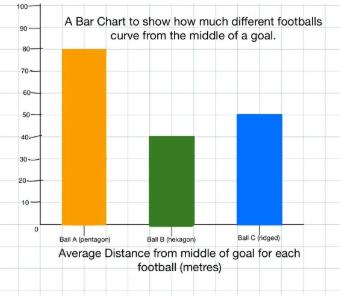
Resultsanddiscussion
Ifoundthattheballwiththeleastairresistance generatedthe mostcurveontheball’strajectory.Therefore,Ihaveproved thattheJabulaniballisanexampleoftheMagnusEffect impactingtheplayers’performances
Conclusionandevaluation
Althoughtheexperimenthasalimitedsamplesize,andI didn’texploreifadifferentfootballplayercouldreplicatethe sameresults;itdoesappearconclusivethatthesmoothnessof thefootballsignificantlyimpactsthegame.
JeremyBentham’sphilosophyofseeking“thegreatestgoodfor thegreatestnumber” impliestheJabulaniballiscorrectto havebeenbannedbecauseitcreatesafaireroutcomeanda moreequalmatchforthewholeteam.Incontrast,AynRand wouldarguethatitismorallyrighttoprioritiseindividual excellence Inmyopinion,allowingtheJabulaniballwould eventuallyletotherplayersfollowonfromRobertoCarlosso thatotherswouldbeabletoperformthisphenomenon
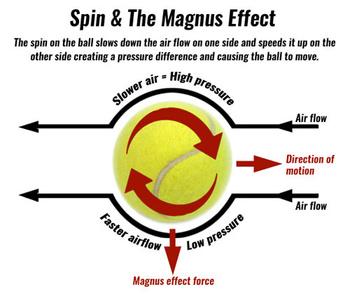
To further prove the impact that a smoother football with less air resistance could have on the quality of a player’s performance, I would improve the consistency of the experiment by using a non-human method to initiate the movement of the ball. This would reduce errors in the data due to different kicks
I would also scale up the experiment across multiple football teams over a season with the assistance of professional football data analytics to increase the sample size and understand other variables.
References
1 Crimmins, J E (2021) Jeremy Bentham, Stanford Encyclopedia of Philosophy Available at: https://plato stanford edu/entries/bentham/#PhiFou (Accessed: 11 May 2025)
2 Rand, A (1964) The Virtue of Selfishness: A New Concept of Egoism New American Library
3 TeachPE com 4.TheGuardian.com
Figure 1 Roberto Carlos takes the winning shot (The Guardian, 1997)
Figure 2. L-R Pentagon tiles, hexagon tiles, ridged footballs
Figure 4 The magnus effect explained Future work
Introduction
Quantum entanglement communicators
James (M)
Quantum physics is the study of the very small, at such levels our understanding of objective reality begins to break down. We begin to enter a world of probability and ghosts One of the most interesting phenomena to emerge from this quantum world is Einstein’s “spooky action at a distance” that being quantum entanglement Out of the many interesting properties of quantum entanglement its potential to facilitate faster than light communication is perhaps the most interesting The feasibility of this is what my poster will be discussing
What is quantum entanglement?
Quantum entanglement is when a pair of particles cannot be described independently [1] This means that if you know the state of one of the particles you therefore know the state of the other Take for example a pair of electrons these electrons are entangled and are of the same energy state. Due to the Pauli Exclusion Principle, which states to put it simply that two electrons at the same energy state can not share the same spin, these two electrons have opposite spin states, one has spin up and the other has spin down However before we measure one of our electrons they are in a superposition between spin up and spin down When we measure one of the electrons it will be forced to chose randomly one of these states and will collapse the collective wave function between the two making the other collapse into the opposite state. The information of these states travel faster than light as proved by the Bell Test [2]
General relativity says no
General Relativity is the study of the Very big and the very fast, at such speeds and sizes time and space become very permeable and subject to change. Because of this one of the defining rules in general relativity is that nothing is able to travel faster than the speed of light This is because the speed of light is also the speed of causality, effectively the speed of time Below, in the 2 diagrams below we can see how breaking this causality can cause issues [3]
Coordination of a QEC
While a QEC (quantum entanglement communicator) might be possible under our current model of quantum mechanics when we get down to the details of setting up our QEC we encounter a problem When the entanglement state collapses the 2 states in which it collapses are randomly determined and then the entangled state is destroyed. Even though we can change the spin state of an electron through the use of magnetic fields it requires multiple measurements meaning that the state will collapse before we can manipulate the electron. Because of this randomness we are unable to transmit any information whatsoever apart from the state of the other electron [4]
Conclusion
In conclusion while our current understanding of physics may prevent us from FTL communication it does not mean that it is impossible For a QEC to work, we would require a method in which we could either manipulate the spin state of an electron without measuring it, or to keep the entanglement throughout the collapse of an electrons wave function If we can develop these methods, if they are even possible then a QEC would be possible In such a case we would either need to contend with the possibility of time travel, rethink the theory of general relativity, or there would be limitation on what a QEC would be able to do and where it could communicate
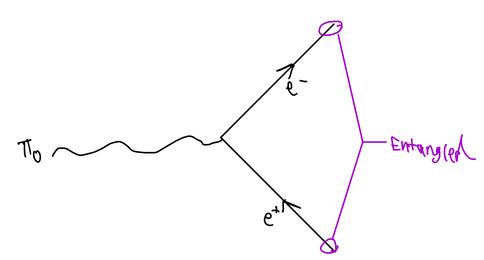
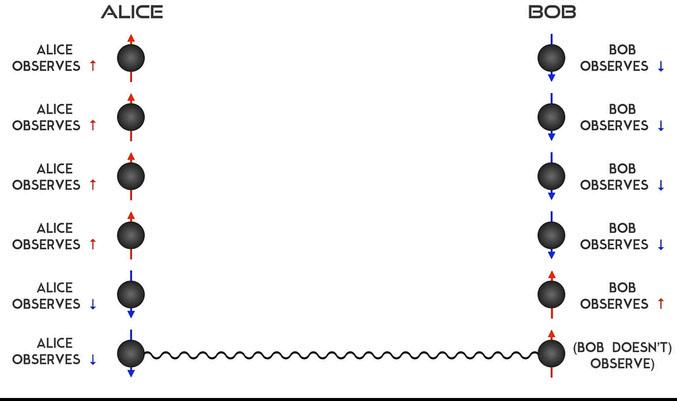

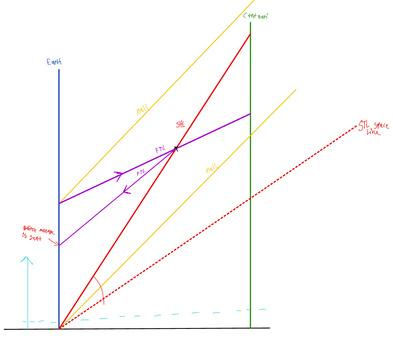
References
1 Horodecki, R , Horodecki, P , Horodecki, M and Horodecki, K (2009) Quantum entanglement Reviews of Modern Physics, 81(2), pp 865–942 doi:https://doi org/10 1103/revmodphys 81 865
2.Gribbin, J. (2011). In Search of Schrodinger’s Cat. Bantam.
3 www youtube com (2022) Why Going Faster-Than-Light Leads to Time Paradoxes [online] Available at: https://www youtube com/watch?v=an0M-wcHw5A [Accessed 4 May 2025]
4.www.youtube.com. (2022a). Does Quantum Entanglement Allow for Faster-Than-Light Communication? [online] Available at: https://www youtube com/watch?v=BLqk7uaENAY [Accessed 13 May 2025]
Figure 1 Pion decay producing an entangled pair of an electron and a positron
Figure 2: Space time diagrams
Figure 3 Shows how 2 ships might communicate with a QED [4]
Exploring equitable space colonisation: addressing inequality and preparing for extraterrestrial identity
Candice
As the space industry enters a new era dominated by actors like SpaceX and NASA, intriguing questions arise: Will commercial space activity overtake scientific missions? Will outer space territories and resources become accessible only to powerful space entities? Anthropologist Peter Redfield argues outer space ‘reflects a practical shadow of empire’, which expresses ‘earthly colonialism’, where powerful nations gain control over territories and populations, leading to exploitation, environmental degradation and long-lasting inequality. This essay argues that without enforceable legal framework and the inclusion of underrepresented nations, space colonisation may replicate Earth’s violent colonial history. To prevent this, space laws must incorporate equity and inclusivity In addition, as humanity establishes settlement in space, Earth must prepare for the possible emergence of extraterrestrial political identities.
Echoes of colonialism among nations and their solutions
The first target for space colonisation is undoubtedly Mars, due to its proximity to Earth and potentially habitable environment Presently, the primary goal of all missions to Mars, including rover, lander, orbiter and flyby, is scientific exploration However, NASA’s Moon to Mars objectives show implicit ambitions to establish the U.S. as the first settler on Mars. They emphasise partnerships with U S industry to support national industrial and technological interests, overlooking the inclusion of less technologically advanced nations.
China also demonstrates similar ambitions: its 2016 white paper stresses establishing the state as a “space power” through science and technology. Government agencies are increasingly framing Mars missions as a form of geopolitical competition, echoing the Cold War between the U S and Soviet Union, during which the U S asserted its dominance in the space industry by being the first to land on the Moon This achievement significantly boosted American economic and technological advancements Hence, it is arguable that powerful entities might similarly dominate future space exploration by being the first to reach Mars, potentially marginalising underrepresented nations and limiting their access to space 5 6
An effective approach to mitigate such consequences is to encourage powerful space nations to commit to principles that adhere to equitable and inclusive space exploration, which prevent any single powerful nation from monopolising space access One such example is the Artemis Accords, a set of international agreements promoting peaceful space exploration and cooperation between space entities, which enforce global collaboration and prohibit military operations in space Nonetheless, since the Artemis Accords were created by NASA, they largely reflect an American approach to global interests, possibly lacking an awareness of global equity While some of the Accord's principles could be adopted for Mars missions, a more equitable framework is necessary A Mars treaty system should therefore be drafted under UN regulation to ensure global equity The Antarctic Treaty System serves as an effective example: with over 50 signatories, the ATS has successfully preserved Antarctica for peaceful, scientific research since 1961 A future Mars treaty could reference the ATS and incorporate similar laws, such as freedom of scientific investigation for all nations (Article II), banning territorial claims (Article IV) and mandating open data sharing (Article III) , creating a framework that prioritises international collaboration over national dominance 8 9 10

Additionally, developing nations should have enhanced participation in UN space bodies to ensure their voices are heard For instance, the COPUOS - a committee where international space cooperation and the use of space technology applications are discussed every year - could reserve a set number of rotating seats for developing countries, allowing them to influence the drafting of global space treaties. Notably, only 22 out of 104 members of COPUOS today are from Africa, even though the continent has over 50 nations This representation gap must be addressed by including more underrepresented nations in shaping space policies. 11 12
Beyond promoting equity through space frameworks, it is also essential to address the technological and economic gap between governmental agencies To date, only six nations have successfully reached Mars, as most countries do not have easy access to space due to insufficient scientific and financial resources. For example, launching services to low Earth orbit by Indian Space Research Organisation's Polar Satellite Launch Vehicle costs approximately $4,500/kg, compared to $2,500/kg by SpaceX's Falcon 9. Such disparity suggests that activities on Mars are likely to be dominated by powerful nations, especially when Mars missions are technologically advanced and extremely expensive. Therefore, major space agencies should support developing countries in space exploration For example, NASA's SERVIR Program provided environmental monitoring assistance and satellite data services to multiple regions across the globe, offering a model for future cooperation regarding Mars 13 14 In addition, international collaboration should be encouraged for Mars missions NASA estimates that a crewed mission to Mars could cost about $500 billion several times the $150 billion cost for building the International Space Station As the ISS was a collaborative effort between 5 space agencies, similarly, the first human mission to Mars will likely require partnerships between multiple entities This could foster equitable access to space, especially if developing countries are included through means such as selecting some of the first crew members to Mars from underrepresented nations 15 16 17
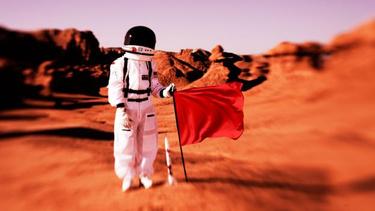
Private institutions and commercialisation in space
The entry of private institutions in space exploration introduces new concerns Ferreira Snyman notes that private companies, benefiting from abundant funding and less political constraint, may reach an outer planet before any governmental agency. They may also establish a monopoly over space resources and access, raising concerns about equity in space Although the Outer Space Treaty - the most influential treaty governing space activities prohibits nations from claiming territory on Mars, it does not apply similar restrictions to private companies This presents the possibility of a public-private alliance for resource exploitation and occupation on Mars, mirroring the East India Company, a state- authorised private corporation that once dominated global trade To prevent resource monopolisation and ensure fair access to space, future frameworks must legally enforce territory and resource restrictions on private entities However, public-private partnerships already exist: for example, NASA has modified its NLS II contract to add Starship - a vehicle designed by SpaceX for mass human transport to Mars to its launch service offerings, opening a pathway for commercial activities on Mars 18 19 20
Hence, the commercialisation of space is another important threat to address China's 2024 Government Work Report stresses the transformation of space into a "new productive force", evidenced by the rise of private entities like Landscape - a company that develop commercial rockets Such emphasis on commercial space activities could lead to the escalation of international competition over the space economy, threatening peaceful collaboration in outer space To migrate this risk, nations should avoid promoting laws and regulations related to the commercialisation of space. Furthermore, in the first-ever allfemale flight operated by Blue Origin, six American civilians orbited Earth 48 times for sight- seeing purposes; five of the crew members had no scientific background. While such missions can promote gender representation and trigger public interest in space, they also signal that companies may focus on high-profile or profit-driven projects rather than scientific research or missions tackling global issues like space debris Future regulatory frameworks should encourage commercial actors to contribute to space exploration and sustainability - for example, by offering tax incentives to companies that integrate scientific goals into their operations
In addition, to reduce the likelihood of commercial domination in space, a data management system could be adopted For example, European Space Agency's blockchain technology uses a distributed ledger to decentralise the data across the network, which could, for instance, provide global access to the status of resources on Mars In addition, it could automatically enforce built-in treaty terms, ensuring entities' compliance with an equitable global space framework. However, the blockchain technology poses challenges Firstly, the cost of maintaining and updating a blockchain-based database would be exorbitant, as billions of interconnected devices would be required to store and transfer data in different locations Secondly, as the cost of data entry into the system can be very low, entities could add 'useless' data into the blockchain to slow down the system and bypass compliance Hence, addressing these issues is essential before blockchain technology can be applied to space data
Could Mars declare independence?
To prepare for human expansion in space, we must consider whether extraterrestrial political identity will arise One common analogy relates space colonisation to colonial America, where early British settlers, due to their distance from Britain and the development of local governance, gradually developed a unique “American” identity that led to the Revolutionary War Anthropologists Valentine and Olson apply this pattern to Mars, arguing that settlers on Mars, while initially remaining loyal to Earth, may gradually come to view themselves as "Martians", and eventually "no longer Earthlings" Much like America, this shift in identity could lead to a declaration of independence
25
26
entities over the resources and territory on Mars, particularly if space treaties fail to prevent such conflicts This is especially critical given that Mars occupies a strategic position between Earth and the outer planets and holds a wealth of resources vulnerable to exploitation
Hqq-Misra outlines a scenario in which major space actors compete over water-ice on Mars - a crucial resource for life support and agriculture - which may result in resource-driven tensions between Earth and Mars Such conflicts could be resolved by implementing protective laws on water-ice and other essential resources on Mars, which should guarantee that an independent Martian Authority has full control over its resources, while enabling equitable trade relations with Earth 28 Notably, unique ethical frameworks may emerge among Martian settlers For example, the extreme environment of Mars - characterised by high radiation levels - could require settlers to genetically modify humans to be better suited to the environment While such measures might be necessary for survival, they would conflict with many ethical principles on Earth. However, since Mars is a separate planet from Earth, it is reasonable to propose a separate legal system on Mars, considering the cultural and environmental needs of a distinct culture.
Martian independence is necessary to avoid a violent repeat of Earth's colonial history, maintain peace and establish practical systems of governance Earth-based entities must respect Mars' autonomy and offer transitional support if needed For example, the COPUOS could draft a Martian constitution prior to independence, which should guarantee that all settlers on Mars have equal rights and responsibilities equivalent to Earth citizens, while emphasising environmental sustainability to avoid replicating Earth's global warming However, Mars should still adhere to international space laws and cooperate with Earth- based space entities to contribute to scientific research In addition, trade must be promoted between Earth and Mars, given the interdependence between the two planets, where Martian settlers rely on technological support on Earth, while Earth benefits from Martian scientific data and potential resources
Conclusion
As human civilisation becomes multi-planetary, we have the responsibility to prevent space colonisation from replicating historical colonialism Without regulation, space colonisation will likely become dominated by powerful entities, marked by resource monopolisation, global inequality and political exclusion Nonetheless, such consequences could be avoided by making space equitable and accessible to all nations, which could be achieved by, for example, applying restrictions to private entities, improving space laws using frameworks like the Antarctic Treaty, and including developing countries into the Mars missions In addition, to prepare for the possible emergence of extraterrestrial political identity, Earth must prepare legal frameworks for outer space settlers from the outset to protect their rights, avoid future conflicts, as well as ensure secure trade and scientific collaboration Equality, peaceful development and scientific integrity must lie at the heart of humanity's expansion into space
References
An independent Mars could indeed create benefits Yuval Noah Harari, in his book Sapiens, notes that "independent states that came after these empires were remarkably uninterested in war", indicating that establishing states could reduce the likelihood of violence Furthermore, permitting Martian independence from the outset could reduce the likelihood of future discontent and a violent declaration of independence, as well as potential conflicts between Earth-based 27
An exploration of the possibilities of childbirth in space
Lucy (LS2)
Introduction
With so much commercial space travel in the future it might happen that human births could occur in space NASA suggests that within the next couple of decades we were to become an multi-planetary species It is a very far-fetched scenario, of course, but it could be possible in the future.

A development of a foetus in space would be extremely dangerous. If this were to happen the mother would need to be prepared to deliver the baby within a vacuum-like atmosphere Once born, the baby would likely have changes in appearance, and managing biological fluids in zero gravity would be complex. Additionally, significant moral and ethical concerns must be considered

Appearance
The baby born in space would look distinctly different to Earthborn humans due to their muscles developing differently in a zero gravity environment Leg and arm muscles develop under gravitational stress which does not exist in space Without full development, a baby’s muscles would not function, particularly if they were to come to Earth Not having stress on the body makes pumping blood around the body easier However, if the baby came to Earth, the heart might struggle with the increased gravitational stress which could be life-threatening The only way around this dilemma is for babies born in space to remain in a low gravity environment, like Mars, and never visiting Earth.

Similarly, bones would develop differently as, like muscles, bones need gravity to grow While they would still grow, gravity is needed to strengthen them, for their density and correct placement within the body. There would be a variety of effects on the different bones
That being said, hand development is said to remain the same! A positive aspect would be that the skull might be stronger and thicker; the lack of gravity allows blood to flow more easily However, with increased blood flow comes increased pressure which could potentially cause damage
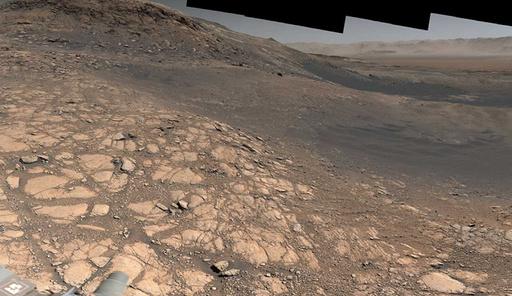
Conclusion
While currently challenging, a number of organisations are exploring the possibility of childbirth in space, with the ultimate goal of establishing self-sustaining human colonies on other planets, such as Mars. Scientists are focusing on overcoming challenges related to radiation exposure, microgravity, and the physiological effects of having a baby in space. In conclusion, anything can happen in the future, particularly with the rapid technological improvements and innovations, meaning human childbirth in space could potentially become a reality.
References
• (2016) What would happen if you were born in space? Labmate Online Available at:
https://www labmate-online com/news/news-and-views/5/breaking-news/what-would-happen-if-you-wereborn-in-space/39646
https://www sciencedirect com/science/article/pii/S1110016825004211
• (2016) How would a baby fair being born in space? r/space Available at: https://www reddit com/r/space/comments/43hegw/how would a baby fair being born in space/
International Space Station Overview - NASA
NASA Space Shuttle
Estimated skeleton of a human born in space and a skeleton of a human born on Earth
Mars’ surface
Bits and pieces about black holes -
The ultimate vacuum cleaner!
Candice (V)
Introduction
If you have ever watched Interstellar, you will remember the scene where Cooper falls into a black hole and somehow survives, ending up in a strange place called the Tesseract But in reality, if you fell into a black hole, you would not survive You would be torn apart long before you even reached the inside
So what actually happens inside a black hole? What even is a black hole? Can they die, or will they last forever? This article will help you understand these questions
What is a black hole?
A black hole is a supermassive object in space where the gravity is so strong that not even light can escape According to Einstein’s theory of general relativity, the massive gravity bends space-time so much that anything that crosses a certain point, called the event horizon, is trapped forever.
Black holes appear completely black because no light can escape from them However, when you look at images of black holes, you might notice a glowing ring around them This is not the black hole itself glowing but an accretion disk This is gas and dust getting pulled in, heating up, and emitting light.

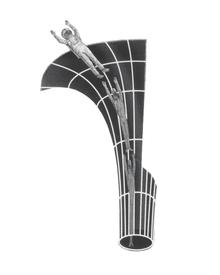
A bit of background
The idea of black holes dates back to the 1700s when scientists like John Michell and Pierre-Simon Laplace suggested that some stars could be so dense that not even light could escape their gravity In 1915, Einstein’s theory of general relativity provided a deeper understanding of how gravity works. Soon after, Karl Schwarzschild solved Einstein’s equations and described what we now call a black hole
It was not until 1967 that the term “black hole” was first used by physicist John Wheeler The first real evidence of black holes came in 1971 with the discovery of Cygnus X-1, a strong X-ray source likely caused by a black hole pulling in material from a nearby star The first actual image of a black hole was taken in 2019 by the Event Horizon Telescope.

References

Hawking,S.W.(1988).ABriefHistoryofTime:FromtheBigBangtoBlackHoles.BantamBooks. "FirstM87EventHorizonTelescopeResults.I.TheShadowoftheSupermassiveBlackHole."The AstrophysicalJournalLetters,875(1),L1(2019).
Frank,J.,King,A.,&Raine,D.AccretionPowerinAstrophysics(3rdEdition).CambridgeUniversity Press,2002.
Schwarzschild,K.(1916)."ÜberdasGravitationsfeldeinesMassenpunktesnachderEinsteinschen Theorie".SitzungsberichtederKöniglichPreussischenAkademiederWissenschaften,7:189–196. Wheeler,J.A.(1968).SpacetimePhysics.W.H.FreemanandCompany
What makes up a black hole?
At the center of a black hole is something called a singularity This is a point where gravity is so strong that space-time is bent infinitely, and all the mass is squeezed into an infinitely small space Scientists do not fully understand what happens here because the laws of physics break down.
Another key part of a black hole is the event horizon This is the boundary around the black hole where the gravity is so strong that nothing can escape, not even light Once something crosses this point, it is lost forever
Formation of a black hole
Most black holes form when a massive star runs out of fuel and collapses under its own gravity. If the star is big enough, this collapse continues until it becomes a black hole
There are also supermassive black holes at the centers of galaxies, including our Milky Way These black holes have millions or even billions of times the mass of the Sun and grow by pulling in gas, stars, and even other black holes
Spaghettification - wait what?
If you were to fall into a black hole, you would not just drop in You would be stretched out like spaghetti in a process called spaghettification The gravity at your feet would be much stronger than at your head, pulling you apart Eventually, you would be completely torn to pieces before ever reaching the singularity
Hawking radiation
Yes, black holes do not last forever In 1974, Stephen Hawking discovered that black holes slowly lose energy through something called Hawking radiation Over time, this causes them to shrink and eventually disappear However, this process is incredibly slow. Black holes the size of the Sun could take around 10 years to fully evaporate 67
Something left for you to think about: the information paradox
There is still a lot we do not understand about black holes One of the biggest mysteries is the information paradox. When something falls into a black hole, what happens to the information about it?
According to quantum mechanics, information can never be destroyed But if a black hole evaporates and disappears, what happens to the information that was inside? Some scientists think the information might be stored in the Hawking radiation, but this is still an open question in physics
A black hole (left) and astronaut falling into a black hole (right) (schematic illustration of the spaghettification effect)
Representations of the effects of black holes
Maths and AI
Mathematics and Palladian architecture: Villa Saraceno
Demetrios (R)
Introduction
Mathematics and architecture are fields that seem to be weakly connected, since architecture is related to designing and building while mathematics uses numbers to discover and organise methods, theories and theorems The project raises the importance of algebra and geometry to design forms that are considered beautiful and harmonious using as a case study Villa Saraceno in Vicenza, Italy built in 1540s
Methodology
The geometrical rules governing Villa Saraceno’s plans and facades will be explored and analysed against the ‘ideal shapes’ based on proportions
Results and discussion
Villa Saraceno’s plan is an articulation of squares and rectangles following ratios 1:1, 4:3, 3:2, 5:3, 3:1 and the golden rectangle The main elevation is a composition of squares and rectangles following similar ratios to the plan Additional simple forms such as circles and semicircles have been added The pilasters or columns are placed rhythmically along the entire front elevation.
Conclusion and evaluation
Villa Saraceno is one of Palladio’s most significant early works. Its architectural drawings are based on artful compositions of geometric proportions leading to a ‘pleasing harmony’ Its architecture reflects the view that the beauty of Palladian architecture is based on mathematical precision Palladio’s work have been the subject of studies for several decades. There are two leading schools of analysis of Palladio’s designs: The first is the ‘Architectural Principles in the Age of Humanism’ focusing on Palladio’s theory of proportions and harmony by studying ratios resulting from the irrational square roots of two and three The second determines the formulas and rules for computer generation of villa plans following Palladio’s archetype. Even though, their studies approach Palladian architecture from a different perspective, they both use maths to study and analyse its architectural language to capture its beauty
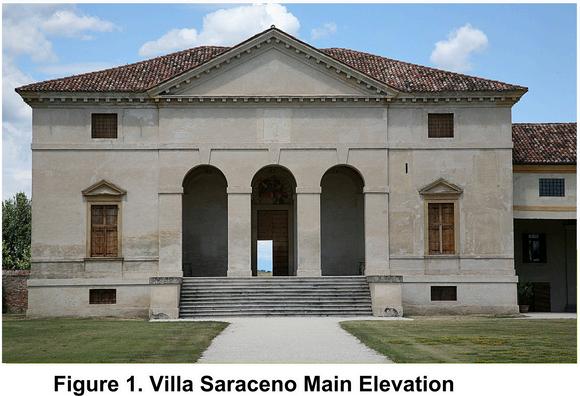
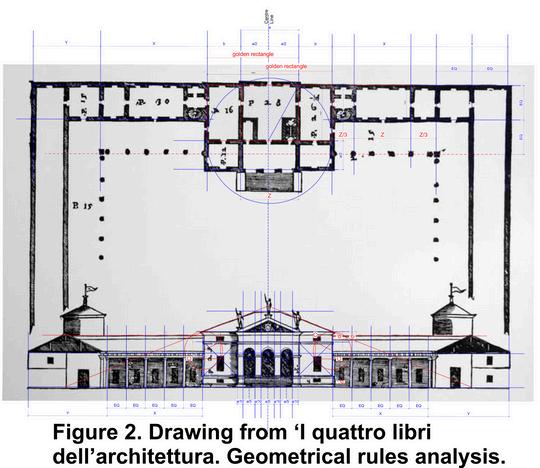
Future work
Palladianism became an approach to architecture characterised by symmetry and strict proportion that gained popularity in the 16 century and came to dominate England’s elite architecture in the 18 century Although not directly, the main buildings of Haileybury College designed by William Wilkins were heavily influenced by classical architecture including Palladianism celebrating the principles of proportion and harmony in order to create mathematical beauty weaved within the everyday life of the schools community th th
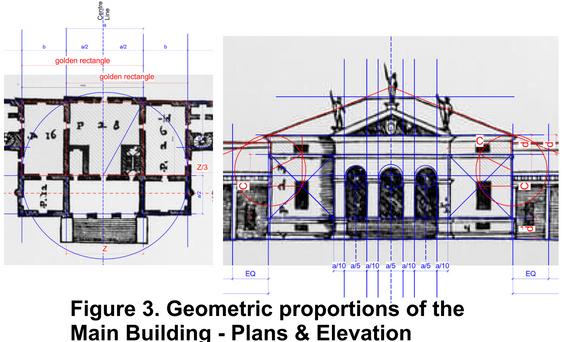

by Morris Hicky Morgan, 1914, The Project Gutenberg,
Introduction
AI in biology: AlphaFold
Scarlett (M)
My project focuses on AlphaFold, which is a powerful AI, created by Deepmind, a company owned by Google AlphaFold solves the ‘Protein-Folding Problem’, where it often takes scientists years to figure out just one protein structure. AlphaFold solved this problem by the use of AI to accurately predict how proteins fold in minutes AlphaFold1 was discovered in 2018.
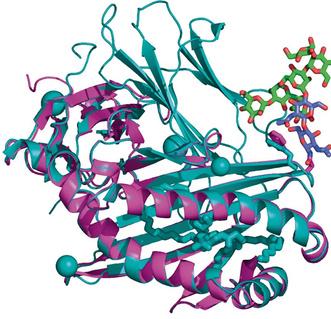
HowdoesAlphaFoldwork?
Proteinsaremadeofaminoacidslinkedinachainthatfolds intoaunique3Dshape,determiningitsfunction AlphaFold wastrainedonthousandsofproteinswithknownshapesfrom pastexperiments Itlearnedpatternsbetweensequencesand shapesusing‘deeplearning’Itusesaneuralnetwork,modelled onthehumanbrain,toanalyserelationshipsbetweenamino acidsandpredictdistancesandangles,creatingalikely3D structure Itgiveseachpredictionaconfidencescoretoshow howreliabletheshapeis Thefinal3Dmodelisoftenas accurateasexperimentaldatabuttakesminutesinsteadof yearstoproduce
HowhasAlphaFoldaffectednewproteinstructuresfound?
ThisgraphshowshowsinceAlphaFold2wasintroducedin2021 the amount of new protein structures discovered rapidly increased showing how much AlphaFold has sped up the processoffindingnewproteinstructures

References
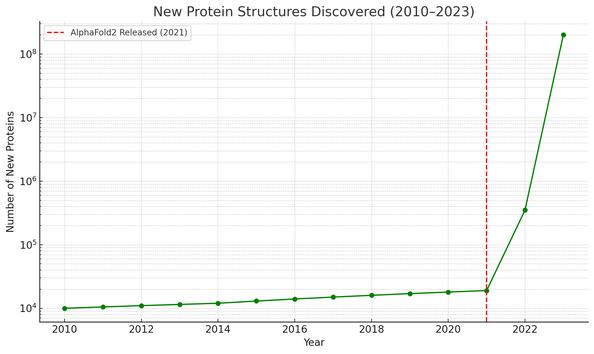
Conclusion and evaluation
This graph demonstrates a sharp rise in the number of protein structures identified following the release of AlphaFold2 in 2021 Before this, protein discovery relied mainly on timeconsuming and expensive methods like x-rays and crystallography AlphaFold revolutionised the field by using AI to predict protein structures quickly and accurately from amino acid sequences. Since its launch, AlphaFold has predicted over 200 million proteins, covering nearly all known proteins in the UniProt database. This information has been made available to scientists from around the world.
AlphaFold has greatly accelerated biological research by removing the ‘Protein-Folding Problem’. Its high accuracy has enabled scientists to understand diseases, developing new drugs and advancing biotechnology. However AlphaFold still needs experimental validation in some complex cases and it may struggle with certain protein types.
Future work - How is AlphaFold developing?
AlphaFold has been able to transform scientific research In the future, AlphaFold could combine with other AI systems to enhance its predictive power, this could lead to understanding more complex protein structures
However, there are challenges, this includes the need for improved accuracy in predicting complex protein structrues and ensured broad accessibility for scientists across the world Despite these difficulties, AlphaFold suggests a future where AIdriven tools are used to enhance biological research offering opportunities to understand more complexities of life at the molecular level
1) AlphaFold (2022b) AlphaFold Protein Structure Database [online] alphafold ebi ac uk Available at: https://alphafold.ebi.ac.uk/ [Accessed 10 May 2025].
2) Google Deepmind (2020) AlphaFold [online] Google DeepMind Available at: https://deepmind google/technologies/alphafold/ [Accessed 12 May 2025] 3) Alphafoldserver.com. (2024). AlphaFold Server. [online] Available at: https://alphafoldserver com/welcome [Accessed 15 May 2025]
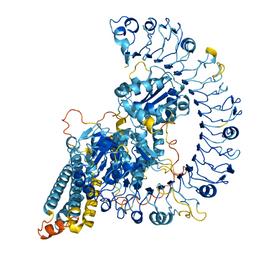
Protein structure discovered by AlphaFold
Key stages of how AlphaFold works
Change in new protein structures found since AlphaFold2 was introduced
Protein structure discovered by AlphaFold
Introduction
Can AI redesign IVF?
Lyla (M)
Artificial Intelligence (AI) is transforming how in vitro fertilisation (IVF) is performed By analysing images and patient data, AI helps doctors select viable embryos and assess sperm quality more objectively It can also predict pregnancy likelihood based on medical history and hormone levels These tools enable faster decisions, but their use in fertility care raises ethical concerns, bias, and responsibility
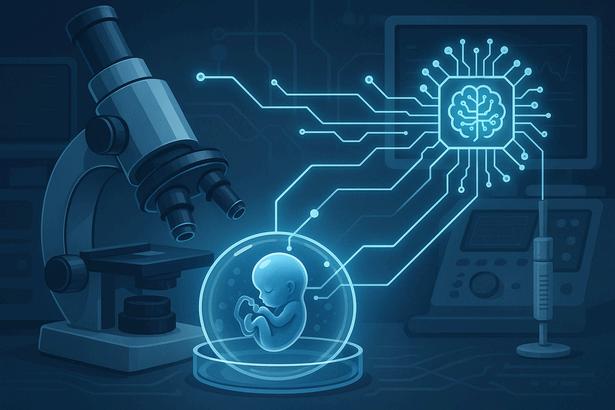
How is AI improving IVF
AI is used in IVF to assess embryo quality through time-lapse imaging, analyse sperm morphology and motility, and predict the chances of successful implantation. It processes large datasets to support more accurate and consistent clinical decisions
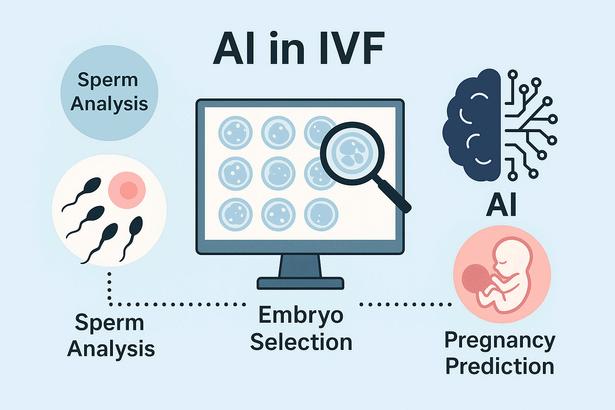
Future work
To ensure ethical use of AI in IVF, collaboration with policymakers, medical regulators, and developers is essential Clear guidelines are needed to safeguard against misuse, protect patient autonomy, and align AI tools with clinical and societal values. Public education will also be key to building trust and transparency
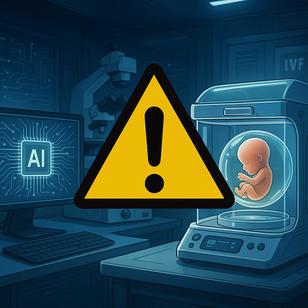
AI could reduce the high cost of IVF by improving success rates and reducing failed cycles. In the UK, one cycle can cost between £3,500 and £7,000, often requiring multiple attempts This makes treatment unaffordable for many Greater efficiency could make fertility care more accessible, equitable, and cost-effective
Conclusion and evaluation
AI has the capacity to redesign IVF by replacing manual assessments with data-driven precision across each stage of treatment From selecting embryos to analysing sperm and predicting outcomes, AI introduces greater consistency, accuracy, and personalisation It allows clinicians to base decisions on large-scale data rather than individual judgement, improving success rates and reducing the emotional and financial strain of failed cycles.
However, a full redesign requires more than improved tools. The use of AI in embryo selection raises concerns about bias, equity, and long-term societal impacts Questions remain about how transparent these systems are, whether patients understand their role, and who is responsible when predictions fail If developed responsibly and implemented with strong safeguards, AI could shift IVF from a reactive procedure to a more reliable and form of fertility care
References
Fakhry, J , Raef, B , Fakih, M and Bitar, L (2024) Artificial intelligence in male fertility assessment: Accuracy and consistency in sperm morphology and motility analysis Frontiers in Reproductive Health, 4, 1520919 Available at: https://www frontiersin org/articles/10 3389/frph 2025 1520919/full (Accessed: 8 May 2025)
Kort, J D , Wing, K , Shohat-Tal, A and Behr, B (2023) Fully automated artificial intelligence-based embryo selection: First live birth from AI-ranked embryo Human Reproduction Open, 2023(3), hoad031 Available at: https://academic oup com/hropen/article/2023/3/hoad031/7234076 (Accessed: 8 May 2025)
Results
In 2023, the first baby was born from an AI-selected embryo, with studies showing over 20% improvement in embryo ranking accuracy Sperm analysis using AI has reached 92% consistency, while misdiagnosis rates and IVF cycle times have also decreased
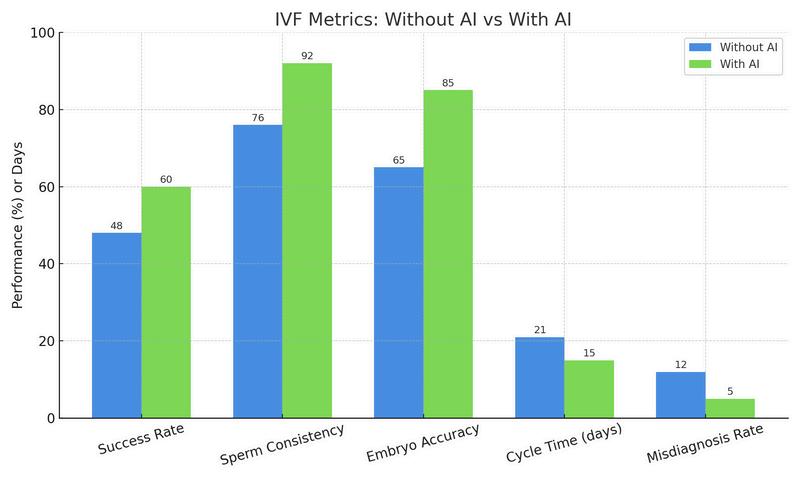
Figure 1. AI supports embryo analysis
Figure 2 AI in IVF process
Figure 3 IVF outcomes
Figure 4 Embryo selection sparks debate
The role of mathematics in solving crimes
George (L6th)
Introduction
Picture this. You find yourself back in GCSE maths; circle theorems, Sin, Cos, Tan. I prompt you to imagine those lessons where you would think to yourself ‘when is this ever used in real life’ Crime is a perfect example of this Crime-solving has taken extreme advancements in technology, which has therefore allowed for much higher degrees of accuracy in not only recreating the events that occurred in the crime but aiding in solving it. Mathematics plays a part consistently from analysing crime scenes to detecting fraud - mathematical principles help law enforcement agencies make precise, data-driven decisions In the UK there is an average of 9 2 million headline crimes per annum; each case individually will use an aspect of mathematics This essay will not only explore how mathematics is applied in different aspects of crime-solving but open your eyes to a part of everyday life that you may not have been previously aware of
In the 1800s, crime-solving was an uncertain art, relying almost entirely on witness testimony If no one saw the crime, the case often remained unsolved, leaving justice to the whims of chance However, in the modern era, mathematics has revolutionised forensic science, transforming investigations into precise, data-driven pursuits. From analysing blood spatter to tracking cybercriminals and even predicting crimes before they happen, mathematics has become an unseen but powerful detective, uncovering truths that human intuition alone could never decipher. One of the most striking applications of mathematics in forensics is blood spatter analysis A crime scene may appear chaotic, but within the blood patterns is a much more simple process than first inspection one that trigonometry can reveal with astonishing accuracy. By analysing the angle, trajectory, and velocity of blood droplets, investigators can determine where the victim was positioned, how far the blood traveled, and even the type of weapon used
This technique proved vital in The Sam Sheppard case in 1954, In 1954, Dr Sam Sheppard, a neurosurgeon from Ohio, was accused and convicted of murdering his wife, Marilyn Sheppard, in their home. The prosecution painted him as a violent husband who had brutally beaten his wife to death However, Sheppard maintained his innocence, claiming that an intruder had entered their home and attacked his wife while he was asleep With little physical evidence and no eyewitnesses to back his claim, the trial relied heavily on circumstantial evidence, leading to his conviction Years later, in the 1960s, renowned forensic expert Dr Paul Kirk re-examined the crime scene using blood spatter analysis By applying basic trigonometry, he analysed the bloodstains and concluded that the killer had been standing over Marilyn at the time of the attack The angle and trajectory of the blood patterns showed that Sheppard was not in the correct position to have committed the murder. Furthermore, the analysis suggested that the attacker had likely been lefthanded, whereas Sheppard was right-handed This evidence directly contradicted the prosecution’s case This portrays itself perfectly as a harsh reminder of how crucial precision is in the pursuit of justice in which mathematics pairs so perfectly with.

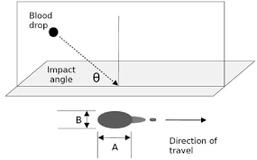



Blood spatter analysis using impact angles
Dr Samuel Sheppard’s mugshot
Blood splatter analysis using triganometry
Close-up of blood spots on wardrobe door
Clothes used in blood experiments
On November the 22nd 1953 John F Kennedy was assassinated by Lee Harvey Oswald, from a sixth-floor window of the Texas School Book Depository, firing the shots using bolt action rifle However, the case has been surrounded by controversy, with alternative theories suggesting multiple shooters. However this controversy was easily debunked by the use of maths displaying the trajectories, distance and the velocity of the bullet at the time Mathematicians and forensic experts became detectives in their own right, using trigonometry and geometry to unravel the events that occurred behind the gunfire that shook America at the time Using Kennedy’s motorcade through photographs and the infamous Zapruder film, investigators dissected every possible angle, tracing the bullets’ origins with levels of extreme precision The bullet trajectory is assessed and calculated via the assumption of a curved path follows it being being fired
The bullet is heavily influenced by physics and governed by mathematical principles, especially from kinematics and projectile motion When a bullet is fired, it initially travels in a straight line, but gravity and air resistance act on it, pulling it downward and slowing it over time. The path it follows is a parabola, which can be modeled using quadratic equations. The Warren Commission, tasked with piecing together the truth, leaned heavily on these calculations, mapping the deadly trajectory back to the Texas School Book Depository, where Lee Harvey Oswald was said to have been perched The grim mathematics of the assassination entry and exit wounds, bullet velocity, and impact points formed a chilling equation, one that pointed to a lone gunman firing from above. The use of intense interrogation and such precise maths allowed for a quick conviction
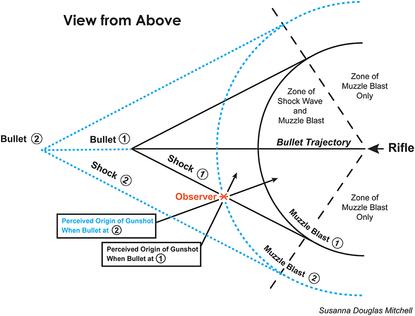
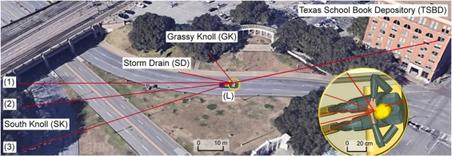

A final example of where maths plays a vital role in solving crime is in the use of Cryptography. Cryptography is the process of hiding or coding information so that only the person a message was intended for can read it Although potentially being quite an obscure subject, cryptography plays a crucial role in both securing and investigating digital communications; even more so in the modern cyber era we find ourselves living in. Cybercriminals often use encryption to conceal their messages, making it difficult for law enforcement to detect or interpret their plans To counter this, investigators and cryptanalysts apply mathematical techniques to break these codes and reveal the hidden content
One of the most significant historical examples of this is Operation Venona, a U S counterintelligence program conducted during the 1940s and 1950s During this operation, American cryptanalysts intercepted and decrypted encrypted Soviet communications using complex mathematical analysis. Their work uncovered extensive espionage activities by Soviet agents operating in the United States, providing critical insights during the early Cold War period Although this is potentially quite dissimilar to modern day cyber crimes it allowed for a precedent to be set and the groundwork laid for the advanced systems used today
This particular case highlights how mathematical methods in cryptography can be powerful tools for national security and intelligence gathering To give a more relatable example of this: law enforcement agencies have faced large challenges decrypting messages sent through end-to-end encrypted platforms such as WhatsApp or Signal, which are often used by criminal and terrorist groups To be specific in this case; in the investigation of the 2015 San Bernardino terrorist attack, the FBI struggled heavily to access data on the attacker’s encrypted iPhone This difficulty caused a spark for national debate over privacy versus security and quite clearly highlights the modern difficulties investigators face when encrypted technologies are used for malicious purposes.

To conclude all stated thus far, It is fair to say that undoubtedly mathematics is an indispensable tool in crime detection and prevention Whether it is reconstructing crime scenes, tracking cybercriminals, predicting criminal behavior, or detecting financial fraud, mathematical principles help law enforcement agencies solve cases more efficiently and accurately protecting the every day person with the same tools they learn in school Realworld cases demonstrate how math has played a crucial role in bringing criminals to justice As technology continues to evolve on a daily basis, the role of mathematics in crime-solving will only become more significant, ensuring that justice is served through precise and datadriven investigations
References
https://www mathscareers org uk/how-mathematics-helps-solve-murders/ https://spark.parkland.edu/cgi/viewcontent.cgi?article=1120&context=ah https://plus maths org/content/solving-crimes-maths https://science howstuffworks com/bloodstain-pattern-analysis3 htm
A diagram of the muzzle blast and the shock wave associated with a gunshot from a rifle firing supersonic bullets
Computational ballistic analysis of the cranial shot to John F Kennedy
Verona project
From theory to reality with artificial intelligence
Agastyaa (L6th)
AI or Artificial Intelligence has slowly integrated itself into our world and lives It is no longer just part of science fiction movies or the future, but instead is revolutionising the foundation of society From interacting with phones to customising social media feeds, AI is doing the all encompassing work tirelessly and constantly
As technology continues to advance, it is important to understand the need for and uniqueness of AI in our daily lives AIs truly have changed how we communicate, or learn about the world. So, having a basic understanding of how AI works and of its uses is increasingly important
Artificial Intelligence is the development of computer systems that can perform tasks usually requiring human intelligence These tasks include recognising speech, interpreting images, solving problems, and even making decisions. At the core of AI are algorithms which are structured sets of rules or instructions that guide machines to perform specific actions
Modern AI systems use a process called machine learning, a technique where systems improve by learning from data For example, an AI model trained to recognize handwritten numbers is shown thousands of examples until it learns to detect patterns on its own The more data it sees, the better it gets at making accurate predictions.
A more advanced method, deep learning, uses layered networks modeled after the human brain called neural networks to process complex data like images or natural language Today’s AI is considered narrow AI because it's designed for specific tasks, like language translation or facial recognition. General AI, which could reason and perform all tasks like a person, is still a concept for the future
But even in its current form, AI is already proving to be incredibly powerful and influential
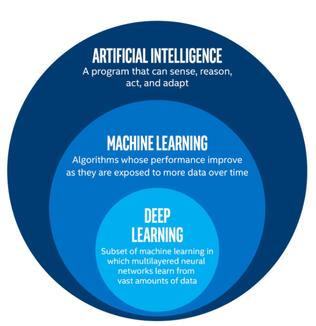
AI is integrated into technology most people use daily, especially smartphones Voice assistants like Siri and Google Assistant use natural language processing (NLP) to understand spoken words and respond accordingly They convert speech to text, analyze the intent behind a question, and search for the best answer, often in a matter of seconds.

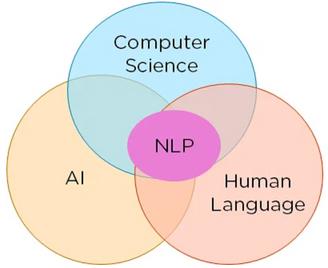
Smartphone cameras use computer vision to detect faces, adjust lighting, and apply real-time filters AI recognises scenes, enhances photo quality, and even applies depth effects in portrait mode by separating the subject from the background Social media platforms like Instagram, TikTok, and YouTube use recommendation algorithms that study a user’s behavior (what’s watched, liked, or skipped) and personalise content feeds These systems are constantly learning and updating suggestions to better match user interests The same approach is utilised in platforms like Netflix and Spotify, which tailor entertainment choices based on previous interactions
Even seemingly simple tools like autocorrect and spam filters rely on machine learning They’ve been trained on vast amounts of text to predict common typos and detect suspicious emails Without needing to see it, we interact with AI countless times a day.
In education, AI is changing how students learn and how teachers manage classrooms. One of the most prominent uses is adaptive learning where platforms analyse how students answer questions and then customise lessons based on their performance. This helps students learn at their own pace and focus more on their weak areas
Online learning platforms often use algorithms to provide instant feedback, suggest practice problems, or recommend review materials Apps like Duolingo track mistakes and adapt to the user’s level automatically using built-in machine learning models
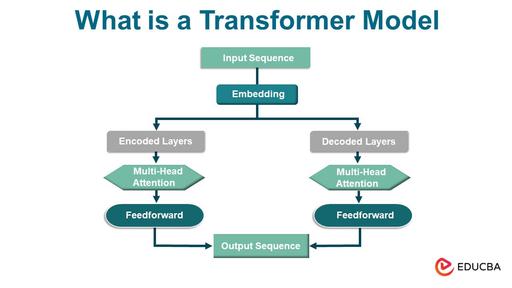
Transformer architecture
AI-powered writing assistants, coding helpers, and math solvers, like ChatGPT, Grammarly, or Photomath, have become common study aids These tools use transformer-based models that analyse context and generate useful responses or explanations
By integrating AI into education, learning becomes more personalised and efficient, opening up new possibilities for both students and teachers
Cousins of AI
ConstituentsofNLP
ApplicationsofNLP
Beyond conventional uses, AI also fuels creativity and entertainment
Generative AI models like DALL E can create art based on short prompts, while tools like ChatGPT can write stories and poems. These tools rely on deep learning and massive training datasets to generate original content that mimics human creativity In apps and games, AI uses facial recognition and audio processing to incorporate features like face filters, voice changers, and virtual characters.
Video games use AI to control non-player characters (NPCs) that react intelligently to players’ actions, making the gameplay more immersive. Some games even use procedural generation, where AI creates entire worlds or levels on the spot. AI can even be used to create music through music generation tools and remix apps While AI brings many advantages, it also raises important concerns One major issue is job automation AI systems can handle repetitive or rule-based jobs very efficiently and tirelessly, reducing the need to employ workers. At the same time, new jobs are being created in AI development, data analysis, and ethics
Another concern is algorithmic bias. If an AI is trained on biased or unbalanced data, it can make unfair or inaccurate decisions. The rise of deepfakes (AI generated fake videos or voices) is another growing issue While some are used for fun, others could be used to spread misinformation or impersonate public figures
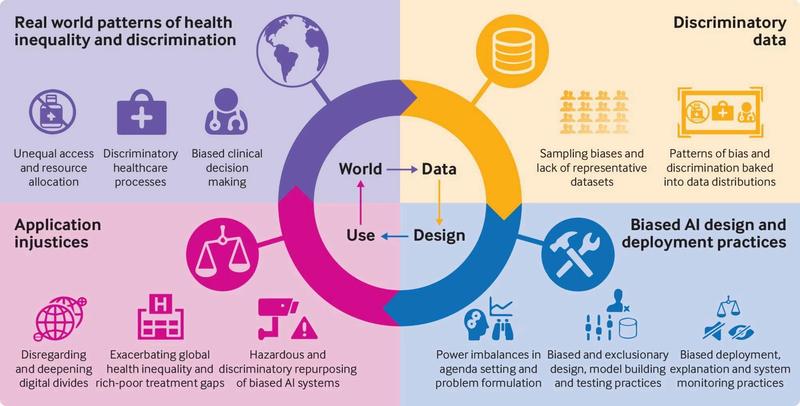
Ridding
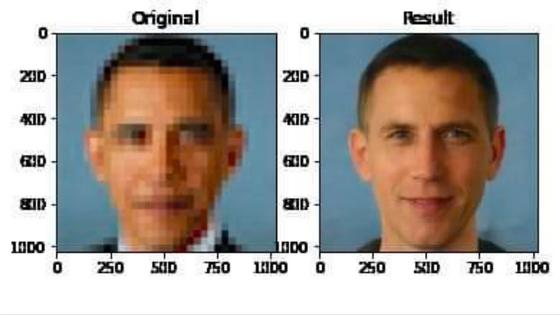
To ensure AI is used safely and ethically, researchers and governments are working on clear guidelines and policies. Understanding how AI works is the first step in protecting against its risks while benefiting from its potential
Artificial Intelligence is already a key part of daily life, silently powering the tools and platforms people use every day. From helping personalise learning to enhancing creativity and simplifying communication, AI is present in almost everything we use
It’s built on interesting technologies like machine learning, neural networks, and natural language processing, but what truly matters is how it's applied AI can be used for great things, or it can be misused, depending on how people choose to develop and interact with it The better we understand AI now, the smarter we’ll be in shaping the future it creates
References
https://medium.com/data-science/cousins-of-artificialintelligence-dda4edc27b55 https://eicta.iitk.ac.in/knowledge-hub/artificialintelligence/natural-language-processing-nlp-and-its-role-inadvancing-conversational-artificial-intelligence/ https://www.educba.com/transformer-model/ https://www.ibm.com/think/topics/transformer-model https://www.weforum.org/stories/2021/07/ai-machine-learningbias-discrimination/ https://medium.com/data-science/how-are-algorithms-biased8449406aaa83
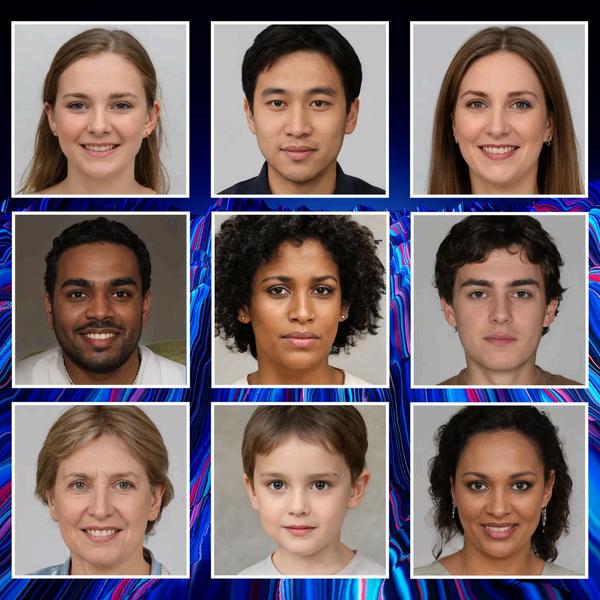
AI and machine learning of bias involves taking their many uses into consideration
A depixelated picture of Obama upsampled to a picture of a caucasian male
AI-generated faces are becoming worryingly realistic - none of these people actually exist they are just made by a computer
Digital technology and democracy:
From deepfakes to disinformation
The turn of the 21 century saw the advent of social media and digital communication technologies that fundamentally altered the ways in which citizens engage with politics Barack Obama’s digital campaign in 2008 was an early example of the potential of social media to instate ‘underdog’ candidates into political office. Since then, politics and digital technology have become increasingly intertwined, with social media campaigning becoming a key part of candidates’ election toolkits in democracies across the globe. This article aims to assess the effect of social media on democracy by examining its usage in political campaigning, communication, and activism

Social media campaigns: targeted advertising and fundraising
There is growing evidence to suggest that social media has become an invaluable tool in political candidates’ campaign strategy. Although many point to Obama’s 2008 victory as an exemplar for how campaigns can harness the power of social media to target voter demographics and facilitate fundraising, his campaign was not the first to do this, with Democratic predecessor Howard Dean similarly using the Internet to galvanise voters in 2004 (Hamilton, 2011). Both Obama and Howard were relatively unknown prior to announcing their candidacies, and their use of social media to mobilise support points to its effectiveness as an equaliser that provides both newcomers and incumbents with platforms to amass a following (Yildirim, 2020). While Obama’s 2012 campaign popularised political micro-targeting, the practice of delivering tailored campaign messages to voters through online channels, Donald Trump’s 2016 campaign is thought to have established it as ‘standard’ practice (Gibson, Bon and Dommett, 2024), allegedly paying data mining firm Cambridge Analytica more than $6 million to curate political ads targeted at specific demographics (Times of Israel Staff and Associated Press, 2018). Contradictorily, a 2022 study contests the ‘popular narrative’ that social media platform Twitter (now X) played a ‘decisive’ role in electing Trump, finding that Twitter lowered Trump’s vote share during the 2016 primaries and decreased his approval ratings while increasing Hillary Clinton’s.
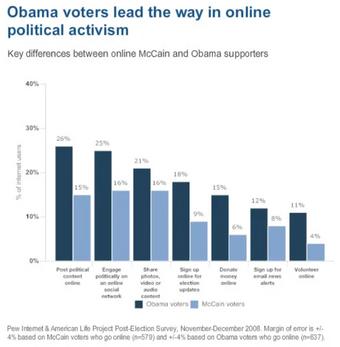
The study suggests that the pro-Democratic, left-leaning slant of Twitter users insulated them against Trump’s campaign messaging, whilst Trump’s core support base, older white voters without a college education who reside in rural areas, are among those least likely to actively use social media, meaning they were not affected (Fujiwara, Müller and Schwarz, 2022) Another factor inhibiting the effectiveness of social media campaigning is the algorithmic generation of echo chambers that reinforces one’s existing beliefs, meaning voters who are being targeted by a candidate’s campaign based on the ideological slant of their personal data are already more likely to vote for said candidate due to their biases (Maryville University, 2022) It is this phenomenon, coupled with the still-prominent influence of traditional media among older voters who are the most likely demographic to vote, that underpinned the electoral failures of Jeremy Corbyn’s Labour Party in the 2017 and 2019 UK general elections, employing a digital approach that aimed to mobilise young voters but instead produced the party’s worst vote shares since the 1930s (Walsh, 2024)
While these examples indicate that social media may not be as effective in political campaigns as general consensus posits, it is undeniable that social media campaigns do have some impact, as evidenced in the Biden and Harris campaign spending $140 million on Facebook and Instagram advertising in the one-year period leading up to the 2024 Presidential election (ElectionGraph Final 2024 Report, 2024) Harris was able to raise a ‘recordbreaking’ $81 million donations in one day after musician Charli XCX endorsed her on Twitter (Demopoulos, 2024), displaying the power of social media as a tool for political fundraising through grassroots movements that enable candidates to reach diverse voter demographics (Whelan, 2021). The ease with which information can be disseminated on social media to the masses allows candidates to spread their message and policy platform, although this is accompanied by a heightened risk of misinformation that can undermine credibility (Brogi, Klimkiewicz and Pier Luigi Parcu, 2024) Such risks associated with social media usage have been addressed with increased regulation in the UK, Canada, and France, and are a necessary penalty for the indispensable power of social media to reach voters directly and mobilise support at a relatively low cost (Noviani, Sijaya and Umuri, 2024) Gibson (2022) argues that this poses a unique benefit to smaller parties, who are able to amass a platform and rebalance power dynamics within the political system, with particular relevance to Europe
Political communication: polarisation and ‘fake news’

Aside from being a tool for political campaigning, the nature of social media as a communication technology has allowed it to transform the landscape of political debate
The political power of social media
Casey, M (2024) Division
Minh (M)
The process of communication between political actors is a ‘key component of democratic politics’ as it facilitates the exchange of ideas and opinions that inform how elected officials make decisions (Gilardi, 2021).
Social media has affected this by promoting the spread of misinformation, disinformation, and ‘fake news’, terms describing information that is intentionally misleading and deceptive Several studies have found that the consumption and dissemination of ‘fake news’ is most prevalent among voters who are older, more conservative, and more politically active, their gullibility being attributed to cognitive decline, increased trust in old age, and low digital literacy, which is problematic considering the electoral power of this demographic (Gilardi, 2021) Misinformation and ‘fake news’ can inhibit meaningful political debate by intensifying political polarisation, which refers to the divergence of political opinion away from the center towards two ideological extremes (Marino and Iannelli, 2023), whereby compromise and meaningful discussion are inhibited as the opposing factions become vitriolic and gladiatorial in their discourse Political polarisation is exacerbated by the role of algorithms in creating echo chambers that reaffirm existing biases, such as discriminatory notions on gender, race, or religion, thereby ‘reinforc[ing] [societal] discrimination patterns under the appearance of objectivity’ An example can be seen in YouTube’s reliance on recommendation algorithms, which ‘push[es] users down rabbit holes of conspiracy and extremism’ (Gilardi, 2021)
Although these findings present a grim picture of political debate on social media, there is still an argument to be made that social media has enhanced the quality of political discourse. The pervasiveness of ‘fake news’ and ‘disinformation’ on the Internet has instilled greater media literacy and critical thinking in some demographics, who are now able to discern when something is a ‘deep fake’, a highly realistic photo or video created using AI technology to ‘represent politicians or public figures in deceptive ways’ (Gilardi, 2021). Perhaps the greatest benefit of social media is how it has ‘democratised’ political information, allowing for regular citizens to engage in political discourse with ease (Noviani, Sijaya and Umuri, 2024). Fundamentally, social media has altered the way politicians, governments, and citizens interact with one another, removing the intermediary of traditional media to foster more authentic, unfiltered, and nuanced dialogue, which can encourage political organisation (Wang, 2023)
Political activism: protest and censorship

Perhaps the most overlooked area of digital technology’s influence in politics is its ability to platform protest or aid government repression A vast majority of scholarly research points to the significant role of social media in fuelling the Arab Spring protests of 2010-2012, demonstrating its potential for sparking social change (Feldstein, 2021) Many agree that social media reconfigured the relationship between the authoritarian regimes in the Arab world and their inhabitants, transferring power from the government-controlled traditional media to social media users who were given a voice and could organise collective action (Smidi and Shahin, 2017).
There are various characteristics of social media that allow it to be a ‘harbinger of social change’ (Smidi and Shahin, 2017), including its provision of social networks that drive political mobilisation on both a local and national scale; its nature as an accessible forum that promotes understanding and awareness among users of political issues and debates; and its facilitation of instantaneous communication that revolutionises political activism. As well as undermining the authority and control of autocratic regimes in the Middle East, social media ‘contributes to democratic consolidation beyond rebellion (Breuer and Groshek, 2014), sparking the development of democratic institutions that eventually replaced these autocratic regimes (Smidi and Shahin, 2017)
As well as transforming the landscape of political activism, the proliferation of social media has been a boon for authoritarian regimes who have new means to repress those who oppose them. Feldstein (2021) categorises digital repression into five categories: surveillance, censorship, social manipulation and disinformation, internet shutdowns, and targeted persecution of online users, all of which can intersect Importantly, digital repression is rarely enacted in isolation, often being combined with other crackdowns on political civil liberties such as censoring political speech, restricting political organisation, and eliminating political opposition Brazil’s temporary ban of X (formerly Twitter) in September 2024 for failing to comply with anti-disinformation laws was seen by many as an attempt to quell political discussion due to X’s ‘disproportional impact on public debate’ (Kahn, 2024) The impact of digital repression is dependent on states’ capacity to combine such techniques with capable security and intelligence structures; while digital repression can have a ‘transformative effect’ in Russia or China, it is less effective in ‘lowercapacity countries’ such as Uganda and Bangladesh (Feldstein, 2021).
Social media is clearly a powerful tool for facilitating political communication and organisation, which makes it dangerous to wealthy elites whose power, exerted through mass media, is undermined Though it is true that social media should be regulated to minimize the proliferation of misinformation and potentially harmful content, its democratization of the information landscape and efficacy in election campaigns makes it a mainstay in modern politics and a boon to safeguarding the democratic right to expression and organisation
References
Breuer,A.andGroshek,J.(2014).OnlineMediaandOfflineEmpowermentinPost-RebellionTunisia:AnAnalysisofInternetUseDuringDemocratic Transition.JournalofInformationTechnology&Politics,[online]11(1),pp.25–44.doi:https://doi.org/10.1080/19331681.2013.850464. Brogi,E.,Klimkiewicz,B.andPierLuigiParcu(2024).Monitoringmediapluralisminacomparativemanner.MediaPluralismintheDigitalEra,1(1), pp.1–16.doi:https://doi.org/10.4324/9781003437024-1. Casey,M.(2024).Division.[OnlineImage]ChimesNewspaper.Availableat:https://chimesnewspaper.com/54160/opinions/national-tug-of-war-thedamage-of-political-polarization/[Accessed23Jan.2025].
Demopoulos,A.(2024).‘KamalaISbrat’:Harriscampaigngoeslime-greentoembracethememeofthesummer.TheGuardian.[online]23Jul. Availableat:https://www.theguardian.com/us-news/article/2024/jul/23/kamala-harris-charli-xcx-brat[Accessed21Jan.2025]. ElectionGraphFinal2024Report:TheBreadthandScopeofOnlineAds.(2024).Availableat:https://idjc.syracuse.edu/wp-content/uploads/IDJCElection-Graph-Dec.-6-PDF-page-edition.pdf?_gl=1[Accessed21Jan.2025]. Feldstein,S.(2021).DigitalTechnology’sEvolvingRoleinPolitics,ProtestandRepression.[online]UnitedStatesInstituteofPeace.Availableat: https://www.usip.org/publications/2021/07/digital-technologys-evolving-role-politics-protest-and-repression[Accessed22Jan.2025]. Fujiwara,T.,Müller,K.andSchwarz,C.(2022).TheEffectofSocialMediaonElections:EvidencefromtheUnitedStates.SSRNElectronicJournal, [online]22(3).doi:https://doi.org/10.2139/ssrn.3719998. Ganesh,S.(2024).IsSocialMediaCensorshipGoingTooFar?[OnlineImage]AnalyticsInsight.Availableat:https://www.analyticsinsight.net/photo/issocial-media-censorship-going-too-far[Accessed23Jan.2025].
Gibson,R.(2022).HowTechnologyIsReshapingPoliticalCampaigns.[online]ERC.Availableat:https://erc.europa.eu/projects-statistics/sciencestories/how-technology-reshaping-political-campaigns[Accessed21Jan.2025].
Gibson,R.,Bon,E.andDommett,K.(2024).‘Ialwaysfeellikesomebody’swatchingme’:WhatdotheU.S.electorateknowaboutpoliticalmicrotargetingandhowmuchdotheycare?.Journalofquantitativedescription:digitalmedia,4.doi:https://doi.org/10.51685/jqd.2024.001. Gilardi,F.(2021).DigitalTechnology,Politics,andPolicy-Making*.[online]Availableat:https://www.fabriziogilardi.org/resources/papers/DigitalTechnology-Politics-Policy-Making.pdf[Accessed21Jan.2025].
Hamilton,S.(2011).UseofSocialMediainPresidentialCampaigns:DoSocialMediaHaveanEffectonthePoliticalBehaviorofVotersAged18-24? HonorsTheses.[online]Availableat:https://docs.rwu.edu/honors_theses/4/[Accessed21Jan.2025]. Kahn,G.(2024).XhasbeenblockedinBrazil.Doesitmatterforjournalism?[online]ReutersInstitutefortheStudyofJournalism.Availableat: https://reutersinstitute.politics.ox.ac.uk/news/x-has-been-blocked-brazil-does-it-matter-journalism[Accessed23Jan.2025]. Marino,G.andIannelli,L.(2023).Sevenyearsofstudyingtheassociationsbetweenpoliticalpolarizationandproblematicinformation:aliterature review.FrontiersinSociology,[online]8.doi:https://doi.org/10.3389/fsoc.2023.1174161. MaryvilleUniversity(2022).SocialMediaInfluenceonElections.[online]MaryvilleOnline.Availableat:https://online.maryville.edu/blog/socialmedia-influence-on-elections/[Accessed21Jan.2025]. Nguyen,E.(2020).ThePoliticalPowerofSocialMedia.[OnlineImage]EvergreenOnline.Availableat:https://evergreen.greenhill.org/the-politicalpower-of-social-media/[Accessed23Jan.2025]. Noviani,B.,Sijaya,E.andUmuri,H.(2024).POLITICALCAMPAIGNSTRATEGIESINTHEDIGITALAGE:ALITERATUREREVIEWOFSOCIALMEDIA PRACTICES.InternationalJournalofSocialandEducation(INJOSEDU),[online]1(8),pp.2019–2029.Availableat: https://btqur.com/index.php/injosedu/article/view/405/433[Accessed21Jan.2025]. PewResearchCenter(2009).Obamavotersleadthewayinonlinepoliticalactivism.[OnlineImage]PewResearchCenter.Availableat: https://www.pewresearch.org/internet/2009/04/15/the-internets-role-in-campaign-2008/[Accessed23Jan.2025]. Smidi,A.andShahin,S.(2017).SocialMediaandSocialMobilisationintheMiddleEast:ASurveyofResearchontheArabSpring.IndiaQuarterly, [online]73(2),pp.196–209.Availableat:https://www.jstor.org/stable/48505308?seq=3[Accessed22Jan.2025]. TimesofIsraelStaffandAssociatedPress(2018).TrumpcampaignminedFacebookuserdatausingIsraeli‘intelligencegathering’.[online] Timesofisrael.com.Availableat:https://www.timesofisrael.com/trump-campaign-mined-facebook-user-data-using-israeli-intelligence-gathering/ [Accessed21Jan.2025]. Walsh,M.(2024).Digitalcampaigningisahugepartofelectionsnow–butgoingviralisn’teverything.[online]TheConversation.Availableat: https://theconversation.com/digital-campaigning-is-a-huge-part-of-elections-now-but-going-viral-isnt-everything-230808[Accessed21Jan.2025]. Wang,Q.(2023).AnalysisoftheKeyOpinionLeaderMarketingStrategyintheEraofSocialMedia.aemps.ewapublishing.org,[online]AEMPSVol.38, pp.115–120.doi:https://doi.org/10.54254/2754-1169/38/20231895. Whelan,B.(2021).Brandiconisationinthesocialmediaera.JournalofBrandStrategy 10(2),p.171.doi:https://doi.org/10.69554/aieh5834. Yildirim,P (2020).HowSocialMediaIsShapingPoliticalCampaigns.[online]KnowledgeatWharton.Availableat: https://knowledge.wharton.upenn.edu/podcast/knowledge-at-wharton-podcast/how-social-media-is-shaping-political-campaigns/[Accessed21Jan. 2025].
Ganesh, S (2024) Is social media censorship going too far?
For a set of 10 all-US equity portfolios (1926 – 2024), does the Capital Asset Pricing Model (CAPM) hold?
Elias (L6th)
Introduction
Theglobalequitymarketexceeded$143trillionin2024andplaysa keyroleincapitalraising,transparency,andinvestment.Giventhis scale,Iwantedtounderstandwhatdrivesstockperformance The CapitalAssetPricingModel(CAPM)suggeststhattheexpectedreturn ofaportfolioisdetermined solelybyitsmarketexposure.Ifound thisclaimintuitivelyunconvincing,asitignoresnon-marketfactors likefirm-specificperformanceorindustrydynamics ThisinvestigationteststheCAPMusingdatafromtenUSindustry portfolios between 1926 and 2024 By applying Ordinary Least Squares (OLS) regression and statistical testing (t-tests and confidenceintervals),Iexaminewhethermarketexposurealone explainsexcessreturns,oriftheCAPM'sassumptionsbreakdownin practice
Methodology
IfollowedtheFama-French(1992)approachbytestingtheCAPMon tenUSindustryportfolios Foreach,Icalculatedexcessreturnsand regressedthemonexcessmarketreturnsusingOLSestimation I computedthealpha(intercept)andbeta(slope),andusedt-teststo determineifalphaisstatisticallydifferentfromzero Ifitis,the CAPM fails to hold for that portfolio The entire regression and hypothesistestingprocedurewasimplementedinPython.
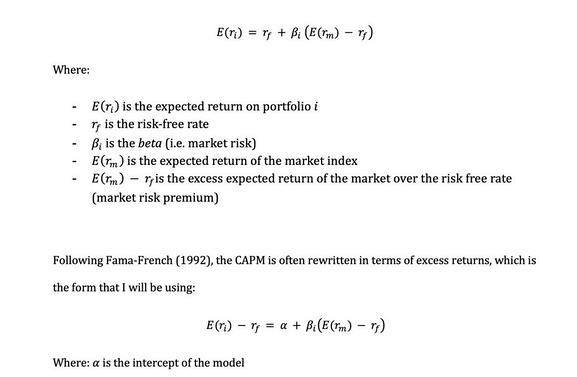
Resultsanddiscussion
At the 5% level, I rejected the null that alpha = 0 for NonDurablesandHealthcareportfolios,meaningtheCAPMfailsto holdforthesesectors Fortheothereightportfolios,CAPMisnot rejected R² values are generally high (eg 092 for Manufacturing),indicatingthatthemodelexplainsmuchofthe variability.Allbetasarestatisticallysignificantatthe1%level. Sectors like High Tech and Manufacturing have betas > 1, showingstrongpro-cyclicality,whileUtilitieshasalowerbeta, suggestinglessmarketsensitivity
Conclusion
TheCAPMholdsformostindustriesonaggregatebetween19262024butfailsintheNon-durablesandHealthcareindustries, where alpha is significant. Key assumptions like residual independence,linearity,andsingle-factorsufficiencymaynot fully hold For instance, economic shocks may introduce autocorrelation, and markets can overreact to bad news and underreacttogoodnews TheseissuessuggesttheCAPM though useful,i
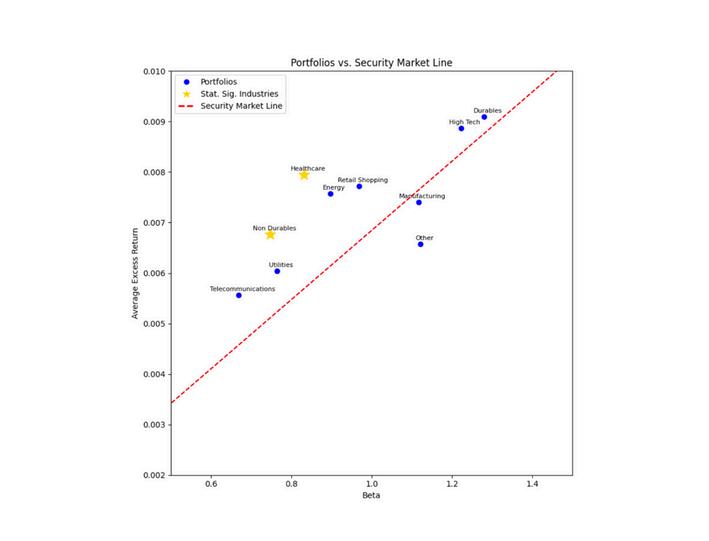
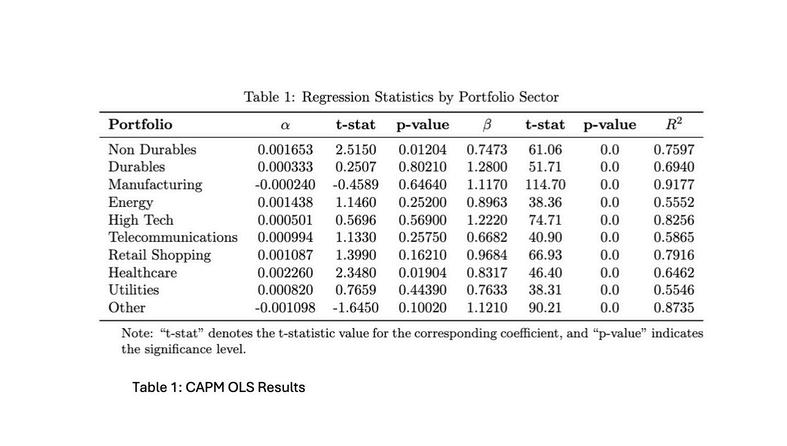
Future work
Further testing could examine shorter sub-periods, or add variables like firm size and value, as in the FamaFrench 3-Factor Model Machine learning could also identify nonlinear patterns or hidden predictors of excess returns
libraryhtml[Accessed11Apr 2025] Sopotnitskiy L 2024 TheSizeofGlobalMarkets2024inCharts LondonStockExchangeGroup [online] Availableat:https://wwwlsegcom/content/dam/data-analytics/en us/documents/charts/lseg-size-of-globalmarket-2024-in-chartspdf[Accessed12May2025] Fama EF andFrench KR 1992 Thecross-sectionofexpectedstockreturns JournalofFinance 47(2) pp427–465 https://doiorg/101111/j1540-62611992tb04398x Sharpe WF 1964 Capitalassetprices:Atheoryofmarketequilibriumunderconditionsofrisk Journalof Finance 19(3) pp425–442 https://doiorg102307/2977928
Figure 1 CAPM regression equation used to test market exposure’s explanatory power
Figure 3 Security Market Line with portfolio deviations driven by statistically significant alpha
Biology and Human Behaviour
Congenital Insensitivity to Pain with Anhidrosis (CIPA)
Hailey (V)
Have you ever wondered what it would be like to not feel pain? Though pain may be, well, painful, it is your body’s way of telling your brain, “Hey! Something is wrong here ” Without that warning, it could cause serious injuries instead of getting it sorted So how does your brain know when you feel pain? When your body is injured, chemicals are released which stimulate the area’s pain nerve endings Pain receptors from that area release neurotransmitters sending a message through the spinal cord to the brain. From that, pain is crucial to human life as it alerts the body of harmful changes
Congenital Insensitivity to Pain with Anhidrosis (CIPA) is a rare genetic disorder characterised by not being about to feel pain or temperature, and decreased or absence of sweating. CIPA is a clinical subtype of hereditary sensory and automatic neuropathy (HSAN), CIPA being HSAN type IV
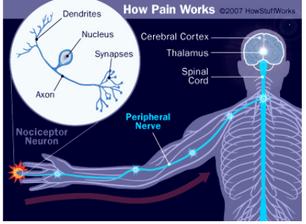
CIPA signs and symptoms usually appear early on, usually at birth or infancy CIPA is caused by mutations in the NTRK1 gene (neurotrophic tyrosine kinase receptor 1) The presence of kinase leads to cell differentiation and plays a role in specifying sensory neuron subtypes. This gene oversees instructing the creation of a receptor protein that binds to another protein, NGFβ The gene is encoded in the tyrosine kinase receptor, which is responsible for nerve growth factor, hence the signals for pain, heat, cold cannot be relayed to the brain Moreover, people with CIPA lose the nerves leading to their sweat glands, causing anhidrosis. The inheritance pattern of this gene is autosomal recessive, meaning an individual must inherit 2 copies of the defective allele to develop CIPA However, if there is only one copy of this gene, the individual will act as a carrier and it will not be expressed phenotypically The disorder is rare with 1 in 125 million being born with this condition and 20% of those do not survive past 3 years old.
Clinical manifestations of CIPA
Insensitivity to pain and temperature can result in repeated severe injuries, especially self-injury Imagine you broke your ankle, it would hurt pretty badly however that pain has let you know that something is wrong Usually you don’t assume you have injured yourself when it doesn’t hurt – people who are suffering from CIPA wouldn’t feel that alerting pain and therefore they cannot attain the correct medical attention needed Self injury, typically by biting the tongue, lips, or fingers, would lead to spontaneous amputation of the affected area from infections or chronic wounds when repeated trauma occurs. Frequent fractures and joint deformities can lead to bone infections (osteomyelitis) or Charcot joints where the surrounding tissue and bone are destroyed from unnoticed injuries and improper healing. The lack of thermal sensation also increases the risk of hypothermia or hyperthermia, especially in extreme weather conditions
CIPA patients have the inability to sweat (anhidrosis), and sweating is critical for thermoregulation to cool body temperature The absence of the mechanism predisposes them to life threatening hyperthermia from warmer climates or even physical exertion.

An increase in body temperature causes recurrent hyperpyrexia (high fevers) and febrile seizures In addition, there are other signs and symptoms such as lichenification, which is when the individual has thick, leathery skin on the palms of their hands or misshapen finger/toenails They also often have hyptrichosis, where they have patches on their scalp that do not grow hair. Psychologically, half of the people with CIPA show signs of hyperactivity or emotionally instability and many have intellectual disability.
Quality of life; diving into a case of a 2 5-year-old boy and a 7year-old girl
In Iran, a 2 and a half year-old boy was referred to paediatrics with self-mutilating injuries to his hands, feet, tongue, and oral mucosa from unconscious biting At 2 months, he was admitted to the hospital with fever and convulsion He had prolonged fever so an evaluation for the etiology was done. Abnormal results were not seen in blood, CSF, and urine cultures Echocardiography, blood smear, bone marrow aspirations and cultures, CT scans etc were normal too Therefore, the patient was discharged on phenobarbital medication, but episodes of hyperthermia and unexplained fever recurred The parents never found him sweating after birth and he did not handle warm weather or sun exposure well He was irritable and cried in such situations, though the boy never complained of painful sensations from injuries such as pinpricking, burning, hitting, or cutting He had a right third metatarsal fracture without reason, causing an oedema (build-up of fluid in body tissue) and deformity as Charcot joint in his right foot from repeated trauma In addition, keratosis (growth on skin) and thick dry skin in the palms of hands and soles of feet were visible
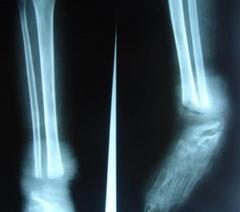
How pain works
Genetics of CIPA
A 7-year-old girl, born of consanguineous (first cousins) parents was admitted to the hospital with swelling and erythema (superficial reddening of the skin) in her right foot. She had 2 siblings that died at an early age for unknown reasons
She had a history of several episodes of osteomyelitis, there were osteopathic lesions in her mandible (lower jawbone, playing a crucial role in chewing, speech, and facial structure) and vestibular epithelium (sensory tissue in the inner ear, enabling balance and spatial orientation) was destroyed She was recommended to do a bone graft surgery When the patient was 3, all of her teeth fell out and she had total alopecia from the 6th month of age On top of that, she had recurring fevers, respiratory infection, cellulitis, and osteomyelitis The disease was misdiagnosed as chronic granulomatous disease.
Both these cases explore how the lack of pain perception leads to recurrent injuries. Invasive procedures are done in response such as surgeries and bone grafts, severely impacting mobility and independence The inability to sweat causes unexplained fevers, making everyday activities and exposure to warmer climates dangerous, compromising physical comfort and a large risk of life-threatening events As patients grow older, their inability to feel pain may contribute to anxiety and frustration on their physical condition Visible deformities and aesthetic concerns may also affect the patient’s self esteem, they may face social isolation or stigma due to their condition. Not only do these conditions affect the patients themselves but it bears a great responsibility on the parents to take care of them
Diagnostics and treatment

Patients with congenital insensitivity to pain with anhidrosis lack NGFdependent primary afferent neurons with thin fibers (NGF-dependent primary afferents) and autonomic sympathetic postganglionic neurons
Since there is no cure, managing CIPA poses significant challenges on treatment to focus on mitigating symptoms and preventing complications. Unfortunately there is no standard treatment but key strategies may include, injury prevention by patients and caregivers adopting rigorous safety measures such as protective gear and close supervision to minimise the risk of trauma and accidents It is advised to do daily checks at home to look for signs of injury or fever Patients may also avoid extreme temperatures using air conditioning to help prevent hyperthermia. When there is an injury, prompt treatment of injuries and infections is crucial to prevent further complications In some cases, surgery or physical therapy may be necessary to manage skeletal deformities
CIPA is a rare and unfortunate disorder that highlights the critical role of feeling pain in our lives. Advances in genetic research have further improved our understanding of this condition but significant gaps still remain in treatment options Throughout my research for this article, it showed me the reason for feeling pain Being sensitive to the feeling of pain alerts you to things that may be wrong in your body. As discussed, complete insensitivity and ignorance to pain can lead to devastating results such as chronic injuries and a low quality of life
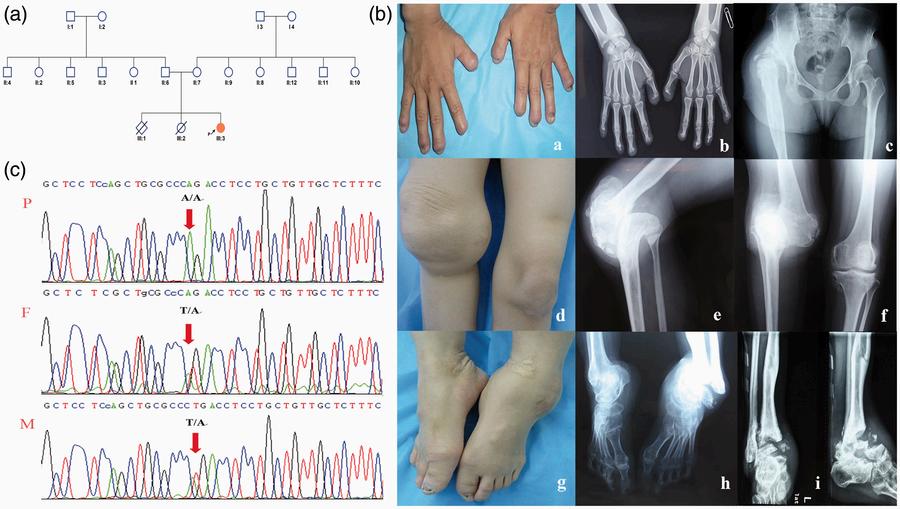
Phenotypic heterogeneity in patients with congenital insensitivity to pain with anhidrosis
References
Congenital insensitivity to pain with anhidrosis: Medlineplus Genetics (no date) MedlinePlus. Available at: https://medlineplus gov/genetics/condition/congenital-insensitivity-to-pain-with-anhidrosis/ (Accessed: 27 November 2024)
Shin, J Y et al (2016) Congenital insensitivity to pain and anhidrosis, Archives of plastic surgery Available at: https://pmc ncbi nlm nih gov/articles/PMC4738137/ (Accessed: 27 November 2024) (No date a) NTRK1 neurotrophic receptor tyrosine kinase 1 [homo sapiens (human)] - gene - NCBI Available at: https://www ncbi nlm nih gov/gene/4914 (Accessed: 27 November 2024)
Karimi, M and Fa Llah, R (2012) A case report of congenital insensitivity to pain and anhidrosis (CIPA), Iranian journal of child neurology Available at: https://pmc ncbi nlm nih gov/articles/PMC3943025/ (Accessed: 27 November 2024)
Daneshjou, K , Jafarieh, H and Raaeskarami, S -R (2012) Congenital insensitivity to pain and anhydrosis (CIPA) syndrome; a report of 4 cases, Iranian journal of pediatrics Available at: https://pmc ncbi nlm nih gov/articles/PMC3564101/#: :text=The%20odds%20of%20being%20born,about%201%20in%20125%20million (Accessed: 27 November 2024).
Lambert, K (2007) How CIPA Works [online] HowStuffWorks Available at: https://science howstuffworks com/life/inside-the-mind/humanbrain/cipa htm Bioninja com au (2024) Thermoregulation [online] Available at: https://ib bioninja com au/thermoregulation/
Understanding ADHD in girls
Savannah (LS2)
WhatisADHD?
ThepropermeaningofADHDis(Attention-Deficit/Hyperactivity disorder.)SomeofthecommonthingsindividualswithADHD strugglewithareconcentration,hyperactivity,andimpulsivity. AnADHDindividualwillusuallyhaveashortattentionspanand willbecomeeasilydistracted ADHDindividualsmayconstantly befidgetingforexample, withtheirhandsorafidgettoy,and struggletositstillandwhentheyaretoldtoitcausealotof stress Youmightoftenheartheword‘neurodivergent’todescribe anindividualwithADHD;itmeanssomeone’sbrainthatdiffersto theperceivedneuro-majority,egiftheyareautisticor have ADHD.
Mythsvsreallife
ADHDmythsoftenportraytheconditionasasignofweakness,a phase,orevenaresultofpoorparenting However,thatisnot true
ADHDisawell-knownconditionandpeoplestrugglewithitdayto day.
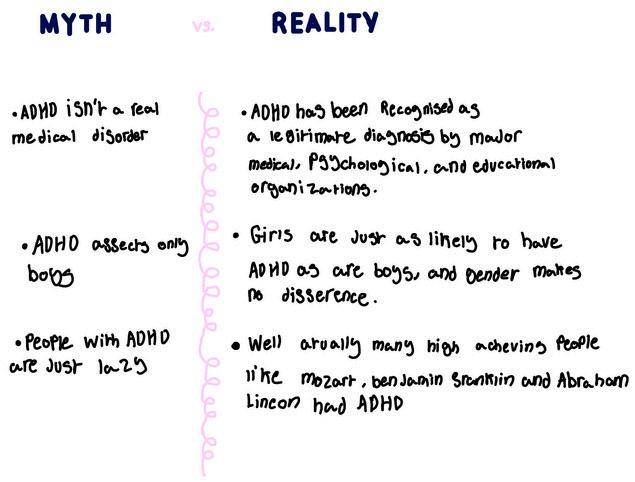
Why ADHD in girls is overlooked?
For a long time ADHD was only understood in boys, leading to girls being misdiagnosed with anxiety or depression, due to masking techniques Girls tend to not display the same sort of behavioural problems as their male pupils, and are socialised from a young age to be less disruptive and more compliant Girls also hide a lot of struggles, often their hyperactivity is internal, worrying, overthinking and can be ‘drowning on the inside’. Meaning ADHD gets easily missed at school
The transition to secondary school is a really big step-up due to the increasing demands on their executive function skills Having multiple teachers, classrooms, subjects and deadlines Girls with ADHD tend to suffer silently as it is not being picked up that they have it
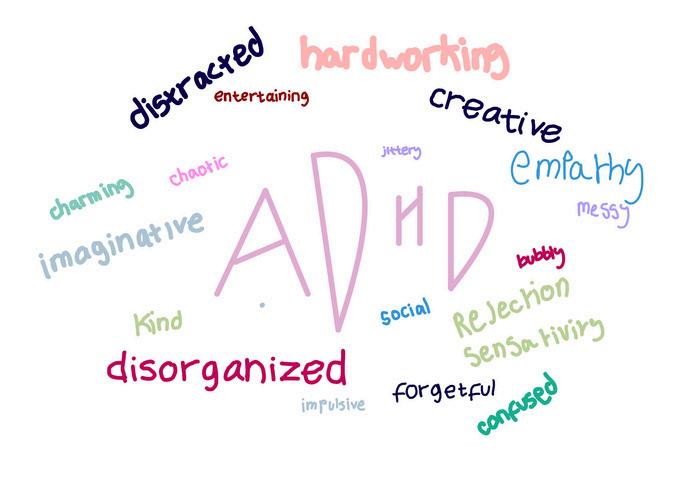
What is dopamine?
Dopamine is a neurotransmitter and a hormone that plays a crucial role in the brain’s pleasure system In ADHD, there is often an imbalance of dopamine, which can contribute to symptoms like difficulty focusing and low motivation
Difficulties
of ADHD
Individuals with ADHD struggle with inattention, disorganisation, and forgetfulness
They can often be emotionally sensitive especially when hit with rejection, or easily overwhelmed They are usually criticised which can lead to low self-esteem and mental health challenges
People with ADHD struggle a lot with sleep as they struggle to shut their mind off.
Strengths of ADHD
People with ADHD often think out of the box and are very creative
Hyperfocus is something people with ADHD are good at, as they intensely focus on tasks and topics they like ADHD people are great at leadership as they are will to take risks and try new things
Recommendations for school
Incorporate movement breaks: Provide discreet opportunities to move throughout the day, such as running errands or taking short stretching breaks
Utilise visual supports: Providing visual aids, written instructions, and checklists can significantly improve organisation and task execution
Encourage discreet fidgeting: Allow them to use small, unobtrusive fidget tools to maintain focus without disrupting the learning environment
Image © Savannah Gibbs
What if you stopped eating?
Ben (M)
Introduction
Fasting, defined as a period of time when you eat no food, causes the body to undergo massive biological changes to keep the body functional, even without food. Moreover, fasting has had an impact on human culture and knowledge throughout history
Insulin and glucagon
Blood sugar is regulated with two main hormones, insulin and glucagon Released by the pancreas’ beta and alpha cells respectively, insulin helps decrease blood sugar concentration by promoting glucose uptake in cells and activating enzymes in liver and muscle cells, which convert glucose into glycogen
On the other hand, glucagon increases blood sugar concentration via extracting stored glycogen, glycerol, fatty acids, amino acids within cells and converting them into glucose and releasing it into the bloodstream for cells to use
Stage 1 & 2: fed & early fasting
Fed state happens 0-4 hours after you eat, and happens even if you aren’t fasting Carbohydrates are broken down into glucose and are absorbed by the small intestines, so blood sugar levels rise. Insulin is released so glucose can be absorbed into cells for energy
Excess glucose is also stored in the liver as glycogen You also feel full due to the release of leptin, a type of hormone that suppresses your appetite
Early fasting state happens 4-18 hours after you eat. As the glucose from your meal is fully absorbed, blood sugar levels decrease, and glucagon is released, allowing for glycogenolysis to occur, where glycogen store in the liver is converted into glucose. This provides energy for the body
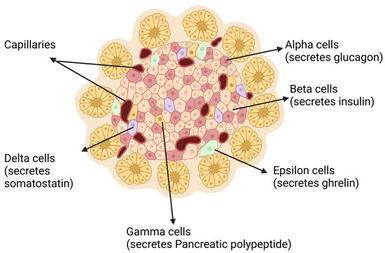
Stage 3 & 4: long term fasting
Fasting state happens 18-48 hours after you eat, and when glycogen stores runs out This is when lipolysis is promoted by glucagon, where fat tissue breaks down lipids into glycerol and fatty acids. Glycerol undergoes gluconeogenesis in the liver, where it is converted into glucose and released into the bloodstream Fatty acids undergoes ketosis, where they are converted into ketones, an alternate source of energy
During this period of time, autophagy occurs, a natural mechanism where degrades damaged components within cells, essentially repairing them This happens because cells conserve energy by reclaiming energy from damaged cells

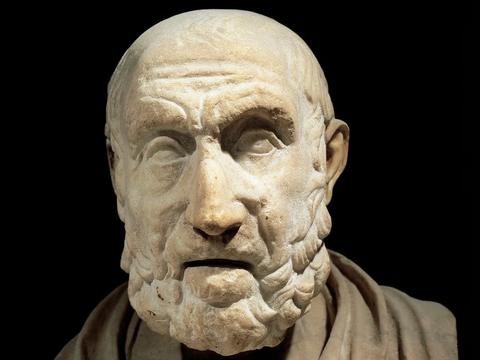
Long-term fasting state is entered 48 hours after you eat. As the body fully adjusts to the new sources of energy Muscles may be broken down into amino acids and converted into glucose via gluconeogenesis.
Extreme starvation
When all lipid and proteins from muscles are exhausted, as a last ditch effort for survival, proteins from vital organs are taken, including the liver and the heart, and used in gluconeogenesis for energy. However this leads to organ failure which will be fatal without intervention
Fasting in human culture
In religions such as Islam, fasting plays a very important role On the ninth month of the Muslim calendar, Muslims refrain from eating and drinking from dawn to sunset, used as a form of spiritual discipline
Mahatma Gandhi famously fasted as a form of protest, with his most famous protest being on the 13th January 1948, when he fasted for the safety and rights of Pakistani Muslims
In Ancient Greece, Hippocrates, nicknamed the Father of Modern Medicine, discovered fasting and its autophagic and detoxifying effects, and promoted it to his patients and other physicians.
Bibliography
Ajmera, R (2023) What are the different stages of intermittent fasting?, Healthline Available at: https://www healthline com/nutrition/stages-of-fasting (Accessed: 11 May 2025)
Davies, C (2021) How long do you need to fast for autophagy?, MedicineNet Available at:
https://www medicinenet com/how long do you need to fast for autophagy/article htm (Accessed: 17 May 2025)
Williamson, E and Moore, D R (2025) A muscle-centric perspective on intermittent fasting: A suboptimal dietary strategy for supporting muscle protein remodeling and muscle mass?, Frontiers Available at: https://www frontiersin org/journals/nutrition/articles/10 3389/fnut 2021 640621/full (Accessed: 11 May 2025)
Schuster, K et al (2024) Starvation in mice induces liver damage associated with autophagy, Nutrients Available at: https://pmc ncbi nlm nih gov/articles/PMC11053507/ (Accessed: 11 May 2025)
Ramadan (no date) Ramadan | A Guide to Religious Observances | Resources | Center for Spiritual Life | Brandeis University Available at: F(Accessed: 13 May 2025)
Thomas, byA J , Panda, byDurga P and Sajeda, bySamreen (2020) Gandhi’s last fast, Indian Cultural Forum Available at: https://indianculturalforum in/2019/01/30/gandhislast-fast/ (Accessed: 14 May 2025)
Martin, T (2023) Fasting – a modern take on an ancient practice, British Association for Holistic Medicine & Health Care Available at: https://bhma org/fasting-a-modern-take-onan-ancient-practice/ (Accessed: 14 May 2025)
Carroll, J et al (2024) Decoding the significance of alpha cell function in the pathophysiology of type 1 diabetes, MDPI Available at: https://www mdpi com/20734409/13/22/1914 (Accessed: 17 May 2025)
Timmons, G (2023) Hippocrates: Biography, Hippocratic Corpus, Greek physician, Hippocrates Available at: https://www biography com/scholars-educators/hippocrates (Accessed: 17 May 2025)
Gandhi breaking his fast, 18th January 1948
Structure of pancreas
Statue of Hippocrates
The science of memory: Can we trust what we remember?
Caitlin (L6th)
Have you ever been certain of a memory, only to find out later that it was wrong?
Imagine vividly recalling an event the time, place, people, emotions only to discover that many of those details are inaccurate. This experience is more common than we might think Despite our confidence in our memories, psychological research reveals that memory is a reconstructive process that can be distorted. This article explores how memory works, why it sometimes fails, and whether we can fully trust what we remember
How does memory work?
Memory is a cognitive process involving three main functions: encoding, storage, and retrieval. These steps allow us to process experiences, retain information, and recall knowledge when needed
One of the earliest and most influential explanations of memory is the Multi Store Model developed by Atkinson and Shiffrin in 1968 It outlines three stores: sensory memory, short-term memory, and longterm memory. According to this model, information flows sequentially through these stages Through rehearsal, it can move from short-term to long-term storage, where it can remain for extended periods.

However, this model has limitations It does not explain why we sometimes forget information even after rehearsal or remember things we never consciously rehearsed. It also treats memory as a passive storage system and does not account for the impact of context or interpretation
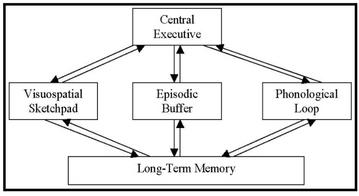
In 1974, Baddeley and Hitch proposed the Working Memory Model, which offered a more detailed view of the short-term memory system They suggested that short-term memory is composed of separate components: the phonological loop for verbal information, the visuospatial sketchpad for visual and spatial data, and the episodic buffer for integrating these inputs These are all coordinated by the central executive, which directs attention and manages cognitive tasks.
This model explains how we can perform multiple tasks at once, such as listening while watching, by using different parts of working memory However, it does not focus on long-term memory or explain how information transfers between systems
The reconstructive nature of memory
Memory is not a perfect record of the past. Instead, it is a dynamic reconstruction influenced by prior knowledge, assumptions, and external factors
A key concept in this process is the use of schemas Schemas are mental frameworks developed through experience that help us interpret and organise information. While useful, they can lead to distortion by filling in memory gaps with assumptions rather than facts
This was demonstrated in a well-known study by Loftus and Palmer in 1974 Participants watched videos of car crashes and were then asked to estimate the speed of the cars using different verbs such as "smashed," "collided," or "bumped " Those who heard stronger words like "smashed" gave higher speed estimates and were more likely to recall seeing broken glass that was not present The study showed that memory can be altered by language and suggestion
Such findings have significant implications for real-life situations like eyewitness testimony Even when people try to recall events truthfully, their memories may have been unintentionally changed by the way questions were asked or by personal expectations
Confidence versus accuracy
People often assume that the more confident someone is about a memory, the more accurate it must be However, this is not always the case One type of memory that highlights this problem is called a flashbulb memory These are vivid recollections of the moment we heard important or emotional news, such as a national tragedy or a personal loss
Neisser and Harsch examined this in 1992 after the Challenger disaster Participants were asked questions about where they were and what they were doing when they heard the news, first within 24 hours and then again 2 5 years later Despite having low accuracy in their second responses, participants reported high confidence in their memories This suggests that emotional intensity can increase our certainty without improving our accuracy.
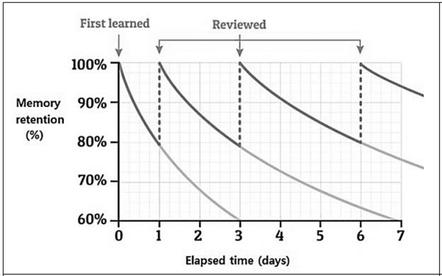
Figure 1 Multi Store Model of Memory
Figure 2 Working Memory Model
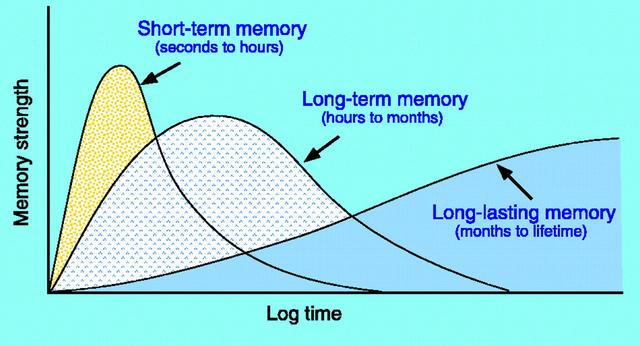
This has serious consequences In courtrooms, eyewitnesses often believe their memories are accurate because they can recall them vividly, but that does not guarantee the details are correct.
External influences on memory
Several factors outside of the individual can alter memory. These include:
- Conversation and repetition: Talking about an event with friends or family can unintentionally change your recollection You may absorb other people's perspectives or merge them with your own
- Media coverage: Images, videos, or even descriptions from the media can reshape our memories Viewing an event from another angle might introduce details that we then adopt as our own.
- Cultural background: Culture influences the types of schemas we develop, which in turn affects how we process and remember information Cultural values and experiences can shape what details we focus on and how we reconstruct them
These influences make memory highly susceptible to change, often without the individual being aware of it
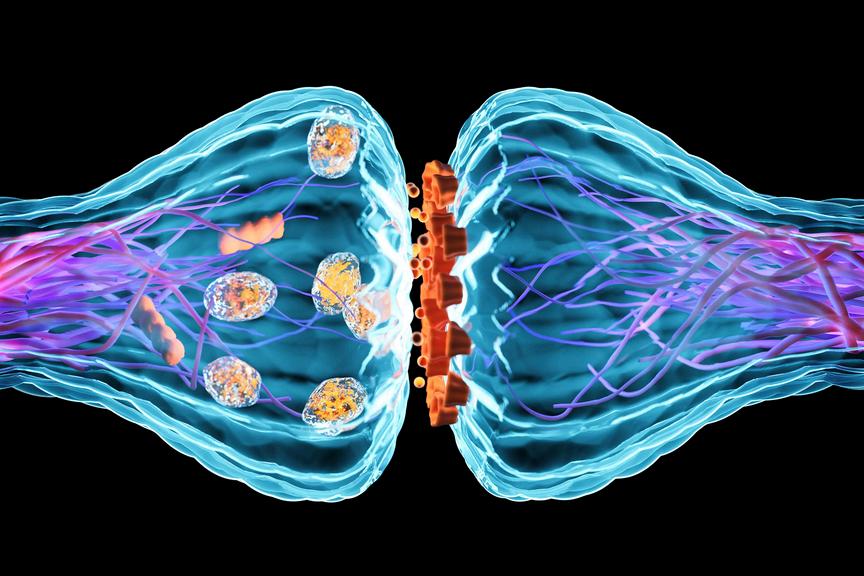
References
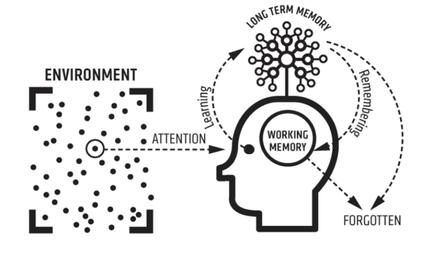
Real-world implications
The fact that memory can be distorted has serious implications. In the legal system, eyewitness misidentification is one of the leading causes of wrongful convictions False memories can arise even in well-intentioned witnesses who sincerely believe their recollection is correct
Memory also affects learning, decision-making, and personal relationships An inaccurate memory of a conversation or event can lead to misunderstandings, poor decisions, or emotional fallout. These examples show how deeply we rely on memory, even though we know it is not always dependable
Conclusion
Memory is one of the most vital yet imperfect functions of the human brain. Far from being a static record, it is an active, reconstructive process shaped by internal knowledge and external factors Psychological research reveals that even vivid and confident memories can be wrong
Understanding how memory works helps us approach it with greater awareness and critical thinking Whether in legal contexts, academic learning, or personal experiences, it is important to remember that what we recall is not always the whole truth
Memory may never be entirely reliable, but recognising its limits allows us to use it more responsibly and reflectively So next time you feel sure of what you remember, it might be worth asking yourself: is this a fact, or just the most convincing version of the story?
Atkinson, R C & Shiffrin, R M (1968) Human memory: A proposed system and its control processes Psychology of Learning and Motivation, 2, 89–195.
Baddeley, A D & Hitch, G J (1974) Working memory Psychology of Learning and Motivation, 8, 47–89
Loftus, E F & Palmer, J C (1974) Reconstruction of automobile destruction: An example of the interaction between language and memory. Journal of Verbal Learning and Verbal Behavior, 13(5), 585–589. Neisser, U & Harsch, N (1992) Phantom flashbulbs: False recollections of hearing the news about Challenger In E Winograd & U Neisser (Eds ), Affect and Accuracy in Recall Simply Psychology. (n.d.). Flashbulb Memory. https://www.simplypsychology.org/flashbulb-memory.html Frontiers in Psychology (2019) External influences on memory https://www frontiersin org/articles/10 3389/fpsyg 2019 00703/full Interaction Design Foundation (n d ) Multi Store Model https://www interaction-design org Cognitive Psychology. (n.d.). Working Memory Model. https://www.cognitivepsychology.com
The science of learning
Different phases of memory consolidation
Synapses
The genetic effects of ex-situ breeding programmes on animals
Claire (L6th)
Introduction
Climate change and human action, such as poaching and deforestation, have had detrimental effects to wild populations and habitats causing numbers for many species to decline over the years. With such decline to natural populations, it is essential that conservationists work to preserve these populations and prevent any further decline. Many of these efforts involve the use of ex-situ conservation programmes, however these may come with drawbacks such as potential loss of genetic diversity, making species more susceptible to disease, and changes due to differing selection pressures I aim to investigate the genetic effects of these conservation programmes and thier importance to creating selfsustaining populations which can be re-introduced into the wild.

Figure 1 The Red List Index (RLI) of species survival ¹
Methodology
By comparing the results of the genetic studies of four different species of animal: Black Lion Tamarin², Iberian Lynx³, Montseny Brook Newt⁴ , and Bellinger River Turtle⁵ , I evaluated the effects of founder size on changes to genetic diversity from the wild populations.
Results and discussion
Figures 2 and 3 show a maintained high genetic diversity of the studied species This is seen by a number of markers including: expected heterozygosity, observed heterozygosity, allelic richness, and the inbreeding coefficient. A genetically diverse population shows high values for heterozygosity and allelic richness A positive inbreeding coefficient shows a degree of inbreeding within the population, whereas a negative inbreeding coefficient shows nonrandom mating or outbreeding
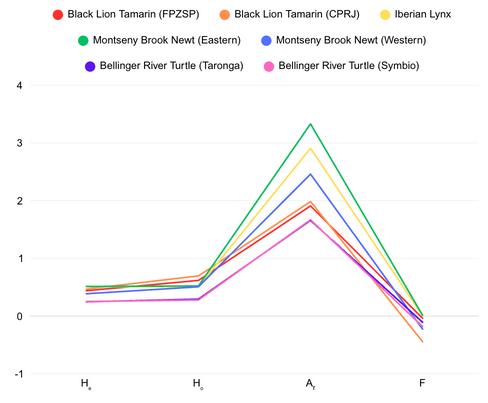
3. Line chart comparing expected heterozygosity (He), observed heterozygosity (Ho), allelic richness (Ar) and inbreeding coefficient (F) of the captive populations of the four species.
Conclusion and evaluation
The results of these studies show that founder size does not have a significant impact on genetic diversity of captive species and that their genetic diversity does not vary significantly from their wild populations. This indicates that captive breeding programmes are able to maintain genetic diversity, even with small founder sizes, and can be an effective way of creating a self-sustaining population which could be re-introduced into the wild to assist with conservation efforts
However, due to a small sample size, this meta-analysis is not entirely reliable and so further research would be required to validate these results and the genetic effects of captive breeding
Future work
Currently there is a lack of studies investigating the genetic effects of conservation work, including ex-situ and in-situ breeding programmes, especially in-situ where I was unable to find any studies on animals With an ever-increasing number of animals beig listed as endangered and critically endangered each year, it is imperative that we work to improve the effectiveness of conservation programmes at preserving the genetic diversity of endangered species. Once more studies are conducted, scientists will be able to compare the effectiveness of certain aspects of different programmes to combine them and create more effective methods of preserving genetic diversity of endangered species.
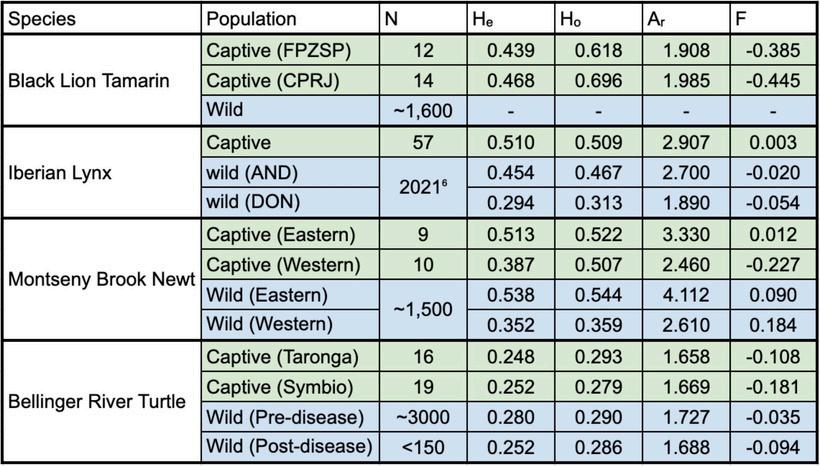
References
1 The IUCN Red List of Threatened Species (no date) IUCN Red List of Threatened Species Available at: https://www iucnredlist org/assessment/red-list-index (Accessed: 18 May 2025)
2 Javarotti, N B et al (2025) Genetic monitoring in ex situ populations of the endangered primate Leontopithecus Chrysopygus and integrative analyses with the wild founder population, PLOS ONE Available at: https://journals plos org/plosone/article? id 10 1371%2Fjournal pone 0322817 (Accessed: 18 May 2025)
3 Kleinman-Ruiz D et al (2019) Genetic evaluation of the Iberian Lynx ex situ Conservation Programme Heredity Available at: https://pmc ncbi nlm nih gov/articles/PMC6972747/ (Accessed: 18 May 2025)
4 Valbuena-Ureña E et al (2017) Getting off to a good start? genetic evaluation of the ex situ conservation project of the Critically Endangered Montseny Brook Newt (calotriton arnoldi), PeerJ Available at: https://pmc ncbi nlm nih gov/articles/PMC5472038/ (Accessed: 18 May 2025)
5 Nelson, H V et al (2024) A genomic framework to assist conservation breeding and translocation success: A case study of a critically endangered turtle Available at: https://conbio onlinelibrary wiley com/doi/full/10 1111/csp2 13204 (Accessed: 18 May 2025)
6 Clive (2024) Conservation success: Iberian lynx numbers reach historic high in 2024 census, Wildside Holidays - Walking and Wildlife Holidays In Spain Available at: https://wildsideholidays co uk/conservation-success-iberian-lynx-numbers-reach-historic-highin-2024-census/ (Accessed: 18 May 2025)
Figure 2 Table showing founder size / population (N), expected heterozygosity (He), observed heterozygosity (Ho), allelic richness (Ar) and inbreeding coefficient (F) of the wild and captive populations of the four species
Figure
How does Lucozade benefit an athlete’s sporting performance?
Elsie (LS2)
WhatarethebenefitsofLucozade?
Electrolytesplayakeyroleinwhymanyathletes’performance. TheelectrolytesinLucozadecanhelpwithre-hydrationtogive moisturetoourmusclesagainandmakethemfunctionbetter, whichleadsontoanotherpoint Electrolytesalsohelpwith musclecontractionwhichweneedduringsportperformances. Additionally,Lucozadehelpsthenervesignalsornerve transmissions Theelectrolyteswillmakethenervesmore energisedandawake,soourbodiescanbebetterfocusedand coordinationisimproved Duringasportfixtureormatch, electrolytescanalsohelpwithmanythingsaroundyourbody suchasyourbloodcirculationandbloodpressure,yourheart rateandyourglucoselevelsinyourbloodwhichallbenefithow weperforminthosecrucialsportingmoments
Scientificexplanation
Electrolytesareatypeofsaltthatwetakeintoourbody Mainly throughconsumption Theyaredissolvedintopositiveand negativechargesthereforeconductelectricityinwater The mainelectrolytefoundinyourbodyisSodiumChloride(NaCl) butotheroneslikeChloride,Potassium,Magnesium,Calcium andPhosphatecanalsobefoundinourbodies.Thechargesof theelectrolytesarevitalforcontrollingtheflowofwaterinour cellsaswellasnerveimpulses Thechargesgothroughthecell andthewaterfollows Thewatergoestothesidewiththelarger amountofelectrolytes/charges.Ifwedidn’thaveagoodsplitof electrolytesandwaterthenthecellswouldeventuallydryup fromlackofwaterorburstfromtheover-productionofwater Inthenervecellswhenapositiveionmovesthroughanion channelthemovementsparksupanelectricalimpulsewhich sendsmessagestolotsofpartsofyourbody,eg.yourbrain, yourheartoryourlungs.
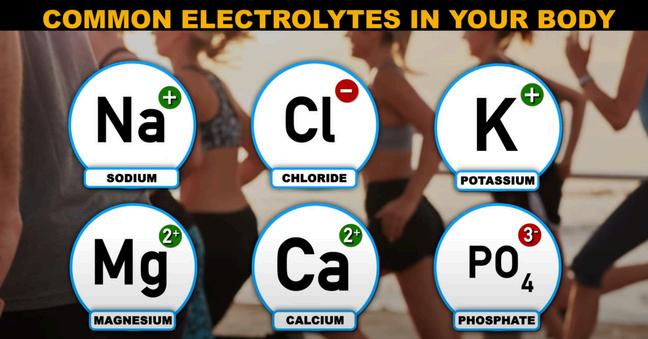
What are the main ingredients found in Lucozade that are beneficial?
In Lucozade the main ingredients that benefit and help an athletes’ sporting performance are electrolytes They can help with many things but the main thing they could help with is probably re-hydration Specific electrolytes used in Lucozade are Calcium, Magnesium, Sodium and Chloride These are all great replenishers of our body
References

Energy vs sport
There are two types of Lucozade: Lucozade Energy and Lucozade Sport The ingredients found in each are different as they were both made for different things Lucozade Sport was made to enhance performance, whereas Lucozade Energy was made for people to give them a general energy boost, not specific to sport Lucozade Sport’s general ingredients are carbohydrates, electrolytes and occasionally vitamins, whereas Lucozade Energy contains glucose sugars (and other sugars), and a small amount of caffeine Lucozade Sport contains no caffeine whatsoever One of the main reasons for the electrolytes in Lucozade, is muscle contractions or functions which is not needed for the use of Energy Lucozade as it is only used for a general energy boost rather then for your body and it’s muscles for strengthening
Conclusion
Overall, the main thing that I have taken from this is that although Lucozade (and electrolytes inside of them) really benefit our bodies in more ways than one (including helping muscle function, re-hydration and nerve function), it is important to know that sports drinks like Lucozade are just one aspect of an athlete’s optimal performance and health
We can help our bodies function best through a good, strong and healthy Alongside proper hydration, a balanced diet should include a variety of foods such as carbohydrates for energy, protein for muscle repair and growth, and a wide range of vitamins and minerals that support the immune system, bone health, and overall well-being

Advisor, D E J -P in E P & N , Clean Sport (2022) The Importance of Hydration and Electrolytes for Performance [online] UK Available at: https://www scienceinsport com/sports-nutrition/the-importance-ofhydration-and-electrolytes-for-performance/ Better Health Channel (2024) Sporting performance and food - Better Health Channel [online] www betterhealth vic gov au Available at: https://www betterhealth vic gov au/health/healthyliving/sporting-performance-and-food#nutrition-andexercise Reactions (2017) What Do Electrolytes Actually Do? YouTube Available at: https://www youtube com/watch? v=xhLHtuZ3VOI
Electrolytes found in our bodies
What a good, strong, healthy diet should look like
DNA determining your destiny: to test or not to test
Jessica (LS2)
Introduction
Your genetics, inherited from your ancestors, influence your risk of diseases like cancer, sickle cell, and cystic fibrosis Knowing your family history helps decide if you need certain vaccines or treatments Genetic testing can reveal disease risks and guide prevention However, it can also cause worry On the other hand, epigenetics shows how environment and lifestyle can turn genes on or off without changing DNA So, both genes and environment shape who you are
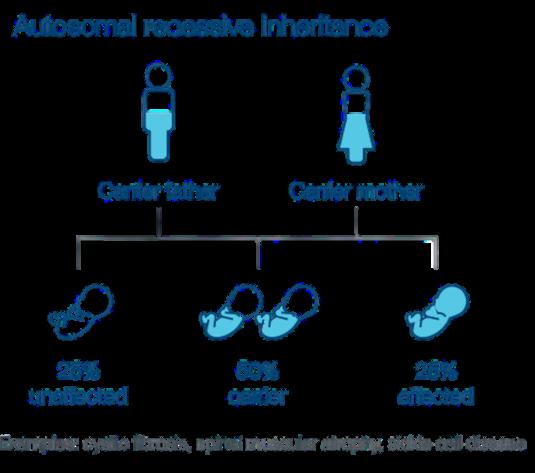
What is genetic testing?
Genetic testing finds changes in genes that can cause inherited diseases and some cancers Using DNA sequencing or polymerase chain reaction (PCR) blood, saliva or tissue samples are analysed for mutations.
Genetics vs epigenetics
Genetics causes disease by inheriting mutations in the DNA. Epigenetics causes disease by altering gene expression without changing DNA sequence, through mechanisms like DNA methylation which can silence or activate genes abnormally

The double-edge sword of genetics
Genetic testing for inherited diseases have become popular and provide benefits such as: provides sense of relief from uncertainty. helps people prepare for their health care helps people decide if they want to have children helps people decide if they want to have a pro-active approach in treatment if they are high risk for having cancer like Angelina Jolie who found out she had the gene mutations (BRA1 and BRA2), breast cancer and decided to have a mastectomy.
Genetic testing also carries moral dilemmas such as: fear of discrimination by health insurance companies. the consent of a parent to test a child may determine how that child views their future Is this fair on the child? some people may see this is a ‘death sentence’ as they would be aware of the diseases they are most likely to develop private information being sold to companies for money
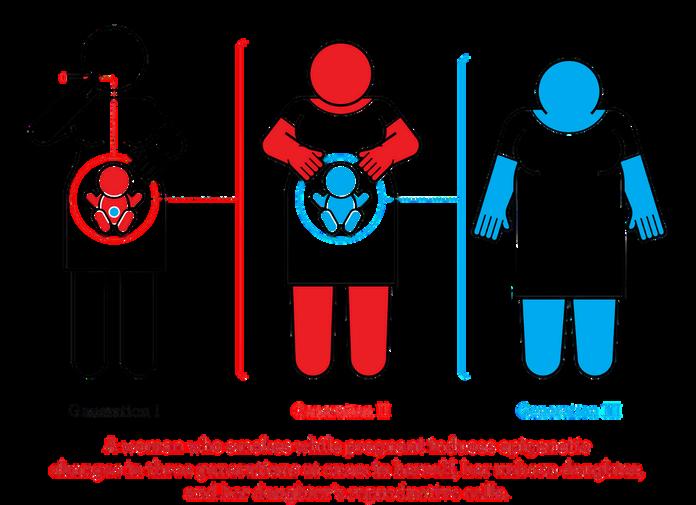
How epigenetics can affect multiple generations
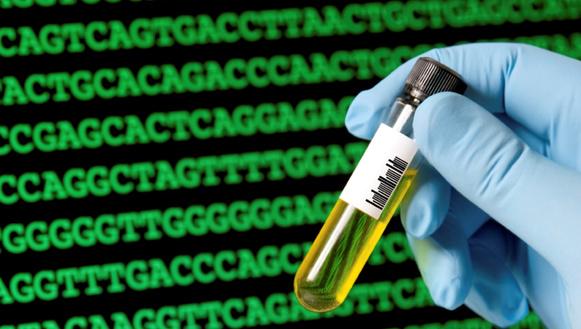
Future work on genetic testing
Newborn screening - Genetic England’s “Generation Study” is a pioneering project that plans to sequence the genomes of 100,000 babies If one of the conditions screened for is suspected in a baby, the family will get the results, therefore entering routine care.
Gene therapy is technique that uses a gene to treat, prevent or cure diseases by altering the genetic makeup-up of cells to correct faulty or missing genes
Personalised medicine uses an individual’s genetic information to tailor medical interventions to the unique characteristics of each person
An image showing how your DNA is read and what it is contained in
An image showing the probability of getting an inherited disease.
An image showing the different methods to get a DNA sample.
Exploring the brain science behind ADHD and tic disorders
Theo (M)
Introduction
Attention Deficit Hyperactivity Disorder (ADHD) and tic disorders are not just behavioural issues; they are linked to differences in how the brain is structured and functions (Posner et al , 2020)[1] Research shows that difficulties in the prefrontal cortex, which manages focus and self-control, and the basal ganglia, which helps regulate movement, contribute to many of the symptoms seen in these conditions This project aims to raise awareness of these neurological differences and explore how they impact young people’s lives
Methodology
This project involved reviewing medical studies focused on ADHD and tic disorders Functional imaging techniques such as fMRI and PET scans were analysed to compare structural and functional differences, particularly in the prefrontal cortex and basal ganglia (Cubillo et al., 2012)[2] Literature on the role of dopamine in attention, reward processing, and motor control was examined (Del Campo et al , 2011)[3] The study also explored research into the comorbidity and potential shared pathways of ADHD and tic disorders.
Results and discussion
Functional MRI studies show that individuals with ADHD have reduced prefrontal cortex activity, affecting focus and self-control (Cortese et al , 2012) [4] Tic disorders, by contrast, are linked to basal ganglia dysfunction, impacting motor control (Leckman et al , 2010)[5] Abnormalities in the dopamine system may underlie both conditions, explaining their frequent overlap
Conclusion and evaluation
ADHD and tic disorders seem to stem from similar neurobiological issues, especially related to problems with dopamine regulation and irregularities in the prefrontal and basal ganglia circuits (Felling & Singer, 2011)[6] Even though they’re typically diagnosed separately, the fact that they often occur together suggests there are shared underlying factors that should be explored more in clinical settings.
Future work
Future research should focus on examining the long-term development of the brains of individuals with ADHD and tic disorders, using advanced techniques like fMRI and neurotransmitter imaging. This would help provide a deeper understanding of the shared neurobiological factors behind their co-occurrence and how these conditions progress over time (Castellanos et al , 2002)[7] In addition, exploring the role of environmental factors, such as early life experiences and stressors, along with pharmacological treatments, could offer valuable insights into how these factors influence the expression and severity of symptoms This could lead to more specific approaches in managing these disorders and improving patient outcomes.
References
[1] Posner, J , Polanczyk, G V and Sonuga-Barke, E J S , 2020 Attention-deficit hyperactivity disorder The Lancet, 395(10222), pp 450–462
[2]Castellanos, F X , Lee, PP, Sharp, W , Jeffries, N O , Greenstein, D K , Clasen, L S and Rapoport, J L , 2002 Developmental trajectories of brain volume abnormalities in ADHD JAMA, 288(14), pp 1740–1748
[3]Del Campo, N , Chamberlain, S R , Sahakian, B J and Robbins, T W , 2011 The roles of dopamine and noradrenaline in ADHD Biological Psychiatry, 69(12), pp e145–e157
[4]Cortese, S , Kelly, C , Chabernaud, C , Proal, E , Di Martino, A , Milham, M P and Castellanos, F X , 2012 Toward systems neuroscience of ADHD: A meta-analysis of 55 fMRI studies American Journal of Psychiatry, 169(10), pp 1038–1055
[5]Felling, R J and Singer, H S , 2011 Neurobiology of Tourette syndrome: Current status and need for further investigation Journal of Neuroscience, 31(35), pp 12387–12395
[6]Felling, R J and Singer, H S , 2011 Neurobiology of Tourette syndrome: Current status and need for further investigation Journal of Neuroscience, 31(35), pp 12387–12395
[7]Castellanos, F X , Lee, P P, Sharp, W , Jeffries, N O , Greenstein, D K , Clasen, L S , & Rapoport, J L (2002) Developmental trajectories of brain volume abnormalities in children and adolescents with attention-deficit/hyperactivity disorder JAMA, 288(14), 1740–1748 https://doi org/10 1001/jama 288 14 1740
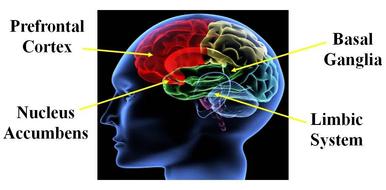
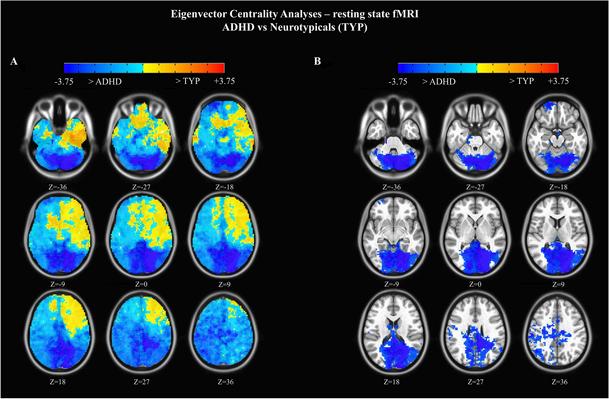
3 Resting-state fMRI comparing brain connectivity in ADHD and neurotypical individuals Blue areas show greater activity in ADHD, while yellow-red areas show greater activity in neurotypicals, highlighting differences in attention and control networks
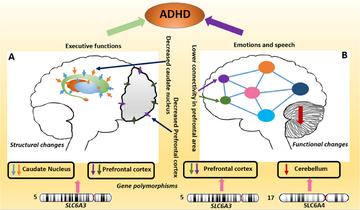
Diagram showing how neurotransmitters and brain regions interact to control key cognitive functions such as attention, memory, and inhibition. Neurotransmitters like dopamine and serotonin influence the prefrontal cortex and its connections to other areas, highlighting mechanisms often disrupted in ADHD.
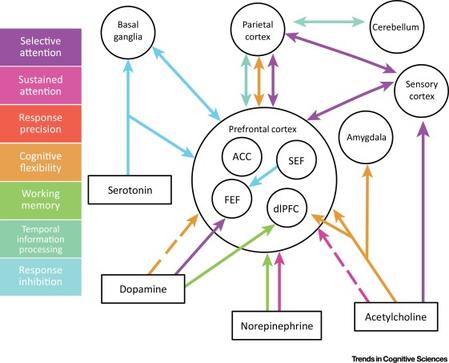
Fig
Image 4: Mueller A, Hong DS, Shepard S, Moore T Linking ADHD to the Neural Circuitry of Attention Trends in Cognitive Sciences
Fig.4
The position of the prefrontal cortex and basal ganglia positions inside the human brain
De-extinction: the new solution
Jude (L6th)
Introduction
Extinctionisoneoftheleadingproblemsintheworldasofright now Itisestimatedthatofthe8millionspeciesthoughttobeon earth,15thousandspeciesarecurrentlythreatenedby extinction.Extinctioncausespermanentlossinbiodiversity, weakensecosystemsandcanhavedamagingeffectsonother species Thecurrentsolutionstoextinctionare:conversation andrestoration,addressingclimatechange,andpublicand privatepractice.However,ColossalBiosciences,abiotechnology companyfoundedbyGeorgeChurchandBenLammin2021, offersanewsolutiontothisproblem:de-extinction
Work done by Colossal
The most recent work produced by Colossal Biosciences is their effort in the de-extinction of the Dire Wolf. The Dire Wolf was estimated to be extinct for 10,000 to 12,500 years This is until the biotechnology company was able to genetically modify the Grey Wolf, a related species, to bring back the Dire Wolf There are now three 6 month old pups, two males named Remus and Romulus, and a female named Khaleesi Once these wolves are eventually reintroduced into the wild, they will potentially benefit biodiversity and ecosystems by influencing prey behaviour, reducing overgrazing and possibly providing ecological balance
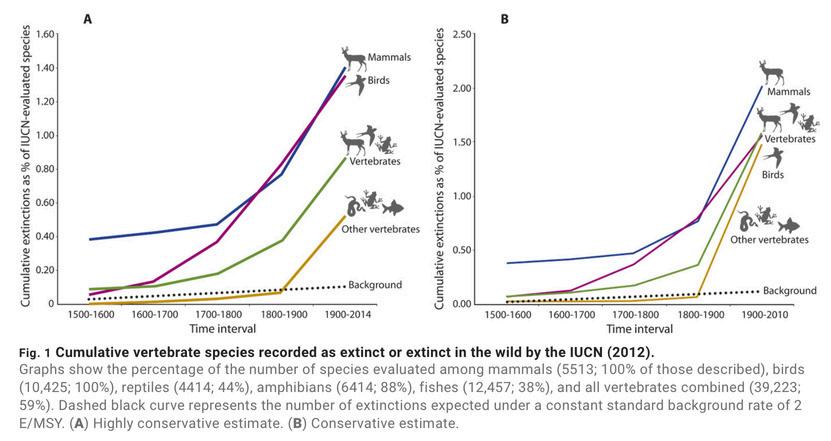
HowColossalcarryoutde-extinction
Genomesequencingandanalysis
DNAisextractedandsequencedfromtheremainsofextinct species,theseincludebonesandteeth
Keygenesareidentifiedthatareresponsiblefortheunique traitsoftheextinctanimal
MultiplexCRISPRgeneediting
CRISPRandmultiplexgeneeditingisusedtoinsertormodify multiplegenesatonceinthegenomeofacloselyrelated livingspecies
Cellularandembryonicengineering
Inducedpluripotentstemcellsarecreatedfromeditedcells, thesecanbecomeanytissuetype
Somaticcellnucleartransferisusedtotransferthenucleus ofaneditedcellintoanenucleatedeggcelltocreatean embryo
Reproductivetechnologies
Finally,embryosareimplantedintosurrogatemothersof closelyrelatedspecies Forexample,theGreyWolfisused fortheDireWolf
References ExtinctionOverTime-website-SmithsonianNationalMuseumofNaturalHistory-dateaccessed16/05/2025 https://naturalhistorysiedu/education/teaching-resources/paleontology/extinction-overtime#: :text Judging%20from%20the%20fossil%20recordas%20extinctions%20continue%20to%20occu De-Extinction-website-Colossal-dateaccessed1605/2025-datepublished23/06/2023 https://colossalcom/de-extinction/ Report:TheScienceBehindSecondChances:De-ExtinctionandBeyond AContraryResearchDeepDive:ContraryResearch-websiteReport:TheScienceBehindSecondChances:De-ExtinctionandBeyond|AContraryResearchDeepDive|ContraryResearch-date accessed16/05/2025-datepublished29/04/2025 https://researchcontrarycom/deep-dive/the-science-behind-second-chances-de-extinction?utm source perplexity Acceleratedmodernhuman–inducedspecieslosses:Enteringthesixthmassextinction|ScienceAdvances-website-dateaccessed 16/05/2025 https://wwwscienceorg/doi101126/sciadv1400253 Direwolvesandwoollymammoths:Whyscientistsareworriedaboutde-extinction-website-BBCNews-dateaccessed16/05/2025-

Conclusion and arguments
Although the work of Colossal Biosciences is revolutionary, there are many scientists who are skeptical about their work The cost, de-extinction is a very expensive process and critics argue that preventing extinctions is far more effective. Some scientists argue that focusing on de-extincting species could distract from helping the currently endangered ones There is also doubt surrounding whether reintroducing previously extinct species into the wild would have any positive effects on the ecosystem. The ethical issue is about animal welfare, living animals are being used as surrogates for extinct species Finally, scientists disagree with Colossal using the term deextinct as they are not making true replicas, rather geneticallly modified versions of existing ones
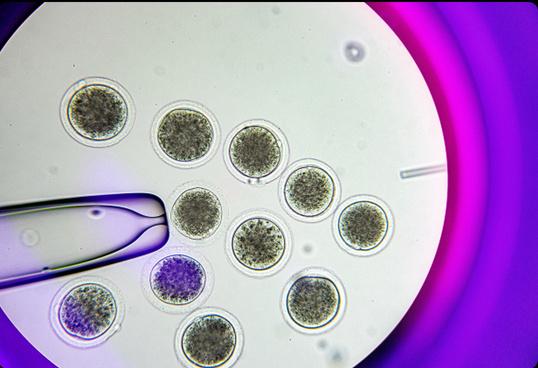
Graph on the rise of human induced extinction
The embryo of one of the Dire Wolves
One of the Dire Wolves de-extincted by Colossal
Epigenetics in personalised cancer therapy
Ava (M)
Epigenetics
Personalised cancer therapy uses information about a person and their cancer to guide diagnosis and treatment. Beyond existing therapies like CAR T-cell therapy, researchers are exploring ‘epigenetics’, which is the study of how genes are switched ‘on’ or ‘off’ without changing DNA Epigenetic changes, such as DNA methylation, can be used as ‘biomarkers’ to help doctors choose the most effective treatments and avoid drug resistance. Some drugs, like Azacitidine, target these changes and have proven to be successful in cancers like leukaemia While there are still challenges in making sure treatments are accurate and safe, epigenetics is helping make cancer treatment more personal and effective
DNA methylation
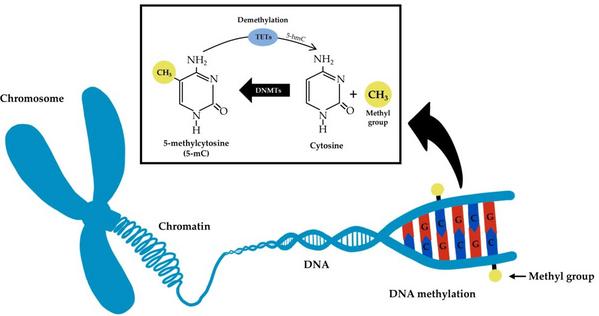
schematic representation of DNA methylation and demethylation molecular mechanisms
DNA methylation is when a small chemical group called a ‘methyl group’ is added to DNA This does not change the DNA sequence, but it can turn genes off, meaning the cell stops using those genes. This process helps control which genes are active or silent in each cell In cancer, specific DNA methylation patterns can act as biomarkers, which are measurable signs that help doctors detect cancer, predict its behaviour, and choose the best treatment
DNA methylation
DNA methylation is when a small chemical group called a ‘methyl group’ is added to DNA. This does not change the DNA sequence, but it can turn genes off, meaning the cell stops using those genes This process helps control which genes are active or silent in each cell In cancer, specific DNA methylation patterns can act as biomarkers, which are measurable signs that help doctors detect cancer, predict its behaviour, and choose the best treatment.
Personalised cancer therapy
In personalised cancer therapy, doctors use DNA methylation patterns to choose the best treatment for each patient. For example, in brain cancer, if the MGMT gene is recognised to be methylated, doctors can predict that patients are more likely to benefit from a drug called ‘temozolomide’ This is because MGMT is a gene that produces MGMT enzymes which repair damage in the DNA If methylated, the gene produces less enzymes and the damage inflicted by Temozolomide adding more methyl-groups to the DNA, cannot be repaired This stops cell division and therefore prevents further tumour growth In blood cancers, drugs like azacitidine and decitabine target abnormal methylation by blocking the enzymes that add methyl groups to DNA, which helps to reactivate important genes and slow down cancer growth. By monitoring methylation in blood samples, doctors can also track how well treatment is working and spot early signs if the cancer comes back This approach helps make treatment more precise and tailored to each patient
Challenges
There are still some challenges and scientists have to keep on working to find solutions; ‘tumour heterogeneity’ means that methylation patterns can vary between patients, or even within different parts of the same tumour in a single patient, making it hard to find consistent biomarkers Patterns can also change over time which limits their use for monitoring or predicting responses to treatments. Also, resistance to drugs that target DNA methylation is very common, and their effectiveness in tumours is limited, partly because the tumour’s surrounding environment, e.g. immune and cells, affects how methylation influences cancer growth Finally, analysing large methylation requires advanced technology, and therefore, applying this information in practice remains difficult
Future of personalised therapy

Mechanism of methylation by temozolomide
The future of personalised cancer therapy using epigenetics, especially DNA methylation, looks promising and exciting. Advances in technology will make it easier to identify methylation patterns in a patient’s tumour, which could lead to more accurate diagnosis and treatments especially tailored for patients New drugs targeting abnormal methylation are being developed, and researchers around the world are working hard to answer the most difficult questions. Combining methylation data with other genetic information will help doctors choose the most effective therapies, improving outcomes and reducing side effects
Simplified
What are astigmatisms?
Astigmatisms
Simran (LS1)
Astigmatisms are common conditions that occur in your eyes. It takes place when the lens or cornea of the eye has curved irregularly So instead of your cornea or lens being football shaped, it is more of a rugby ball shape. It causes sources of light to bend differently as it enters your eye However it is the result of a lack of symmetry in the cornea There are two types of astigmatisms, corneal and lens astigmatisms; the more common one of the two is corneal astigmatism There are three different sights that happen alongside astigmatisms, myopic, hyperopia and mixed (nearsighted, farsighted and combination of the two).
How does it happen and can it be reversed?
They happen alongside long or short sightedness Astigmatisms in one eye may eventually result in lazy eye, so it is very important that it is diagnosed early, so it can be treated early Sometimes, it doesn’t even need to be treated, but various treatments include laser eye surgery, glasses, or contact lenses. These solutions will correct your vision, however it won’t change the shape of your eye There isn’t a real definite cause of astigmatisms, however it can be genetics. You can receive astigmatisms from birth, and the severity of it could worsen or improve over time Astigmatisms can be diagnosed through a very thorough eye exam/test There is a special surgery called refractive surgery that uses contact lensfree treatment or glasses These can be suited to your needs
How it can affect you?
Astigmatisms are refractive errors and affect your vision at any distance, whether you are really close, or really far It results in distorted and or blurred vision It makes it quite hard to see small details on objects, words on road signs and sometimes even on a menu! Some other symptoms are seeing halos/glares around lights, blurred vision, headaches and eye strain One of the struggles that people suffer from with astigmatisms is driving at night Due to the reflective vision that they have, the lights look quite fuzzy, or blurry, with beams shooting out of the car headlights and can be surrounded by halos. The below image shows the difference between someone with an astigmatism (on the left) and someone without an astigmatism (on the right) Astigmatisms are lower in the Oriental ethnic group of 8.29% compared to the Hispanic ethnicity which is 16 8% Astigmatisms are more susceptible on VAX2 gene on 2p13 3 chromosomes Astigmatisms can be passed down from either a mother or a father

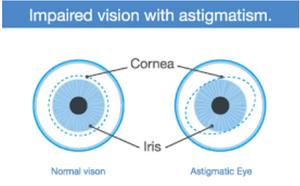
What does it do to your vision?
Imagine the ways that light travels in your eye like this: the different parts of your eyes work like a team in a relay race, (The light is the baton) passing the light that enters your eye through a pathway to your brain. The light gets passed through the cornea of your eye. The cornea is the clear part at the front of your eye and focuses the light through the lens and turns it into a signal that hits your retina. Your retina is a layer right at the back of your eyeball. It converts the light that is being passed into an electrical signal that your optic nerve will then send to your brain. After all of this process, your brain will finally use those sent signals to create the images that you see. This is normal vision, as shown in the diagram below. However with astigmatisms, instead of a straight path, the light gets bent and hits the retina at two focal points instead of one. These different visions are shown in the two diagrams below
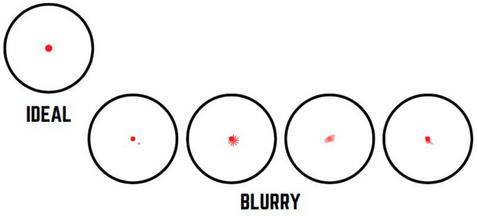
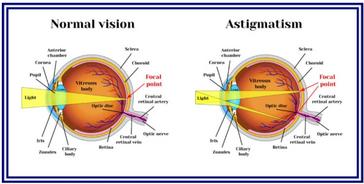
image showing light passing through a normal eye and an astigmatic eye
References:
(No date) NHS choices Available at: https://www nhs uk/conditions/astigmatism/ (Accessed: 26 January 2025)
Ten things to know about astigmatism (2019) Better Vision Guide Available at: https://www bettervisionguide com/ss-astigmatism-facts/ (Accessed: 26 January 2025) Lopes, M C et al (2013) Identification of a candidate gene for astigmatism, Investigative ophthalmology & visual science Available at: https://pmc ncbi nlm nih gov/articles/PMC3576051/#: :text=A%20susceptibility%20locus %20was%20identified,dorsoventral%20axis%20of%20the%20eye (Accessed: 26 January 2025)
Wen, G et al (2013) Prevalence of myopia, hyperopia, and astigmatism in non-Hispanic white and Asian children: Multi-ethnic Pediatric Eye Disease Study, Ophthalmology Available at: https://pmc ncbi nlm nih gov/articles/PMC3902090/#: :text=The%20prevalence%20of%2 0astigmatism%20%3E%3D1 50,%2C%20p%3D0 048%20respectively) (Accessed: 26 January 2025)
Animageofthedifferencebetweenanormaleye andanastigmaticeye
An image displaying the difference between lights at night for someone with normal eyes and astigmatic eyes.
An
Idealvision,andhowastigmatismscandistortyourvision
The power of smell: how scent affects mood and performance?
Ria (LS2)
Introduction
This project looks at how smells affect our mood and focus. The brain responds strongly to scent, especially through a part called the limbic system I wanted to see if certain scents could help students feel calmer or more focused during learning.
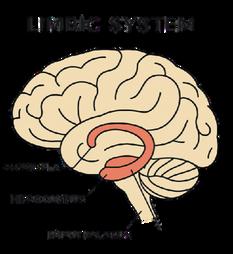
The limbic system
How this all works
The limbic system is a complex structure deep in the brain that helps control our emotions, behaviour, and memories It's sometimes called the "emotional brain" because it's where feelings like happiness, sadness, fear, and anger come from It also plays a big role in forming long-term memories The limbic system has three main parts: the amygdala (which processes emotions), the hippocampus (which helps store memories), and the hypothalamus (which controls things like stress and body temperature) What makes smell really special is that it’s the only sense that goes straight to the limbic system without being processed elsewhere first That’s why certain smells like cookies baking or a specific perfume can instantly bring back strong memories or emotions Smell and memory are powerfully linked, and this connection is what makes scents such a useful tool for boosting mood and focus
Can scents aid academic performance? Some smells might help people do better in school by improving memory, focus, or helping them feel calmer. Peppermint can make people feel more awake, and lavender can help lower stress This project looks at whether smelling scents while studying can help students learn better. If scents really help, they could be an easy way to make studying and tests less stressful
What studies say
The Peppermint Study (Barker et al., 2003)
My results
Lavender
Effect: Calms anxiety, reduces stress, helps with sleep
Why: It lowers heart rate and blood pressure, making people feel more relaxed.
Peppermint
Effect: Boosts alertness and energy, improves focus.
Why: The scent stimulates brain activity and makes people feel more awake
Lemon (and other citrus like orange)
Effect: Improves mood, increases feelings of happiness
Why: Citrus smells are energizing and can decrease feelings of tiredness or sadness
Rose
Effect: Reduces feelings of anger or frustration
Why: Floral scents are often linked to relaxation and emotional balance
Pine (like pine trees)
Effect: Lowers stress levels and creates a feeling of freshness
Why: Nature smells are calming and can make people feel mentally clear
Cinnamon
Effect: Enhances memory and cognitive performance
Why: Some studies show cinnamon helps people stay mentally sharp during tasks.

Students who smelled peppermint while studying and taking tests had better concentration and memory
How to use it: "Peppermint has been linked to improved memory and alertness”*1
The Lavender Relaxation Study (Diego et al , 1998)
People exposed to lavender showed lower heart rates and reported feeling more relaxed compared to those who smelled nothing.
How to can use it: "Lavender scent has been proven to reduce stress and anxiety levels*2”
Citrus and Mood Study (Herz, 2009)
Smelling citrus scents like lemon and orange was found to lift people's mood and reduce symptoms of depression
How to can use it: "Citrus scents can naturally boost mood and energy”*3
References
Barker, S et al (2003) The effect of aromatherapy on student performance Journal of Neurology, 17(2), pp 123–129 *3 Diego, M et al (1998) Lavender fragrance and relaxation Early Human Development, 52(2), pp 147–155 *2 Herz, R S (2009) Aromatherapy facts and fiction Chemical Senses, 34(6), pp 469–479 *2 Kritsidima, M et al (2010) Aromatherapy in dental anxiety British Dental Journal, 209(11), pp E1 Moss, M et al (2008) Effects of rosemary and lavender on
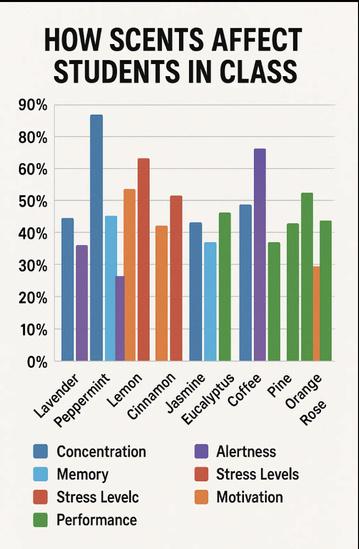
My findings
To what extent are consumers rational?
Jack ( L6th)
Economics is most often confused with the science of money Actually, it's a lot larger than that; it is the science of human choice making in the situations of scarcity and uncertainty Economics, being a social science, is interested in how people behave, how they respond to incentives, and how they decide when they cannot have everything they want. This differentiates it from natural sciences such as physics whose laws are deterministic Human behavior is not necessarily predictable or sure, and this is why the science of economics is complex and intriguing.
A central concept in mainstream economics is that consumers are rational That is, they ought to make utility maximising choices; that is, they choose what maximises their satisfaction This type of model is referred to as homo economicus, and it relies on the assumption that individuals possess complete information, infinite mental ability to sit back and think through, and enough time to reconcile each possible choice This type of model is an oversimplification, however Actual human beings most often act in ways that are not consistent with this idealised rationality.
The theory: rational consumers and utility maximisation
Standard theory in economics claims that when individuals spend, they want to maximise their utility. For example, if a person has £10 and wants to have dinner, the rational shopper will find out how much all the available meals cost and select the one that brings them the greatest satisfaction per price. The general idea is that they know what they prefer, can rank anything, and will always make the optimal decision But in everyday life, this does not tend to occur Decisions are made in a hurried, coercive, or emotional rather than rational manner
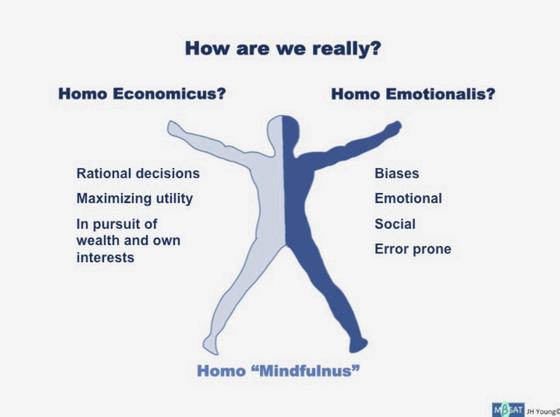

Consumers will not always be presented with all of the information available to them, or they may be swayed by presentation, habit, or brand This is where behavioural economics steps in; it tells us that human beings are not always entirely rational, and that their choice can be consistently biased
The limits of rationality: bounded rationality and biases
It was in the 1950s that the economist Herbert Simon developed the theory of bounded rationality. He attested that people do want to make well informed decisions but are constrained by three aspects: the information that they have at their disposal, the amount of time that they can devote to deciding, and the intellectual capacity to grasp everything As a consequence, people accept what is "good enough," not the best solution It is called satisficing; a mix of satisfying and sacrificing Minds also cut corners in the form of heuristics to reach quick decisions They're easy but sure to bring biases with them: behaviour contrary to pure reason:
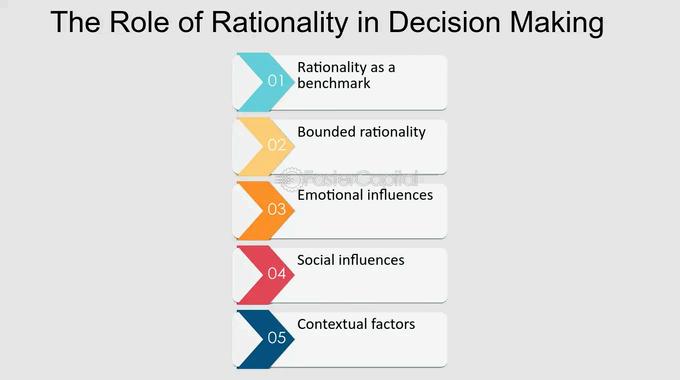

• Anchoring bias: If one "reduces the jacket price from £200 to £100", the original price recalls itself in one's memory Even if it is £100, it feels discounted due to the anchor
• Availability bias: Each time a person hears an airplane crash covered on television news, he/she tends to overestimate flying danger even though flight is safer than traveling by car
•Loss aversion: Human beings dislike losses more than they enjoy gains. One would be such a consumer who spent money on a £50 concert ticket and then will go out of their way to visit the concert when sick because they don't want to "spend" money for nothing
•Rule of thumb: Folks will always choose the cheapest brand and believe they are getting the bargain But that is not necessarily the case cheap printer ink will be depleted faster and end up costing more in the long run.
• Hyperbolic discounting: Human beings are inclined to desire rewards in the immediate present in smaller amounts rather than rewards in the future in larger amounts. A teenager prefers to spend £30 on clothes today than to save money for university This illustrates how short-term bias will beat long-term gain
These examples demonstrate human choice is guided by something larger than reason Emotion, habit, and appearance are relevant That isn't to say that customers are stupid Just that they're human.
Herbert Simon
How bounded rationality works
Homo economicus characteristics
The role of emotion and social influence
As a social science, economics needs to respond to not only reason, but emotion and identity as well People don't make decisions in isolation A football supporter can spend £70 annually on a shirt; not because it is worth it but as an emblem of their loyalty to his club. While there was a pandemic of COVID-19, people were queuing to buy toilet paper, not because they needed it, but because they observed other people doing the same These are expressions of herd behaviour, whereby people do what others do because they are afraid or because they are compelled by others Advertising also appeals to emotions. John Lewis Christmas ads, for example, barely refer to products; they are emotional narratives. These might have more influence on purchasing than facts ever could That is why economists no longer contend that utility is physical pleasure but also emotional pleasure
How governments use behavioural insights
If human beings aren't always logical, then why is this translated to public policy? Governments already started using behavioural economics in attempts to nudge people into better decision making in the last two years It also goes by nudge theory and was created by Richard Thaler and Cass Sunstein A nudge actually changes the context of choices and not restricting liberty, but positively nudging one to make wiser choices on their own behalf. Among those nudges, some of the most popular and influential ones include:
•Pensions: People in Britain get signed up to work pensions by default They can choose not to stay signed up, but they don't That's exploiting default bias people will be less inclined to handle something if they were given it automatically.
•Organ donation: Countries that employ an "opt-out" strategy i e Spain have a higher rate of organ donation compared to countries employing "opt-in" strategies. Default is overwhelmingly dominant.
•Energy bills: Certain companies show how their homes energy consumption is relative to the energy consumption of those around them. This makes individuals desire to conserve energy, through social norms.
Governments also use mandated choice; where one is forced to opt-in For example, people are forced to opt-out if they don’t want to donate organs in some countries. This is also made more tangible in other cases; e.g menu labelling of calories or banning branding on cigarette packs These are measures taken to help aid better decision making, especially for vulnerable consumers
So how irrational are consumers?
The answer is somewhere in the middle Consumers are not totally irrational; what they choose makes a small amount of sense They are not maximally rational, however They are susceptible to emotion, habit, and choice framing These actions are not crazy They are systematic and predictable, so economists can proceed and study them and develop better models
The level of rationality also depends on the context and the individual An educated consumer can compare loan interest rates closely before taking a loan But the same person can buy sweets on impulse from the counter Teenagers live in the short term The poor may have to make choices, and hence rational thinking is all the more difficult Actually, research on human behaviour suggests that scarcity; of money, of course, but of time and attention too; leads people to make bad decisions (Mullainathan and Shafir, 2013)
Finally, experience and learning will lead consumers to be more rational But even in those cases, pure rationality isn't going to occur And that is why economists are shifting the theory of homo economicus to models of actual human behaviour
Conclusion
Economics as a social science has to be based on the nature of human action Rational consumer theory is a good theory but not a life practical one. Human beings are bounded in their cognition, emotional, and socially conditioned Governments and corporations today make decisions based on outcomes of behavioural economics, sometimes in the right manner but sometimes for self interest Human beings can be rational, but not infinitely rational They are human beings, after all, and not machines. And as such, their behavior cannot be explained using mathematics alone, but psychology, sociology, and understanding
References
https://plato stanford edu/entries/bounded-rationality/ https://link.springer.com/article/10.1007/s11299-019-00203-6
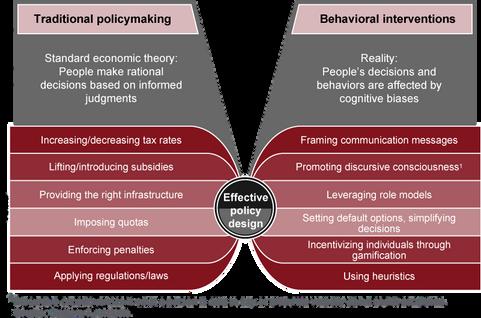
https://www taylorfrancis com/books/mono/10 1201/9780429461484/behavioral-cybersecurity-wayne-patterson-cynthia-winston-proctor https://fastercapital com/topics/rationality-and-decision-making-in-game-theory html
https://politicalscience.stanford.edu/publications/limits-rationality
https://tdhj org/blog/post/international-relations-rationality-rational-choice-cognitivelimits/#: :text=The%20Cognitive%20Limits%20Theory%20(CLT)%20argues%20that%20cognitive%20biases%20obstruct,hinder%20them %20by%20flawing%20logic.
https://www strategyand pwc com/m1/en/ideation-center/ic-research/2018/triggering-change html
The science behind music: its connection to other subjects
Esther (LS1)
Introduction
There is more to music than playing music There are many connections to other things other than playing a musical instrument such as maths, art and oral skills There are many different aspects to music and having music as part of your life is a very important skill to have. So how does music help with your day-to-day life?
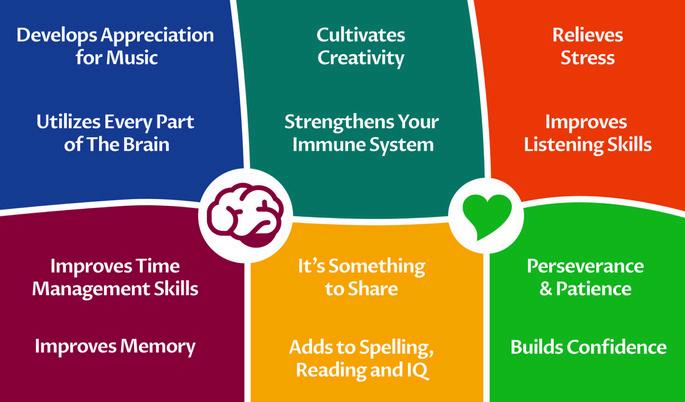
Why I choose this topic
Music has always been a big part of my life and it has helped me in many ways Therefore, I wanted to make sure that others also know how beneficial music is A lot of this information comes from my personal experiences as well as many studies that have been done. I also spoke to my music teachers to learn more about this topic
Results and statistics
It has been proven that playing music helps your creativity At school, music supports other creative subjects like Art and English There is also a connection between Music, Maths and Physics. When you play a musical instrument, you have to look out for small details such as rhythm and accidentals This is also the case in maths As when you answer a question, it is important that you pay attention to details and any possible errors that you have made Studies show that pupils who play a musical instrument have Below is a bar chart based on a study done by the University of Cambridge. The research below compared the change in examination outcomes in academic exams of children who played instruments and those who don’t 701 11-16 year old pupils took part in this study.
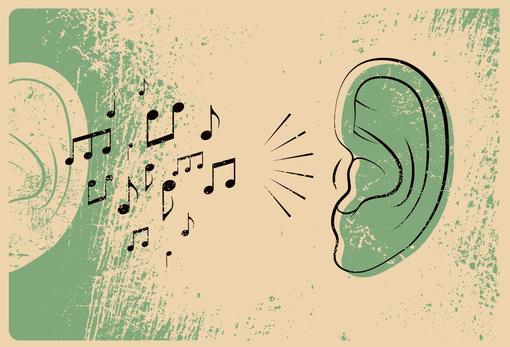
What does music help with?
Playing music also helps with hand-eye coordination which helps us to have to have a steady and controlled hand. This is especially useful to young children learning to write This skill helps with many jobs such as being an orthodontist, designer or a school teacher. Music can also help with emotional control because of how playing music activates multiple parts of your brain
How does music work?
Music is created by the vibration of air particles The vibration moves as a wave at an incredibly fast speed of around 343 metres per second. The sound waves start at the source of the sound and then travels around the room before reaching the person’s eardrum Once it has reached the person’s eardrum, the sound waves are converted into electrical signals. Electrical signals travel around our body’s nervous system and then goes back into the brain which turns the signals into what we know as music
What can we do in the future?
Knowing how music can affect many other vital parts of our life is important and also extremely helpful to us. Next, I would like to find out how we can apply this knowledge to help future generations with many other things with music Music can help with many things like maths, science and art as well as hand-eye coordination Now that we know this, we can go on to apply this information by engaging more children with music
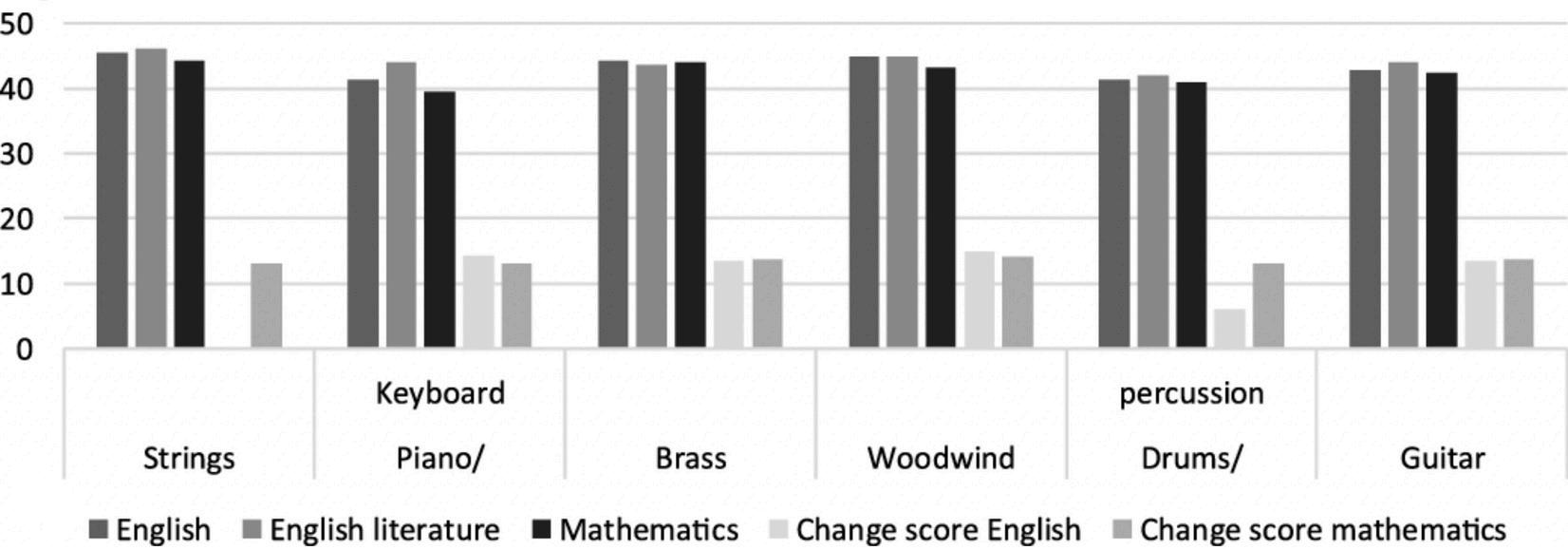
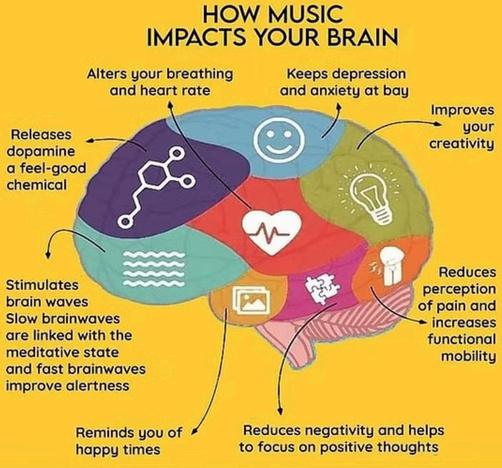
Bibliography
Olszewska, A M , Gaca, M , Herman, A M , Jednoróg, K and Marchewka, A (2021) How Musical Training Shapes the Adult Brain: Predispositions and Neuroplasticity Frontiers in Neuroscience, 15(630829) doi:https://doi org/10 3389/fnins 2021 630829 lorianpayne (2023) The science of music [online] Research Features Available at: https://researchfeatures com/science-music/ Statistics of students test results, University of Cambridge press and Assessment
Figure 2 Diagram of the brain labelled that shows how different parts of the brain are active when playing music
Fig 1 20 benefits of playing an instrument by Anna Drysdale
Chemistry, Climate Change and Pollution
From tragedy to transformation: how thalidomide reshaped pharmaceutical chemistry
Matt (L6th)
In the late 1950s, a drug sold as a safe sedative for pregnant women caused one of the most horrific medical tragedies in history Thalidomide, which was originally hailed as being effective in treating morning sickness, was later found to be teratogenic meaning it had the ability to produce severe birth defects The result was disastrous: more than 10,000 babies were born with limb deformities and other abnormalities in 46 countries
Yet, from this disaster came a revolution It reshaped the scope of pharmaceutical chemistry; in particular, it transformed the field of stereochemistry being the study of how a molecule's 3D architecture affects its behaviour within the body The thalidomide disaster did not just change regulatory policy; it changed how we think about molecules themselves
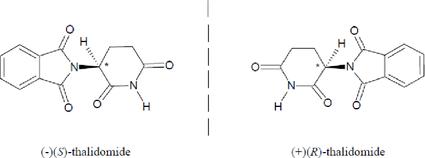
Enantiomers of
A molecular blunder: the chemistry of the disaster
At the heart of thalidomide’s danger lies chirality, a property describing molecules that are non-superimposable on their mirror images These “mirror image” molecules are called enantiomers, and though they share the same molecular formula, they can have drastically different effects on biological systems
Thalidomide has two enantiomers: one is an sedative and the other is teratogenic At the time of thalidomide, the pharmaceutical industry was neither aware of nor in control of stereoisomerism in the chemical synthesis of medicines What's more, even if thalidomide could have been administered as a single enantiomer, scientists have since shown that in-vivo racemisation (the body converts one enantiomer into the other) would have occurred regardless. The lack of enantiopure synthesis and a failure to undertake proper toxicity tests, especially in pregnancy, has led to a global tragedy that has highlighted some very glaring omissions in the control of pharmaceuticals.
A watershed for regulation and chemistry
Regulations concerning drug approval grew much stricter after the tragedy In the United States, Congress passed the 1962 Kefauver-Harris Amendments to the Federal Food, Drug, and Cosmetic Act requiring drugs to not only be shown safe, but also effective, under rigorous clinical trials Europe, as well, undertook similar regulatory reforms.
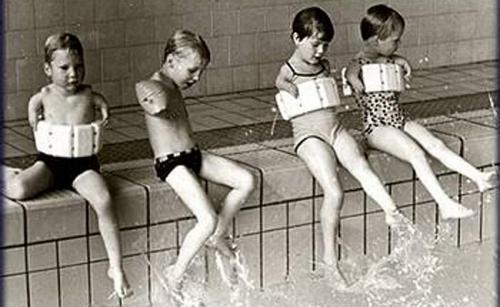
In terms of chemistry, thalidomide revolutionised the study, synthesis, and development process of chiral drugs One of the main focuses on the medicinal aspect was asymmetric synthesis: the chemistry involved in the selective formation of a single enantiomer. Concomitantly, chiral resolution techniques, such as chromatography, began to play a crucial role in pipeline design Pharmaceutical chemists soon turned their attention to the interaction of chiral drugs with receptors in the body Often this required X-ray crystallography and NMR spectroscopy to explain effects at a molecular level.
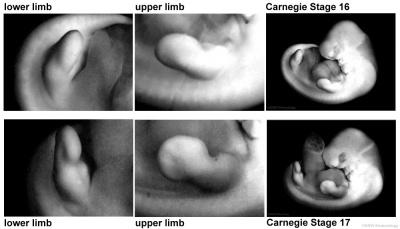
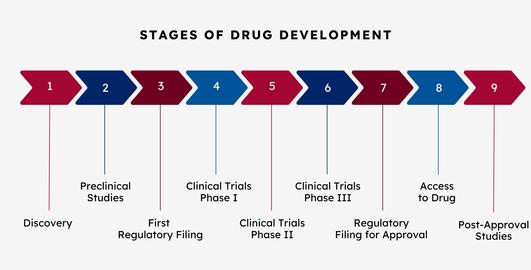
thalidomide
Limb deformities from the effects of thalidomide
Human embryonic limb development (week 6)
Interestingly, thalidomide never really went away Decades after its scandalous removal from the market, the drug emerged as a very potent therapy for multiple myeloma, a form of cancer in the blood The reason is its ability to suppress angiogenesis, which is new blood vessels that tumours need to survive
Modern analogs of thalidomide include chemically modified lenalidomide and pomalidomide, keeping the therapeutic benefit at a minimum cost of keeping the teratogenic risk to a bare minimum. Such drugs are used today under strict distribution protocols consisting of pre-dispensing pregnancy testing, controlled dispensing, and very intensive patient education. This double legacy of both tragedy and redemption makes thalidomide a singular example in the field of pharmaceutical chemistry It is at once a warning and a spur to innovation.
The ethical dimension: chemistry with consequences
Of course, the biological effects of drugs are biologically physiological, but choices relating to how drugs are designed, developed, and controlled should be in our best chemicoethics Chemists now perform drugs under stricter ethical codes since at least two animal species, typically rodents and rabbits, have to be tested for preclinical teratogenicity
Ethics review boards and pharmacovigilance systems are interfaced with each step of a drug's life cycle The thalidomide tragedy taught the world that a chemical compound can appear beautiful on paper, but if it is not adequately tested with transparency, ethical checks and balances, it will prove to be a disaster in real life
Message to future chemists
The legacy of thalidomide is far from over and that’s precisely why it matters As we develop ever more complex molecules, from chiral antivirals to mRNA delivery systems, the question of safety and structure remains paramount. The thalidomide story is a potent reminder that science without scrutiny is dangerous But with care, compassion, and chemistry, the future of medicine can be not only safer but smarter

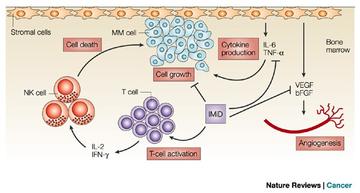
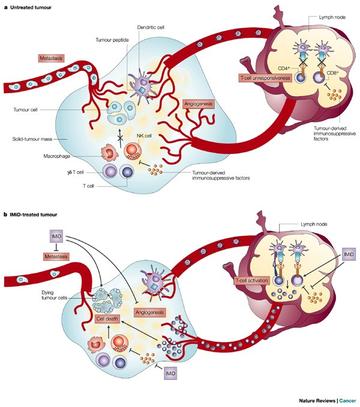
References:
https://www researchgate net/publication/324820297 Enantioseparati on of D- and Lisomers of Chiral Drugs for Improving their Bioavailability Some Techniques Including Micellization with Gemini Surfactants
https://www nejm org/doi/full/10 1056/NEJM196408272710904
https://www nature com/articles/nrc1323
https://www curefa org/stages-of-drug-development/ Lenalidomide in Multiple Myeloma: Review of Resistance Mechanisms, Current Treatment Strategies and Future Perspectives
https://www.researchgate.net/figure/A-Chemical-structures-ofthalidomide-lenalidomide-and-pomalidomide-BMolecular fig1 340675025
https://embryology med unsw edu au/embryology/index php?
title=Abnormal Development - Thalidomide

Antitumour activity of IMiDs in multiple myeloma
The potential mechanisms of IMiD-mediated antitumour activity.
Structures of thalidomide, lenalidomide and pomalidomide
Limb deformities from the effects of thalidomide
How is climate change affecting the world?
Introduction
The effects of climate change are no longer distant threats they are unfolding in real time, impacting the natural world, wildlife, and human livelihoods From retreating glaciers to altered ecosystems, the signs of a warming planet are unmistakable.
What is climate change
Climate change refers to long-term alterations in temperature, precipitation, wind patterns, and other aspects of Earth’s climate system. These changes are largely driven by human activities, such as burning fossil fuels, deforestation, and industrial processes, which increase the concentration of greenhouse gases in the atmosphere. These gases, including carbon dioxide (CO ), methane (CH , and nitrous oxide (N O), trap heat from the sun in the Earth’s atmosphere, creating a “greenhouse effect” that leads to global warming. This process increases the average global temperature, disrupting climatic patterns and contributing to extreme weather events
2 4) 2 The increased concentration of greenhouse gases has farreaching impacts on the environment Altered precipitation patterns can result in more intense and frequent droughts and floods, while shifts in wind patterns can affect storm tracks and intensity Additionally, the absorption of CO by seawater leads to ocean acidification, lowering the pH of the oceans and threatening marine life, particularly organisms with calcium carbonate shells or skeletons, such as corals and some plankton species The melting of polar ice caps and glaciers, driven by rising temperatures, contributes to sealevel rise, posing a significant risk to coastal communities and ecosystems 2
To truly grasp the gravity of this issue, we can look at specific examples of its impact across the globe The vanishing glaciers of Mount Kilimanjaro in Tanzania, the struggles of Alberta’s ski resorts to maintain viable winter sports seasons, and the plight of whales as warming oceans disrupt their habitats all illustrate the reach and urgency of this crisis. These examples reveal the interconnectedness of climate systems and the cascading effects of environmental change Let’s dive into these three case studies to understand how climate change manifests and what it means for our future
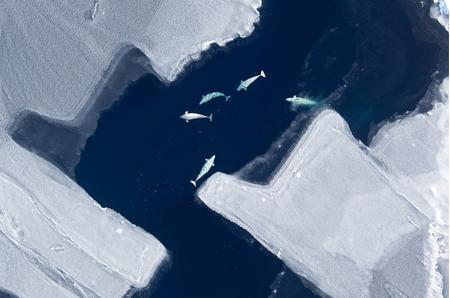
Human impact: the end of the slopes – ski resort closures in Alberta
Global warming has had a significant impact on ski resorts around the world, and Alberta, Canada, is no exception A prime example is the recent closure of the Fortress Mountain Ski Resort after nearly 60 years of operation. Warmer winters and decreased snowfall have made it difficult for the resort to maintain optimal skiing conditions As global temperatures rise, more precipitation falls as rain rather than snow, reducing the snowpack essential for skiing Additionally, shorter and milder winters mean that ski seasons are getting shorter, further limiting the time available for winter sports.
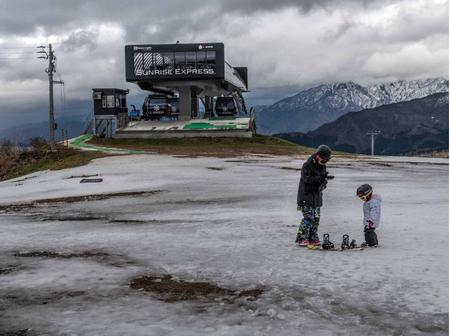
The closure of Fortress Mountain highlights a broader trend affecting ski resorts globally due to climate change. Resorts across Alberta and other regions are experiencing similar challenges For instance, the reduced snow cover and higher temperatures force resorts to rely heavily on artificial snowmaking, which is both costly and energy-intensive However, even artificial snow cannot fully compensate for the natural snow lost due to warming temperatures. As climate change progresses, the frequency and intensity of these impacts are expected to increase, posing a significant threat to the ski industry. This trend underscores the urgent need for action to address climate change and protect these winter recreation areas
Wildlife at risk: Artic whales
Climate change is also having a significant effect on whale populations, particularly in the Arctic and Antarctic regions. As ocean temperatures rise, the ecosystems that whales depend on are being altered. For example, many whale species rely on cold waters rich in nutrients for feeding, and as these waters warm, the availability of food such as krill and plankton is diminishing.
Secon, H (2020) Photos of abandoned ski lifts and snowless slopes reveal the toll that rising temperatures are taking on winter resorts, Business Insider
Galoustian, G. (2016) Climate warming and melting sea ice impacts on Arctic whales, FAU
Lyla (M)
This not only affects the whales’ ability to find food but also forces them to travel farther and expend more energy to sustain themselves
Additionally, changes in ocean temperatures and acidification are disrupting migration patterns, as whales struggle to adapt to shifting feeding grounds and breeding areas These changes not only threaten the survival of individual whales but also have broader implications for marine ecosystems As keystone species, whales play an important role in maintaining the health of the ocean by helping regulate the populations of other marine animals. The decline in whale populations due to climate change could lead to a cascade of effects, upsetting the balance of marine ecosystems Addressing climate change and protecting ocean habitats is crucial to ensuring the survival of these magnificent creatures and the overall health of the planet’s oceans.
Nature’s struggle: the vanishing ice of Kilimanjaro
Climate change is also profoundly affecting natural environments, with Mount Kilimanjaro in Tanzania serving as a striking example Kilimanjaro’s glaciers have been retreating rapidly over the past century, with studies showing that the ice cover has shrunk by more than 80% since 1912 This glacier melt is primarily driven by rising global temperatures Warmer air holds more moisture, leading to increased sublimation the process by which ice turns directly into water vapor without melting first. Additionally, changes in precipitation patterns have resulted in less snowfall, further reducing the glaciers’ ability to regenerate

The loss of Kilimanjaro’s glaciers has significant ecological and hydrological consequences. These glaciers are a crucial water source for the surrounding ecosystems and communities, especially during the dry season As the glaciers shrink, rivers fed by glacial meltwater are drying up, impacting agriculture, wildlife, and human populations that depend on this water. Moreover, the retreat of these glaciers is an indicator of broader environmental changes that threaten biodiversity and disrupt natural processes
Conclusion
In conclusion, climate change is having far-reaching impacts on both the environment and wildlife, as demonstrated by the shrinking glaciers of Kilimanjaro, the closure of ski resorts in Alberta, and the struggle of whales in the oceans These changes highlight the urgent need for global action to mitigate the effects of climate change As individuals, we can make a difference by reducing our carbon footprint through measures such as using energy-efficient appliances, driving less, and supporting renewable energy sources Additionally, advocating for policies that promote sustainability and environmental protection can drive systemic change. While the challenges are immense, collective action can help protect our planet and its ecosystems for future generations
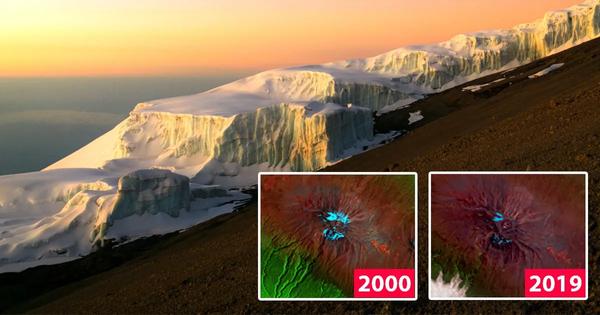
References
Bolles , D. (2024) Evidence - NASA science, NASA Available at: https://science nasa gov/climatechange/evidence/ (Accessed: 01 January 2025)
Frantz, G (2024) Alberta ski hill closes permanently after nearly 60 years of Operations, SnowBrains Available at: https://snowbrains.com/alberta-skihill-closes-permanently-after-nearly60-years-of-operations/ (Accessed: 01 January 2025).
User, C (2024) Mount Kilimanjaro Glaciers : Estimated to be gone by 2050, Climbing Kilimanjaro. Available at: https://www climbingkilimanjaro com/mount-kilimanjaroglaciers-estimated-to-be-gone-by2050/#:~:text=According%20to%20th e%20UN’s%20Intergovernmental,by %202050%2C%20if%20not%20soone r (Accessed: 01 January 2025)
Marino, J (2024) Historic Ski Resort announces immediate closure after battling decade of insurmountable conditions: ‘mother nature has not been kind to us’, The Cool Down. Available at: https://www thecooldown com/greenbusiness/alberta-ski-hill-closedwarmtemperatures/#:~:text=The%20slopes %20were%20only%20open,over%20t he%20past%20seven%20years &text =A%20famous%20ski%20resort%20i n,closed%2C%20per%20reports%20b y%20SnowBrains (Accessed: 01 January 2025)
Wildlife, W (2022) Whales in a changing arctic: A call for action, WWF Arctic Available at: https://www arcticwwf org/thecircle/stories/whales-in-a-changingarctic-a-call-for-action/# (Accessed: 01 January 2025)
Szesciorka, A.R. and Stafford, K.M. (2023) Sea ice directs changes in bowhead whale phenology through the Bering Strait - movement ecology, BioMed Central Available at: https://movementecologyjournal bio medcentral.com/articles/10.1186/s40 462-023-00374-5 (Accessed: 01 January 2025)

Kilimanjaro, U (2024) The last glaciers of Mount Kilimanjaro, Ultimate Kilimanjaro
Mount Kilimanjaro’s glacier
Mount Kilimanjaro’s glacial retreat
How do marine mammals communicate to survive and how are they impacted by human noise pollution?
Oliver (LS2)
Introduction
My project focuses on marine mammal communication and how their survival is impacted by human noise. I will describe how their underwater communication works and what they use different types of communication for
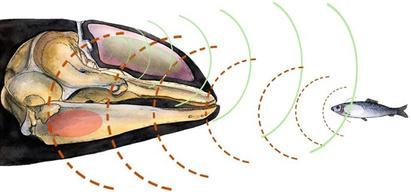
Acoustic communication
Many marine mammals use acoustic communication such as dolphins, whales and seals. Dolphins use whistles and clicks to hunt, recognise each other and stay in touch with their pod Seals and sea lions bark to help pups stay connected with mothers, attract mates and protect their space. Toothed whales use clicks and sound patterns (codas) to communicate with family, hunt and share identity Some whales even have a “phonetic alphabet” with the codas. dolphins can also use echolocation, along with whales, to visualise the space underwater through sound

References
Whale and Dolphin Conservation (n d ) How do dolphins communicate? Available at:https://uk whales org/whales-dolphins/how-do-dolphins-communicate (Accessed: 15 May 2025)
ScienceDirect (2019) Dolphin echolocation and communication Available at: https://www sciencedirect com/science/article/pii/S1558787819300313 (Accessed: 15 May 2025)
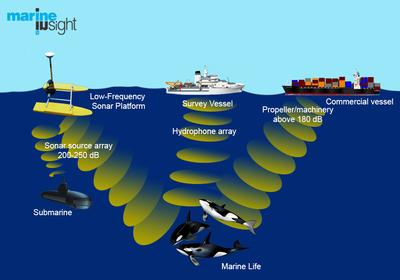
Tactile communication
Dolphins and seals use tactile communication to show affection, recognise each other and calm each other They rub against each other and nuzzle others.
Body language
Seals and sea lions show their dominance or docility through body posture and movement while dolphins use actions to show their emotions or warn and get attention from others.
How the communication helps them survive
Marine mammal communication helps them survive in many different ways such as staying together as a group, hunting more effectively, look after their children, avoid danger, and navigate their home.
How we affect them through noise
Our loud noise like boats, sonar and drilling in the ocean can drown out their sounds, confuse the echolocation, cause them stress, separate families and force animals to leave their home.
Conclusion
In conclusion, I think that marine mammals have interesting ways of communication such as humans do like how we use posture to change peoples view of us, just as seals do.
They are greatly negatively impacted by our noise pollution and lose many functions when not being able to warn others or show bonds.
Reuters (2024) Scientists document remarkable sperm whale ‘phonetic alphabet’ Available at: https://www reuters com/science/scientists-document-remarkable-sperm-whalephonetic-alphabet-2024-05-07 (Accessed: 15 May 2025)
Wikipedia (n d ) Pinniped – Communication Available at: https://en wikipedia org/wiki/Pinniped#Communication(Accessed: 15 May 2025)
National Geographic (n d ) Dolphin communication and social behaviour Available at: https://www nationalgeographic com/animals/article/dolphins-communication-social (Accessed: 15 May 2025)
NOAA (n d ) Common bottlenose dolphin Available at: https://www fisheries noaa gov/species/common-bottlenose-dolphin (Accessed: 15 May 2025)
NOAA Ocean Service (n d ) What is ocean noise? Available at: https://oceanservice noaa gov/facts/ocean-noise html(Accessed: 15 May 2025)
PubMed (2024) Effects of anthropogenic noise on marine mammals Available at: https://pubmed ncbi nlm nih gov/38165752 (Accessed: 15 May 2025)
Effects of noise pollution from ships on marine life
Tactile communicaation between marine mammels
Acoustic communication in marine mammels
Building a Greener Future
Haileybury SciTech -
A sustainable science building

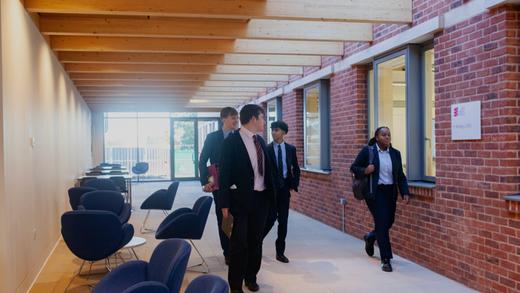

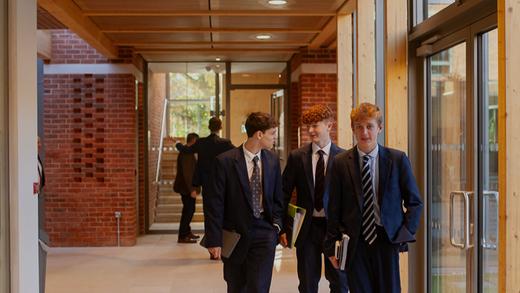
The SciTech building, designed by Hopkins, is nurturing the next generation of scientists by encouraging a culture of research-based learning in schools
SciTech has provided Haileybury and other pupils with something fantastic and contemporary but which also embraces the history, heritage and traditions of the school The SciTech buildings have great sightlines and allow pupils and visitors to look out and see the beautiful campus.
‘We wanted to accentuate research-based learning, and the concept has flourished way beyond our expectations There are some deliberately undesignated spaces here which support individual study and research. The children have already inhabited those as their own We wanted this building to be a living, dynamic building that pupils feel belongs to them I didn't foresee the levels of pupil ownership and the way they have adapted to the space. That’s been very rewarding They are clever and motivated, and now they have a resource which facilitates that interest And it's not just the 18 year olds, it's the 11 year olds as well. They’ve started as they mean to go on!’
- Martin Collier



Chris Smith - SciTech project architect from Hopkins Architects
An interview with Chris Smith - SciTech project architect from Hopkins Architects.
What inspired the design of the SciTech building, and how did sustainability influence your vision?
The biggest inspiration for the new buildings was the fantastic historical context already within the Haileybury site The main quad, and its cloister, provided a great precedent for how the new teaching spaces could connect with the existing Science and Design Technology buildings within the SciTech boundary.
The original brief was based on a previous masterplan, which proposed to demolish the existing 1990s DT building and replace with new facilities in a two-phase development. An open courtyard was to be created with a new building to the north and the retained, listed 1930’s Herbert Baker Science building to the west
A key aspect of our competition winning scheme was that we were able to retain the existing DT building, which was already working well for the school This yielded benefits in terms of integration, historical continuity, cost efficiency and sustainability The retention of the building also meant that staff and pupils could continue to use it throughout the construction period, reducing disruption and loss of facilities
The design integrates new and existing buildings around a central courtyard, connected by a cloister at ground floor, creating an active space for study, mentoring and exhibitions The existing buildings on the site presented challenges in optimising the massing and orientation of the proposed Teaching and Research Buildings for maximum efficiency
Despite these constraints, the façades of both structures are closely aligned to cardinal directions, facilitating effective solar control. The Research Building, with its compact design, features a smaller external envelope, resulting in an efficient building form that reduces heat loss Conversely, the Teaching Building, while less compact, benefits from a narrow layout that allows for natural cross-ventilation in all lab spaces
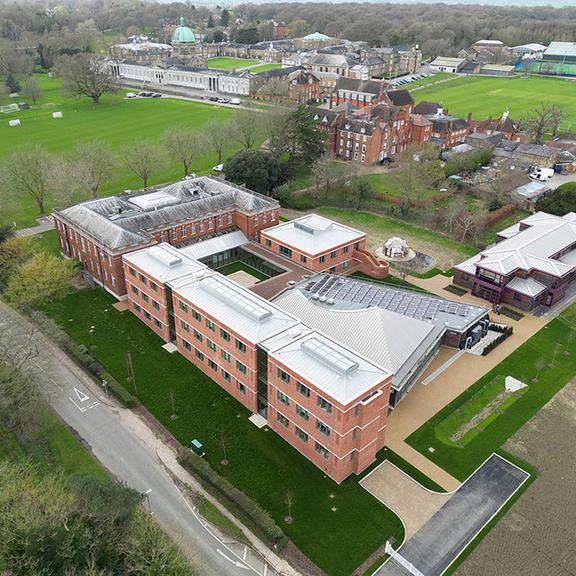

Can you explain the choice of materials for the building? Were any locally sourced or recycled materials used?
The external material choices were again influenced by the heritage and high-quality brick and stone buildings within and around the site The red-multi brick choice looked to emulate that of Baker’s Science building, appearing as a modern extension of the south wing on Hailey lane The brick and stone removed when creating the connection through the science building was proposed to be reused for the piers either side of the opening and at the base, where the ground level was lowered. Pure hydraulic lime mortar was used for all brickwork, allowing for the potential reuse of bricks at the building's end of life, significantly enhancing sustainability and circularity goals
Repetitive high performance, composite timber / aluminium windows stepping in and out of the new façades, create architectural interest and rhythm Glazed stair cores break up the biology building’s mass, utilising cross and stack ventilation The terne coated stainless steel roofs respond to the Baker building roof finish and provide further circularity possibilities, and the green roof above the cloister further enhances ecology on site.
Internally, the school’s ambitious sustainability goals and early engagement have had a positive influence The new building structure utilises cross laminated timber (CLT) walls, floors, stairs, and roof slabs, as well as glulam columns and beams throughout. The design team were able to prove a significant reduction in embodied carbon by using a timber frame, compared to either concrete or steel The construction method was able to utilise offsite manufacturing processes, improving buildability, quality, speed of assembly, carbon reduction and waste minimisation. The wood used is PEFC and FSC certified.

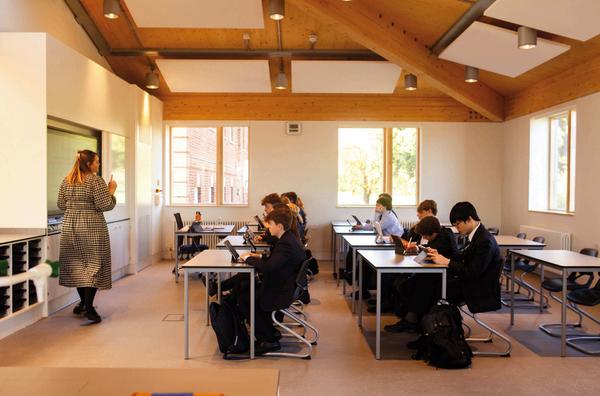
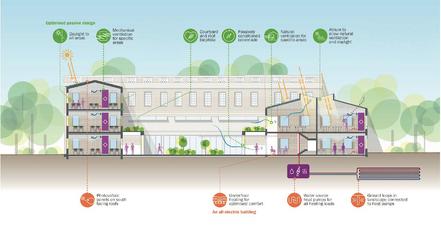


What energy-efficient technologies or systems were integrated into the building’s design, such as solar panels, insulation, or smart lighting?
The new buildings utilise numerous energy-efficient technologies, also making use of the existing buildings and open areas surrounding the site Ground source heat pump pipework has been buried below the playing fields adjacent college lane, which is used for both heating and hot water supplies The buildings are gas free (apart from Bunsen burners!) The flat roof above the existing DT building has been used for an extensive solar panel installation, helping to lower the buildings electricity usage, together with energy efficient light / electrical fittings and controls Teaching spaces are equipped with Mechanical Ventilation with Heat Recovery (MVHR) systems, in conjunction with natural ventilation.
Are there any features designed to conserve water, such as rainwater harvesting or efficient plumbing systems?
The landscaping across SciTech has been designed to create additional learning environments but also double up as opportunities for water retention and wildlife habitats The project integrates Sustainable Drainage Systems (SuDS) features, including green roofs, a new swale, a partly planted courtyard, and enhancements to expand the existing pond, along with the creation of a new one These SuDS not only manage rainwater runoff effectively but also contribute to biodiversity and enhance the overall sustainability of the site. Low-water fixtures have also been installed wherever possible
How does the building take advantage of natural elements like sunlight, wind, or natural ventilation to reduce its energy usage?
Cross ventilation is utilised in the dual-purpose teaching areas to optimise fresh air provision and thermal comfort The design also incorporates roof openings on the upper levels to facilitate stack effect ventilation All teaching spaces are equipped with MVHR systems and natural ventilation remains an available option For glazing, a careful balance was specified, aiming for a low solar heat gain g-value and a high light transmittance This balance ensures that teaching spaces receive ample daylight, reducing reliance on electrical lighting and associated energy consumption, all while effectively managing the risk of overheating
What steps were taken during construction to minimize the building's carbon footprint?
Cross-Laminated Timber not only offers structural strength and versatility but also contributes significantly to reducing construction waste Unlike traditional construction methods that often generate substantial amounts of waste due to cutting and shaping of materials on-site, CLT is prefabricated off-site to precise specifications This precision manufacturing process minimises on-site waste generation by optimising material usage and reducing the need for excess cutting or trimming during construction. An initial study caried out showed that a CLT construction reduced the structure’s embodied carbon by up to 56% compared to traditional structural methods
Was the building designed with future adaptability in mind to ensure its sustainability over time?
The project integrates open and flexible spaces alongside formal teaching areas to cultivate dynamic learning environments These spaces are designed to adapt to a multitude of teaching methods and activities, fostering collaboration, creativity, and engagement among students and educators Moreover, they are constructed with future adaptability in mind, ensuring that they can evolve alongside changing educational needs. This emphasis on adaptability not only enhances the learning experience but also future proofs the facility, allowing it to remain relevant and effective in the future
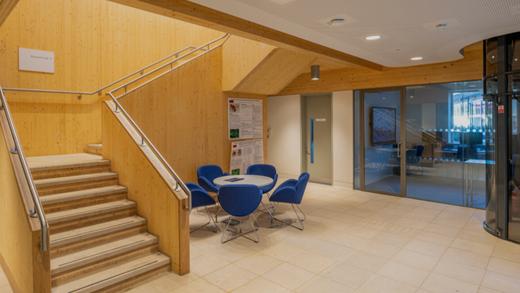
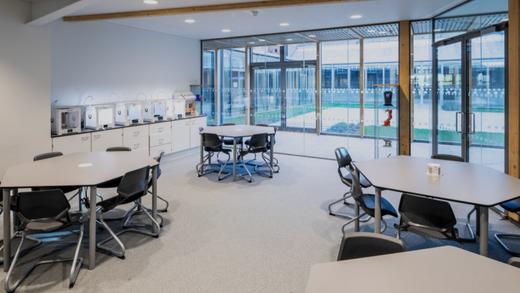
Did the construction incorporate or enhance biodiversity, such as green roofs, native landscaping, or wildlife-friendly features?
The scheme focused on enhancing biodiversity and ecology by incorporating a range of elements aimed at fostering ecological resilience and habitat diversity Key features included a wildflower green roof and meadow, designed to provide a haven for pollinators and other wildlife, and the expansion and enhancement of the existing pond, which improved aquatic biodiversity and created a richer habitat for a variety of species Additionally, a new swale was established to the east of the DT, further contributing to sustainable water management and habitat creation The tree selection across SciTech site was diversified, introducing a greater variety to support wildlife and enhance the site's aesthetics.
Further measures include the installation of swift boxes and integrated bat boxes, providing essential roosting and nesting spaces for these important species The project's design incorporated these elements with ecological principles at its core, as evidenced by calculations conducted by the project's Ecologist at the design stage. This showed a Total Net Percentage Gain of 17 52% for habitat This significant gain underscores a strong commitment to maintaining and enhancing biodiversity, ensuring that the development contributes positively to the local ecosystem, strengthens ecological networks, and supports the long-term health and resilience of the site's natural environment
How does the SciTech building contribute to the broader community's sustainability goals or educational mission?
SciTech has been designed to create a variety of environments that can be utilised for learning, both internally and externally The upper floor of Research is purposely an open plan, collaborative space, with the potential for seminar use or external events We believe the building provides a precedent for the rest of the Haileybury site, and its surroundings in terms of sustainable design It is an example of how existing buildings can be enhanced and improved, rather than just demolished and rebuilt We hope the building can inspire those who use it to become scientists, designers, and engineers, as well as provide an insight into how the built environment can positively impact people’s wellbeing We hope the building creates a successful learning environment, assists collaboration between all STEM subjects, and can encourage social interaction The lessons taught in these buildings should contribute positively to the broader community for generations to come
What were the biggest challenges in designing and constructing a sustainable building, and what innovative solutions did you use to overcome them?
All construction projects come with their own challenges, no matter their size Thankfully, this keeps our job interesting Sustainability should be at the forefront of designing any building, particularly given the impact the construction industry has on the environment Integrating sustainability from the outset is a fundamental requirement to any design solution at Hopkins Simple solutions, such as the building’s siting, form and fabric, can have the greatest impact on energy conservation, and often with the least capital cost
Our approach to sustainable design can be summarised below, which we believe has been implemented successfully at Haileybury:
Clear strategic thinking from the inception and establishing an ethos of collaboration with the client, consultants, and specialists to focus on the right environmental solutions for the project
Challenging the brief to ensure that the building is no larger than it needs to be, whilst not compromising the full range of uses
Taking a reductive approach to energy use, exploring passive environmental strategies, and drawing on our experience developing, when appropriate, sophisticated building envelopes to minimise energy demand.
Selecting robust, durable and locally sourced materials wherever we can
Designing with circularity at the forefront of our thinking, to make a building that can be adapted for future uses, where components and materials can continue their journey in the building cycle
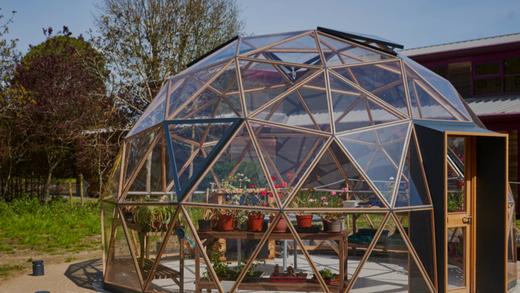

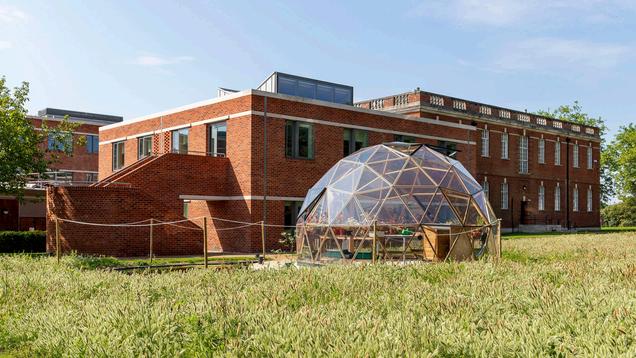

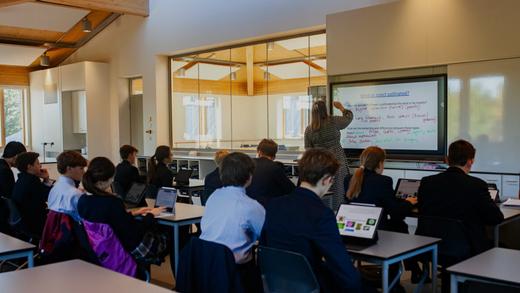
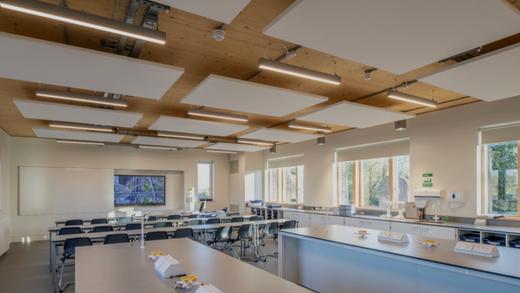
Drinkable Rivers: A vision for a healthier future
Charlie (L6th)
Rivers have long been the arteries of human civilisation, providing water for drinking, agriculture, industry, and transportation However, as human activity has intensified, many of the world’s rivers have become heavily polluted, making them unsafe sources of drinking water In some places, the water flowing through rivers is so contaminated with toxins, chemicals, and bacteria that it poses serious health risks
Despite these challenges, a growing movement aims to restore the purity of rivers and turn them into safe, drinkable water sources once again One of the leading figures in this movement is Li An Phoa, an expert in water sustainability and a strong advocate for transforming our relationship with rivers With insight from Phoa’s work and the global efforts toward cleaner, healthier rivers, the goal of drinkable rivers could become a reality.
The problem: polluted rivers
Rivers have become increasingly polluted over the past century. Industrial waste, agricultural runoff, urban sewage, and plastic pollution have all contributed to deteriorating water quality. Today, rivers such as the Ganges in India, the Yangtze in China, and the Mississippi in the United States suffer from severe contamination, making their water unsafe for drinking without extensive treatment
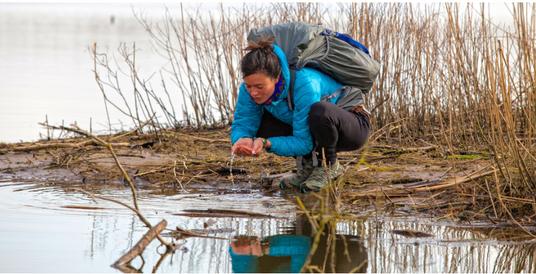
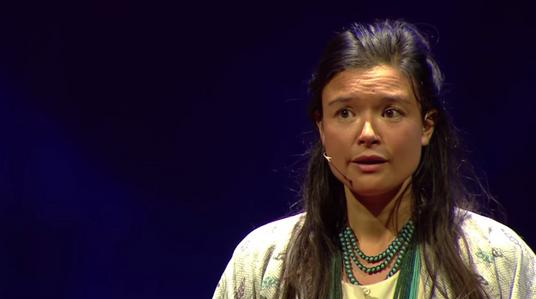
According to the World Health Organization (WHO), over two billion people worldwide lack access to safely managed drinking water, with many relying on rivers for their daily needs.
The dream of drinkable rivers is slowly becoming a more realistic goal, thanks to advancements in pollution management, ecological restoration, and innovative water treatment technologies.
Li An Phoa: a visionary in river restoration
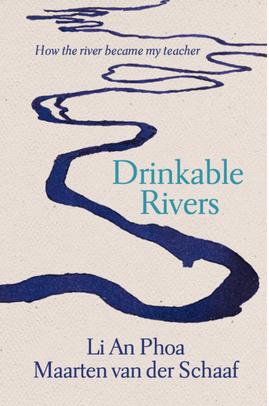

Li An Phoa, a renowned expert in water sustainability, has been at the forefront of efforts to restore the world's rivers and rethink our approach to water management Phoa, who has worked extensively in the field of water policy, emphasises the need for a fundamental shift in how we view water For Phoa, rivers are more than just sources of water They are essential ecosystems that require careful protection and restoration.
In her work, Phoa advocates for a holistic, integrated approach to water management, one that recognises human, ecological and river health are intertwined. She often refers to the “One Health” framework, which links the health of people, animals, and the environment. Phoa’s research highlights that when rivers are polluted, both ecosystems and human populations suffer from the consequences of the spread of disease, water scarcity, and ecosystem collapse
Phoa's work challenges the conventional view Instead she promotes a perspective that values rivers as complex ecosystems in need of protection This vision involves reducing pollution and prioritising water sustainability
What makes a river drinkable?
For a river to be deemed drinkable, it must meet several key criteria. The water must be free from harmful contaminants such as heavy metals, industrial chemicals, bacteria, and other pathogens There are various methods of achieving this, each with varying degrees of intervention:
1 Pollution prevention and reduction: The first step to making rivers drinkable is preventing pollution from entering them This means regulating industrial waste, improving agricultural practices to reduce fertiliser and pesticide runoff, and enhancing wastewater treatment. Pollution control is the foundation of restoring rivers to a drinkable state.
Care for Drinkable Rivers - Li An Phoa - TEDxVenlo
2 Ecological restoration: Rivers naturally filter their water through surrounding ecosystems such as wetlands, riparian zones, and forests. Restoring these ecosystems is crucial for maintaining water quality and improving the health of rivers.
3 Advanced water treatment: While Phoa emphasises nature-based solutions, technology also plays an important role in turning contaminated rivers into drinkable water sources.
4 Sustainable water management: Effective river basin management involves understanding the flow of water through a landscape, including how land use and climate change affect water quality. Sustainable management strategies consider both human and ecological needs, ensuring that rivers can continue to provide clean water in the long term
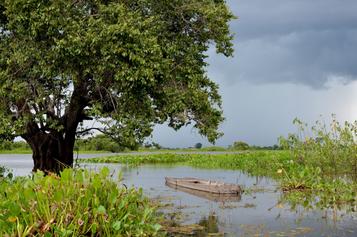
Technological innovations for drinkable rivers
Global efforts to restore drinkable rivers
Several countries and organisations are working toward restoring rivers to the point where their water can be safely consumed These projects focus not only on cleaning up polluted rivers but also on ensuring that water resources are managed sustainably for future generations.
Perhaps one of the most challenging river restoration projects in the world is the cleanup of the Ganges River in India. Despite its cultural significance, the Ganges is heavily polluted, and millions of people depend on its waters for daily use The Namami Gange Program, launched by the Indian government in 2014, focuses on reducing pollution, improving sewage treatment, and restoring the river’s ecosystem While progress has been slow, there have been signs of improvement, with reduced pollution levels in some sections of the river
In addition to ecosystem restoration, technological advancements are playing a critical role in making rivers drinkable again Emerging technologies such as smart water sensors allow authorities to monitor water quality in real time, detecting contaminants swiftly. This enables quicker responses to pollution events, improving the chances of preserving water quality before it becomes unsafe
The role of communities in restoring rivers
Another important factor in turning rivers back into drinkable water sources is the involvement of local communities In many regions, local populations are the most affected by poor water quality and they are often the best suited to drive change
Community-driven efforts, such as river cleanups, tree planting along riverbanks and public education campaigns can have a significant impact on water quality and help implement long-term solutions that protect and restore these vital resources
At Haileybury we also participate in the Drinkable Rivers Campaign and on a Wednesday afternoon, under the guidance of Dr Simonovic, take samples from the River Lea such as flow rate and nitrate and phosphate tests to check for fertiliser run off into the river, which we then test back in the lab We publish our results on an international database where we can also see the findings of other schools and communities This year we are currently monitoring a particular location to see if the quality of the water fluctuates over the seasons From what we have seen so far, although not drinkable, due to bacteria, the river cleanliness is of a good standard in Hertford
Conclusion: the path forward

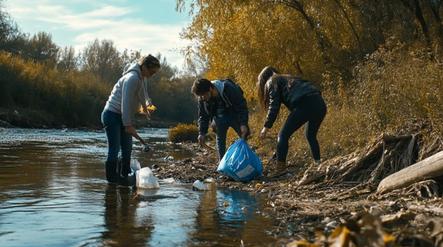
Li An Phoa’s work highlights the overlap between human health, ecosystem preservation, and water management With the right combination of policies, technological innovations, and community involvement, rivers around the world can be restored to provide clean, fresh water once again. The road to drinkable rivers may be challenging, but with concerted global efforts, it is a future worth striving for
A wetland surrounding the Paraguay river in the Pantanal, Brazil
India’s Namami Gange mission gets UN recognition
River clean up effort
EcoMaps
Jack (L6th)
At Haileybury, we have always believed in thinking big - whether it’s about academic excellence or sustainability With this in mind, I’m thrilled to share our latest endeavor: the Haileybury EcoMap This is a groundbreaking and unique initiative that places our pupils at the forefront of ecological exploration and conservation. The EcoMap is more than just a project; it’s a journey into the heart of our school’s natural environment, designed to engage pupils with their local surroundings
The Haileybury EcoMap offers a unique opportunity to combine hands-on learning with real-world impact Through this initiative, students aren’t just learning about ecology; they’re actively contributing to it The central goal of the EcoMap is both ambitious and exciting: to create a dynamic, interactive map that charts the diverse habitats and species across our school grounds and surrounding areas

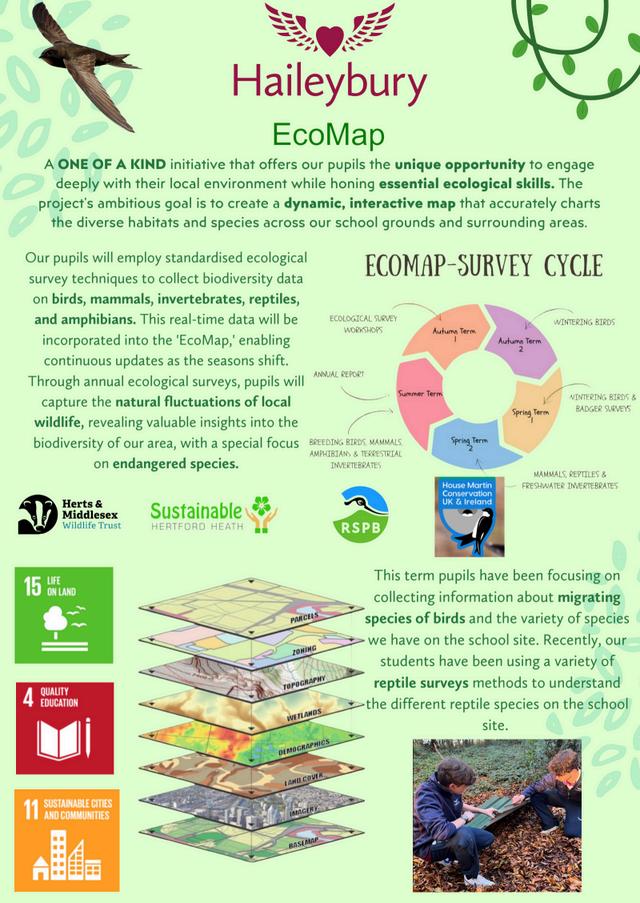
Think of it as a living, breathing map, continuously evolving to reflect the rhythms of nature throughout the year.
Our pupils will learn ecological survey techniques to gather data on a wide range of wildlife, from birds and mammals to invertebrates, reptiles, and amphibians.
These workshops, designed to teach essential survey methods, ensure that students develop not only ecological skills but also a deeper understanding of biodiversity. What makes the EcoMap truly exceptional is its real-time functionality As pupils collect data season by season, the map will transform into a vivid representation of our natural world’s fluctuations.
At its heart, the Haileybury EcoMap is about fostering a deep connection between our pupils and the environment It’s about inspiring a generation of students to care for the world around them, equipping them with skills and knowledge that will serve them well beyond the classroom
This one-of-a-kind initiative isn’t just a project it is a call to action If you’d like to learn more or get involved, please contact myself or Mr Metcalfe as we continue to chart our way through the wild and wonderful world of Haileybury’s ecosystems After all, the best way to learn about nature is to step outside and start exploring!
Isaac Newton’s apple tree comes to Haileybury
Haileybury celebrated a historic moment with the planting of a direct descendant of Sir Isaac Newton’s famous apple tree in our Main Quad.
This sapling, one of only ten distributed by The National Trust and Blue Diamond Garden Centres, is propagated from the 400-year-old Flower of Kent apple tree at Woolsthorpe Manor, Lincolnshire, where Newton formulated his theory of gravity.
The planting ceremony marked the culmination of a project led by Deputy Master, Simon Heard, who secured this prestigious gift through the generosity of donors The sapling’s location in our William Wilkins-designed Quad creates a poetic connection to Trinity College, Cambridge, where another genetically identical tree grows near Newton’s former rooms.
This living piece of scientific history will serve as an inspiration for generations of Haileybury pupils. As it grows, the tree will stand as a testament to the power of curiosity and discovery, embodying the spirit of innovation that we aim to encourage in our pupils.
“We have just finished building a brand-new Science, Technology and Research Centre, where we hope pupils will learn about modern research as well as the great scientific discoveries, deductions, theories and advancements, which have taken place over the years, not least the Theory of Gravity
Having one of Sir Isaac Newton's very own Apple Tree descendants planted and then growing in the landscaped grounds seemed to be too good a chance to pass up! We are so excited that all future generations of pupils coming to the School will be able to work and study alongside such a significant piece of scientific history ” - Simon Heard

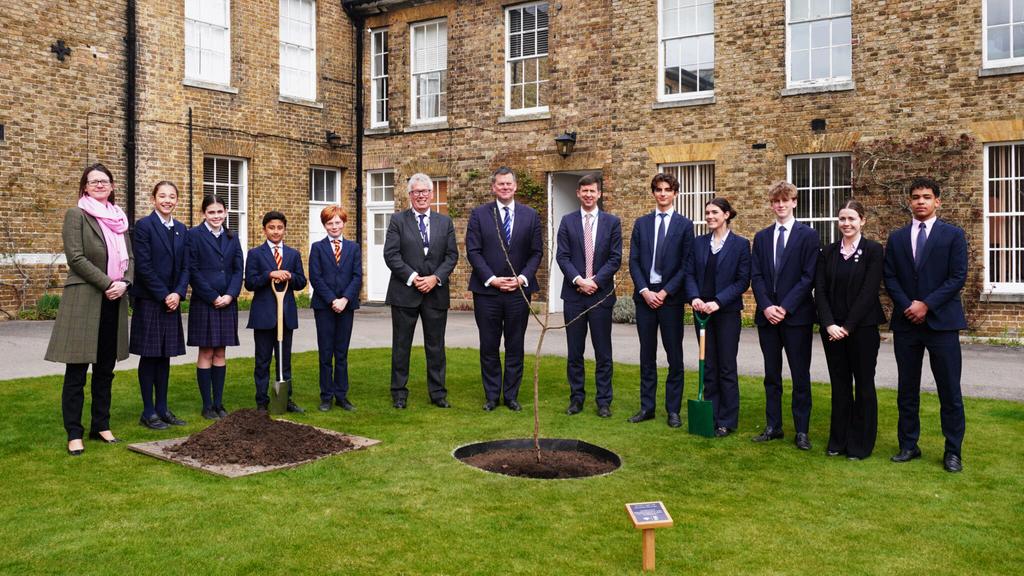
Using Science to Make a Difference
Advancing sustainable construction: The Senior Engineering Society's collaboration with Haileybury Youth Trust
Summer (U6th)
Introduction
The Senior Engineering Society has embarked on an innovative project in collaboration with Haileybury Youth Trust (HYT), a charity dedicated to improving the lives of young people in Uganda At the heart of this initiative is the development of Interlocking Stabilised Soil Blocks (ISSB), which are made from a mixture of inorganic subsoil, known as marram, combined with a small amount of cement and sand These blocks are compressed using a specialised manual compressor, allowing them to interlock without the need for firewood and significantly reducing cement usage This sustainable construction method not only facilitates the building of essential structures, such as schools and water tanks, but also provides direct employment opportunities for local communities in Uganda By replicating and enhancing the brick manufacturing process utilised by HYT, our goal is to construct a structure at Haileybury that showcases the remarkable work of this charity
Progress since the last update
Since our last update in the summer of 2024, the Senior Engineering Society has made substantial strides in our project. Over the past three terms, we have engaged in a series of activities that have brought us closer to our goal Our first significant step was to hold a meeting with engineers from HYT in Uganda, which provided us with invaluable insights into the brick-making process and the challenges faced in the field.
One of our major accomplishments was the purchase of the Makiga brick compressor, which is now housed in our SciTech building This machine is crucial for the production of ISSB bricks, and we have already begun the process of making bricks. Sourcing materials for our bricks has presented unique challenges, as the soil and other components available around our school differ significantly from those found in Uganda The primary ingredients for our bricks include soil, sand, cement, and water, and we have been experimenting with various compositions to achieve optimal strength and durability.

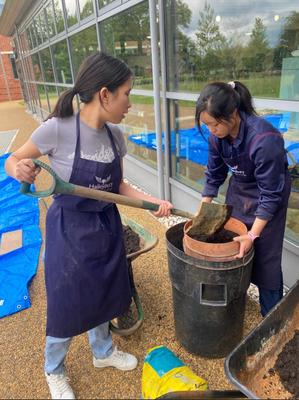
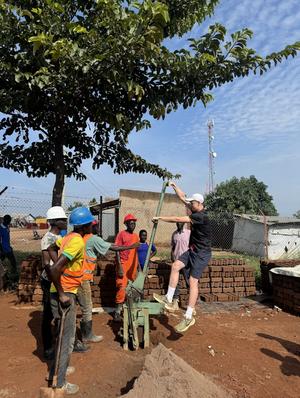
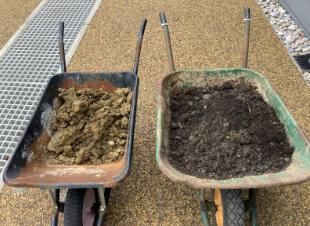
Initially, our bricks lacked the necessary strength and were prone to breaking. However, through careful adjustments to the ratios of soil, sand, and water, we gradually developed a more robust brick Additionally, we encountered challenges in removing the bricks from the compressor without deforming their shape To address this, we implemented a solution by adding a thin layer of plastic beneath the material before compression, allowing for smoother removal.
Another logistical challenge we faced was the mobility of the compressor Since we needed to produce bricks outdoors, we set up our operations in the outdoor area next to the Design Technology (DT) building. However, transporting the compressor back indoors after use proved to be cumbersome. To solve this, we mounted two long blocks of wood and added wheels to one end, enabling us to easily wheel the compressor around
Sand and soil sourced from school grounds
The compressor machine
The Senior Engineering Society building bricks at Haileybury
Haileybury pupils visiting Uganda in 2024
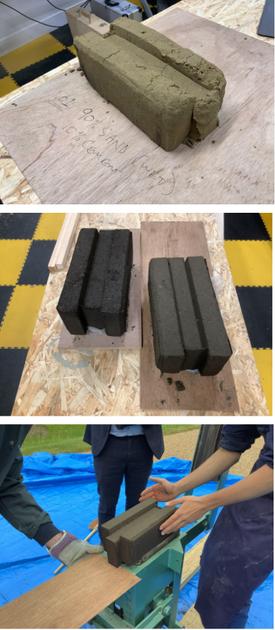
Innovating brick design
A key objective of our project is to enhance the existing techniques employed by HYT. Currently, HYT constructs the corners of their huts using the same blocks, which requires cutting off excess material and applying additional cement to secure the exposed surfaces Our team is dedicated to finding a more efficient solution that eliminates the need for extra cement while maintaining structural integrity. After many proposals and discussions, we designed a brick slicer that can cut the bricks to an appropriate length before they dry, allowing them to be used as corner pieces This tool is still under development, and we are utilising software like Shapr3D and 2D Techsoft, along with a laser cutter, to refine our design. This process has involved numerous trials and errors, requiring us to adjust each component accordingly before it can be effectively used
Future plans
Once the brick slicing tool is complete, we plan to start constructing the corner pieces in the summer term To foster a sense of community and collaboration, we aim to recruit members not only from the sixth form but from the entire school to participate in the brick manufacturing process Our vision includes building a structure near the CCF archery range that can serve as a space for simple cooking activities and a resting area for pupils and staff alike.
Conclusion
The journey of the Senior Engineering Society in collaboration with Haileybury Youth Trust has been marked by significant achievements and learning experiences Our commitment to sustainable construction practices not only aims to provide essential infrastructure in Uganda but also fosters innovation and problem-solving skills within our team.
As we continue to refine our brick-making process and design, we remain dedicated to promoting the incredible work of HYT and contributing to a more sustainable future Through our efforts, we hope to inspire others to embrace sustainable practices in engineering and construction, ultimately making a positive impact on communities in need.
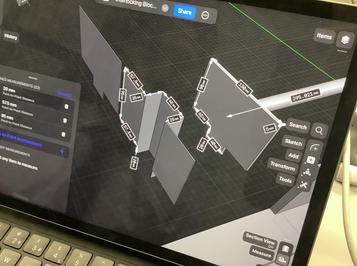
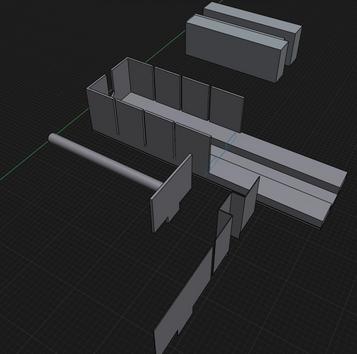
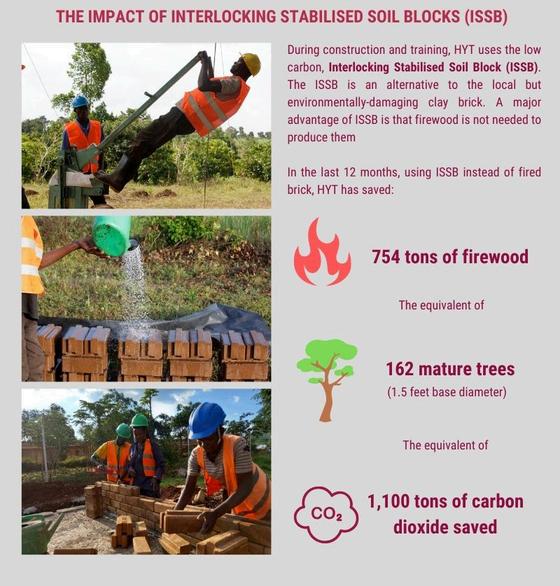
Images from top to bottom: first brick, most recent bricks and removing brick from compressor
Shapr3D images
Professor Seung Kim
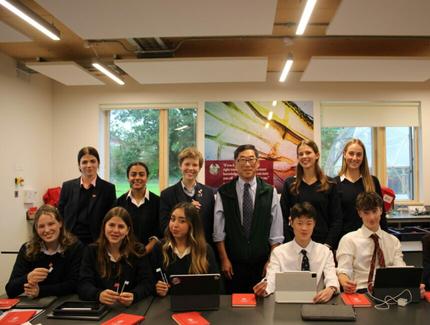
We were proud to launch our new STEM Twilight Lecture Series with a visit from Professor Seung Kim of Stanford University, who captivated our pupils with insights from his groundbreaking research at the Beckman Center for Molecular and Genetic Medicine
The lecture focused on Professor Kim’s work with Drosophila Melanogaster, commonly known as the fruit fly This humble insect has been the subject of over 100,000 academic papers and has contributed to five Nobel Prizes. Professor Kim explained how his laboratory is utilising fruit flies to make remarkable advances in Type I diabetes research
His research is also at the core of the Stan-X Programme at Haileybury, which sees a select group of Sixth Form pupils contribute to Professor Kim’s world class scientific inquiry. Evidence collected in Haileybury’s dedicated Stan-X laboratory contributes to the investigation of diseases being completed by a global community of researchers Research findings co-authored by pupils and teachers are published in peer-reviewed science journals and presented at international meetings, as has been the case in past programmes
At the lecture, our pupils were particularly inspired by Professor Kim’s account of his own academic journey, which provided a unique perspective on the challenges and triumphs of a career in scientific research The intimate setting of our STEM Twilight Series within Haileybury’s new SciTech Building allowed for extensive Q&A, giving pupils the chance to engage directly with a world-class researcher.
The event exemplified the enriching learning opportunities our partnerships provide Pupils relished the chance to network with a Stanford professor, gaining valuable insights into the world of cutting-edge STEM research. We look forward to welcoming more prominent academics and industry professionals in future lectures, continuing to inspire the next generation of scientists and innovators.
An interview with Professor Seung K. Kim M.D., Ph.D.
Q - How might your work impact future treatments for diabetes and pancreatic cancer?
A - Our group has three missions: laboratory research, mentoring the next generation of scientists, and teaching We have made contributions to several areas of basic science, including discoveries about the cells that produce and secrete the vital hormone insulin
A crucial approach to our work involves asking "What's missing?" in a field, rather than merely "What's next?". Our work is largely 'pre-clinical', but we speculate that our findings will translate into the clinic to improve care of diseases rooted in the pancreas, like diabetes and pancreatic cancer.
Q - How do you think using fruit flies as model organisms contributes to our understanding of human diseases?
A - This is not a question any longer Multiple examples of foundational knowledge stemming from fruit fly research have led to insights about human diseases. This includes understanding about genes, genetics, genomics, embryo development, circadian physiology, cancer biology, hormones, and other features of human diseases
Q - What inspired you to collaborate with schools like Haileybury, and what do you hope students gain from this experience?
A - Our programs, collectively called Stan-X, aspire to promote science instruction through experiments, something that is largely missing from science courses around the world Schools like Haileybury have the leadership, teachers, students and resources that enable constant innovation.
Q - How do you envision the role of initiatives like Stan-X in shaping the future of scientific research and discovery among young scientists, and how can these ‘emerging’ researchers make a meaningful impact in advancing medical research and their communities through such programs?
A - Oscar Wilde said: "Experience is the hardest kind of teacher. It gives you the test first and the lesson afterward." What better way to glimpse the profound beauty and power of science than to do actual, unscripted experiments? We think 'success' in Stan-X includes fostering curiosity in some students to explore science further But initiatives like Stan-X also have value in allowing students to conclude they are more interested in other pursuits We hope to leverage the wonderful outcomes of this experiential learning to develop programs at schools with resource challenges that serve students under-represented in science Some of the students who have the fortune to take Stan-X courses have become involved in that effort, and thereby explored teaching and mentoring
Science Beyond the Syllabus
Haileybury lecture series
Karis Clifton
Karis Clifton’s presentation, ‘my career journey and life as a drug product formulation scientist’, outlined her path from sixth form to becoming a paediatric pharmaceuticals chemist at GSK Faced with the choice between university and an apprenticeship, Karis chose the latter, enabling her to gain hands-on experience while studying She explained the drug product development process, comparing it to baking mixing ingredients, granulating, compressing into tablets, optional coating, quality control, and packaging Karis explained that special attention is given to paediatric drug development, considering suitable formulations and enhanced safety due to children's vulnerability Karis also highlighted historical tragedies, the Sulphanilamide disaster of 1937 and the Thalidomide crisis of the 1950s–60s, that shaped modern drug regulations, emphasising the importance of safety testing Finally, she touched on the role of placebos in clinical trials and the conditions under which drugs may receive fast track approval to meet urgent medical needs

Dr Deborah Brown

Dr Deborah Brown’s presentation, ‘the social context of health’, explored how social, economic, and relational factors shape health outcomes. Drawing from her diverse career journey, beginning in global capital markets and evolving into academic research and social entrepreneurship With a PhD focused on the sociology of the body and health systems, Dr. Brown has spent nearly a decade teaching the Social and Ethical Context of Health and Illness course to medical students at the University of Cambridge She also founded a social enterprise supporting fair livelihoods and community health in rural Ghana and Zimbabwe
Central to her message was that health is deeply influenced by where and how people live, study, work, and age. Socioeconomic status is a key determinant of morbidity and mortality
Dr Brown also emphasised the powerful role of social relationships in health Stronger social ties are linked with a 50% greater chance of survival, across demographics The stress-buffering hypothesis explains how social support mitigates stress, while social networks promote healthy behaviours and give people a sense of meaning. Ultimately, Dr. Brown argued that addressing health inequalities is not only good policy, it’s a matter of social justice
Emeritus Professor Craig Underwood
The pupils at Haileybury were treated to an exciting lecture by Professor Craig Underwood, Emeritus Professor of Spacecraft Engineering at the Surrey Space Centre (SSC), University of Surrey With nearly four decades of experience in space systems engineering, Professor Underwood has been at the forefront of small satellite missions, specialising in mission analysis, ground-station development, thermal design, and radiation effects analysis
In this captivating presentation “Our Journey into "New Space", Professor Underwood explored the evolution of satellite technology, from the early days of large, expensive vehicles to the cutting-edge nano-satellites of today. He shared insights from his extensive work on the University of Surrey’s pioneering UoSAT programme and discussed the ground breaking SNAP-1 mission, which demonstrated remote inspection and autonomous orbital manoeuvring
Professor Craig Underwood shared how recent technological advances have revolutionised space exploration, enabling the development of highly miniaturised spacecraft Professor Underwood delved into Surrey’s pivotal role in these advancements, showcasing innovative CubeSat missions such as STRaND-1, AlSat-1N, InflateSail, RemoveDebris, and LUCE VMMO
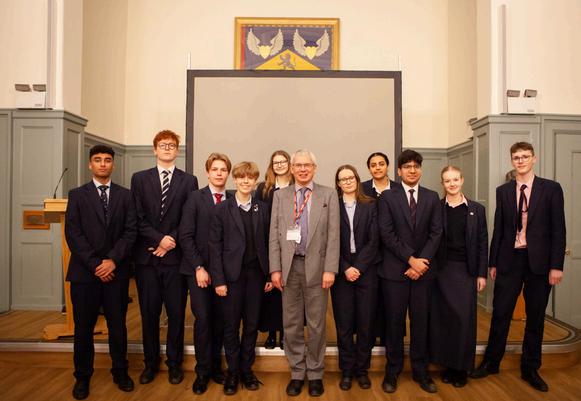
Professor Yang-Hui He
Professor He is a lecturer in Mathematics at Merton College Oxford and a Fellow of the London Institute for Mathematical Sciences
As a mathematical physicist, Professor He has conducted research associated with quantum field theory, string theory, algebraic geometry and number theory Professor He spoke on the topic of The AI Mathematician demonstrating to pupils how sweeping changes are being made already to the field of mathematics through the advent of Artificial Intelligence. Pupils remarked on Professor He’s passion and ability to captivate his audience, especially given the heady technical heights of the subject matter he presented.
We are exceptionally grateful to Professor He for taking the time to come and meet with our pupils in order to inspire the next generation of budding mathematicians.
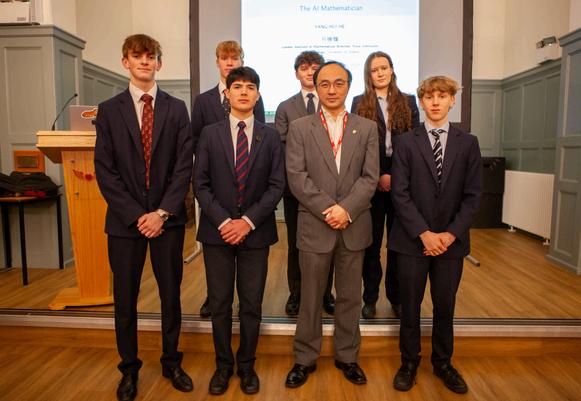
Beth Knight

In her inspirational lecture titled "A Burning Heart: Harnessing Your Impact to Build a Better Working World," Knight shared experiences from her work during the COVID-19 pandemic and the war in Ukraine She discussed leading Amazon's efforts to feed 2 4 million children at risk of malnutrition and creating a £100 million humanitarian aid value chain in response to the Ukrainian crisis. Focused on embedding social sustainability into business strategy, emphasising the importance of equity, human rights, financial inclusion, and fair work practices Knight argued that addressing social aspects alongside environmental concerns can accelerate overall sustainability performance.
With over 15 years of experience in leadership roles at major companies including Lloyds Banking Group, Amazon, and EY, Beth also holds non-executive positions with the British Tourism Authority and Save the Children, as well as being a Fellow at the University of Cambridge Institute of Sustainability Leadership In 2022/23, Beth was named Great British Businesswoman of the Year
An open and engaging speaker, Beth looks forward to meeting more of the School’s community
Professor Dame Jocelyn Bell Burnell
We were honoured to be joined by world-renowned astrophysicist, Professor Dame Bell Burnell, who discovered the Pulsar classification of stars while a PhD student at Cambridge University in 1967. Professor Dame Bell Burnell delivered a Haileybury Lecture titled ‘You Are Made Of Star Stuff’ in which she demonstrated how astrophysicists have traced the origin of each of the elements contained within the human body back to the structure and function of the stars across the universe Pupils and staff alike commented on Professor Dame Bell Burnell’s ability to convey the complex ideas of chemistry and astrophysics in an accessible and inviting manner

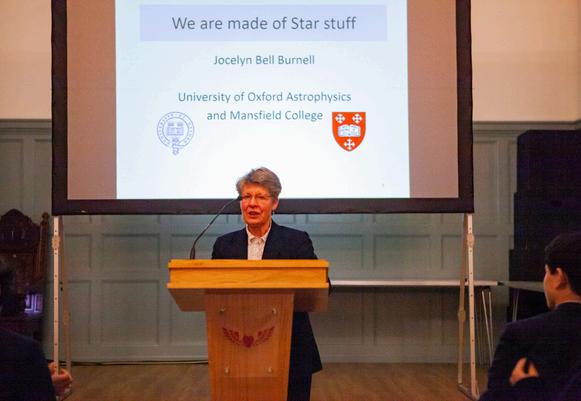
Dr. Christian Baker
A Research Fellow at King’s College London, delivered a lecture highlighting cuttingedge advancements in medical imaging technology. His research focuses on the development of miniature fibre-optic ultrasound sensors and transmitters These innovative tools use laser light to both generate and detect ultrasound waves at the tip of ultra-thin optical fibres, comparable in thickness to a human hair. This technology enables highly precise applications, including guiding surgical needle positioning and producing microscopic images of tissue Dr Baker’s work represents a significant step forward in minimally invasive diagnostics and treatment, offering enhanced accuracy and reduced risk in clinical procedures
Removes scientific thinking project
An ‘Eggcellent Introduction to the Scientific Method’ is a hands-on project designed to help Haileybury pupils develop a deep appreciation and practical understanding of the scientific method Recognising that the scientific method is essential not only to science but to any discipline involving inquiry and problem-solving, this project aims to equip pupils with key skills expected by universities and employers alike.
By investigating how to prepare the perfect boiled egg, pupils can focus on the principles and processes of the scientific method without requiring extensive prior scientific knowledge. Through this accessible and engaging task, pupils will formulate hypotheses, design and refine experiments, conduct trials, evaluate peer work, and present their findings using scientific research posters
The project emphasises consistency, objectivity, logical reasoning, and independent inquiry core attributes of scientific thinking that support critical evaluation and the advancement of knowledge
The specification of the perfect boiled egg that the pupils were seeking to reproduce was:
Egg white: white and firm with no runniness Providing a bright and glossy appearance
Yolk: centred with a uniform colour Warm, creamy and slightly runny
Complete separation between the egg white and yolk
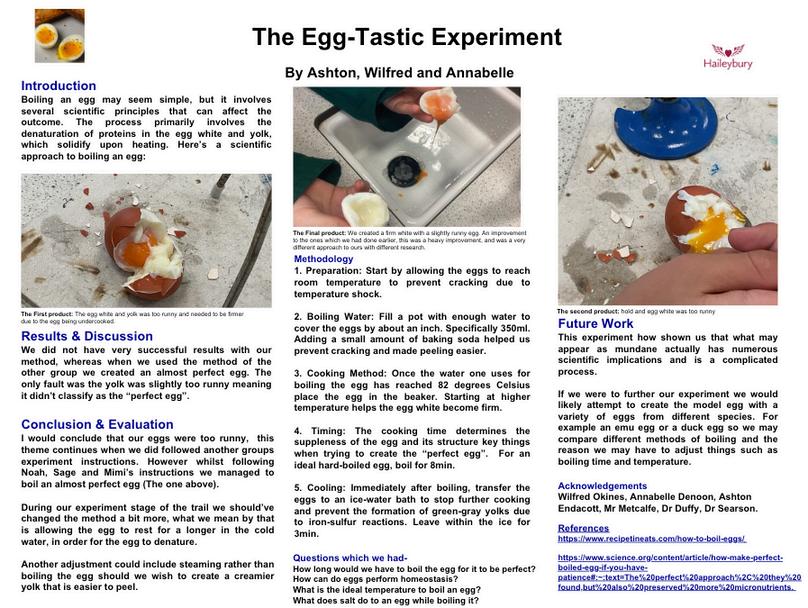
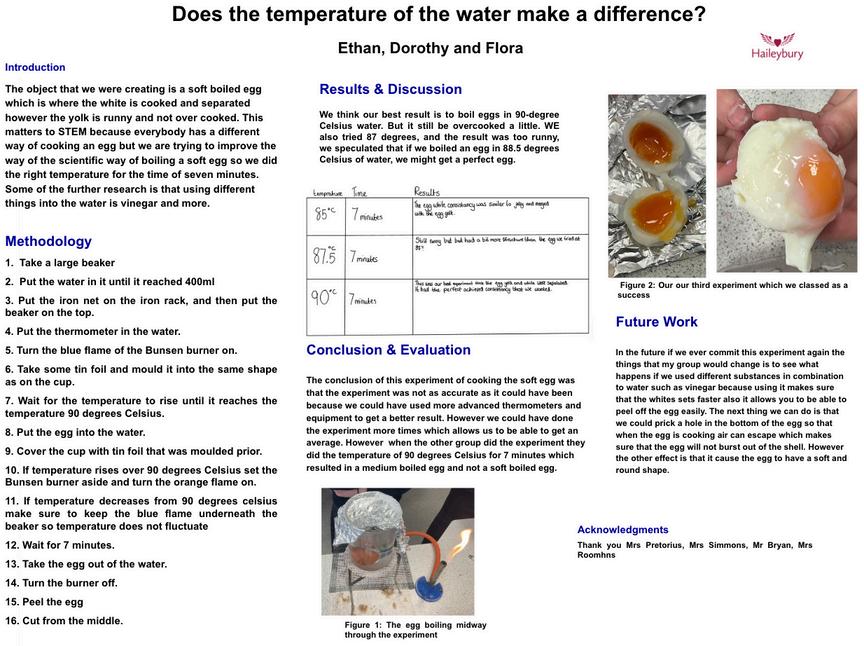
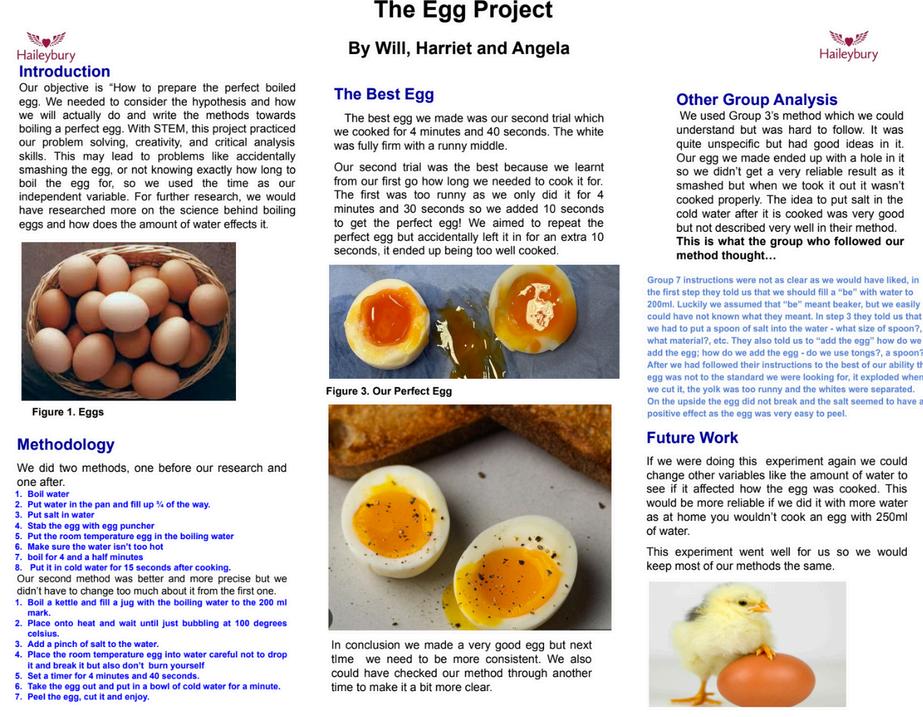
A week of science TED Talks and research inquiry
The Middles Science Enrichment Week is a thought-provoking programme designed to inspire pupils to explore scientific ideas that stretch far beyond the classroom Through a combination of TED-style talks, seminar discussions, and research poster creation, pupils are introduced to real-world science in a way that fosters curiosity, critical thinking, and independent inquiry.
The week began with a TED-style lecture that challenged pupils to consider science not just as a body of knowledge, but as a powerful tool for understanding and solving global challenges Topics ranged from the forensic investigation techniques explored in how to catch a killer?, to the medical potential of microbial chemistry in polyketides: they are so bioactive Pupils examined the importance of material science and regulation in why was Grenfell such a disaster?, reflected on climate change and space colonisation in should we start making plans to move to a new planet Earth?, and explored the hidden importance of biodiversity through dung beetles: the tiny insects that hold the Earth together The week also delved into the journey of scientific discovery from molecules to medicine, highlighting the complex and collaborative nature of modern drug development.
Following each lecture, seminar sessions enabled pupils to discuss key scientific concepts, debate ethical considerations, and begin formulating their own lines of inquiry. These sessions emphasised the development of transferable skills such as evidence-based reasoning, collaborative discussion, and critical evaluation
In the second half of the week, pupils applied their learning through independent research. Working in small teams, they selected a theme that resonated with them and conducted their own investigation into the scientific and societal implications Each group produced a research poster that communicated their findings, mirroring the way professional scientists present their work at conferences and academic events.
The programme cultivates key skills expected by universities and future employers: scientific literacy, intellectual curiosity, problem-solving, and the ability to communicate complex ideas clearly. By linking classroom science to realworld relevance, the Enrichment Week affirms the role of science not only as a subject to be studied, but as a lens through which pupils can better understand the world around them
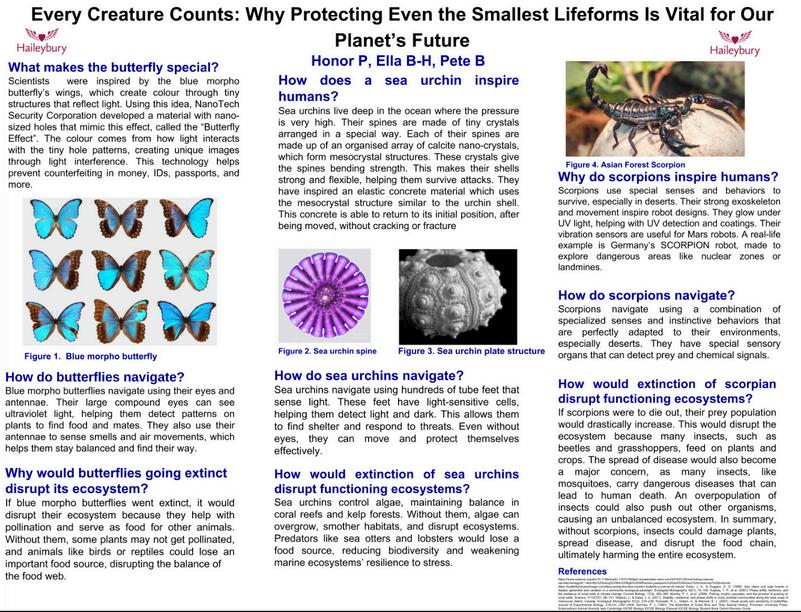

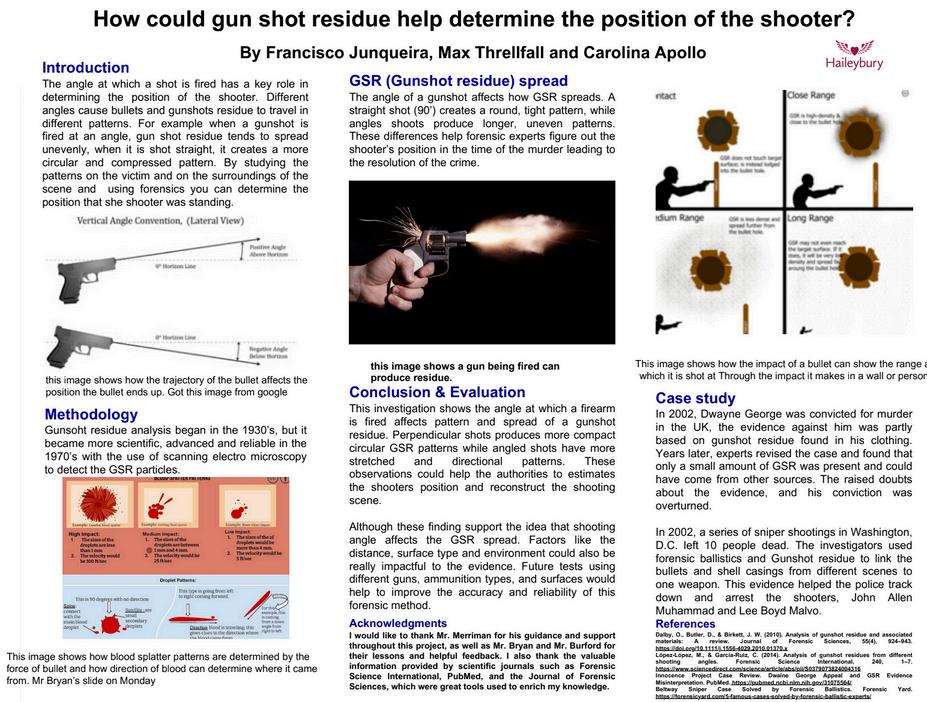
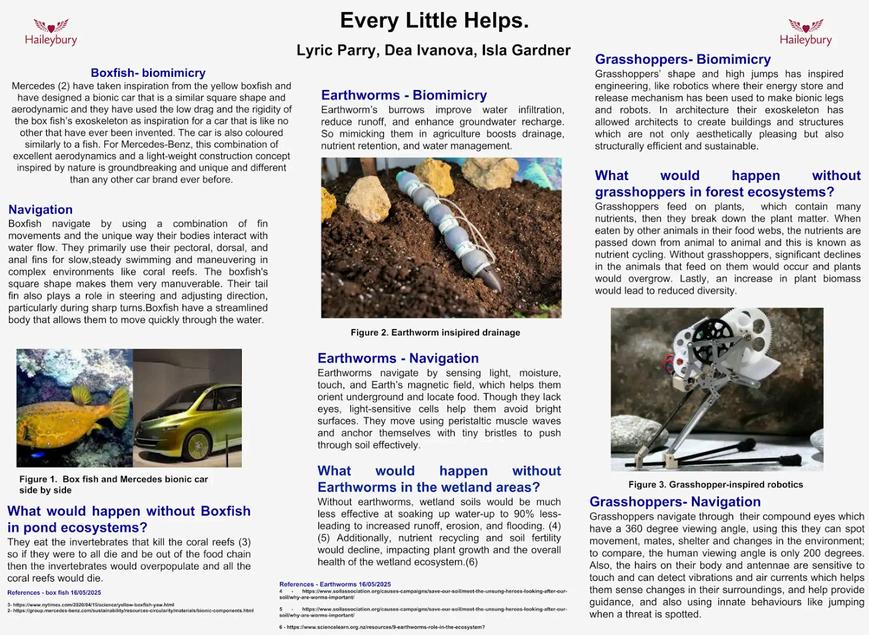
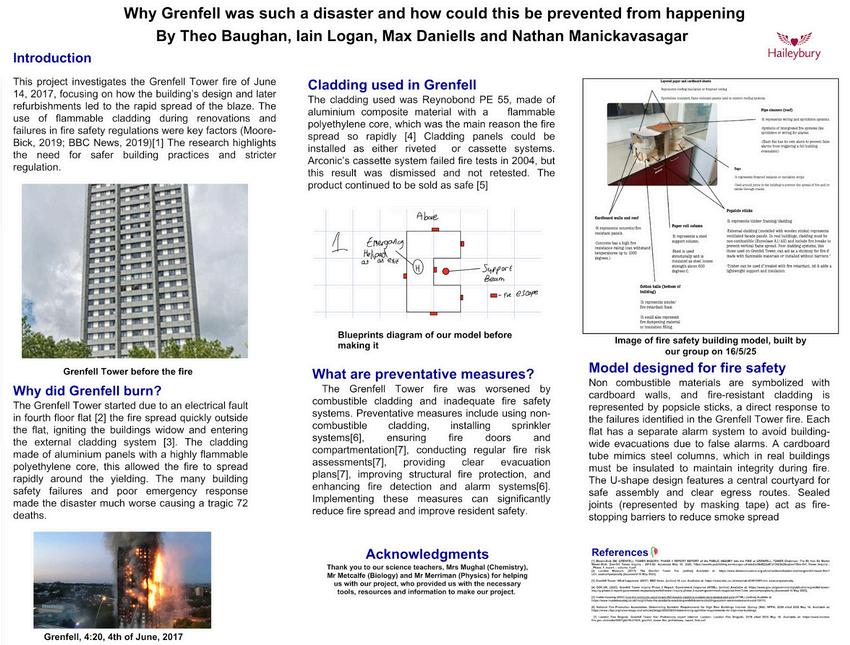
Looking into the future
Science after Haileybury
Sam Wilson (Bartle Frere 2010) is currently a Manager at Airbus. "I manage the development of nextgen propulsion technology needed to enable new space missions such as the deployment of mega satellite constellations or autonomous landings on the moon & mars"
Q - What inspired you to pursue a career in aerospace after leaving Haileybury?
At university, I studied Natural Sciences and took a year out (in my third year) to do an industrial placement at Rolls Royce, working on the design of nuclear submarines This was my first foray into engineering, and I particularly liked how engineering had a practical application for the science I was studying A year later whilst back at Uni, I was writing a paper on how gravitational waves could help us understand the early universe and the Big Bang and I still remember my excitement when they were detected for the first time (2015) the week I handed my paper in (what a coincidence)
I later discovered that an engineering company (the one I now work for) was designing the first space-based experiment to detect these waves essentially a gravitational wave observatory in space. That moment connected everything for me science, exploration, engineering, and the chance to work in diverse teams solving some of the hardest problems we face as humans. That’s when I knew I wanted to work in aerospace.
Q - Could you describe your current role in the aerospace industry?
I’m a Spacecraft Propulsion Engineer, which means I develop the systems that help satellites and spacecraft move whether it’s in Earth’s orbit or deep into the solar system. A big part of my job involves researching and testing new propulsion technologies and figuring out how to make them reliable and efficient enough to be used in real missions.
Q - What does a typical day look like for you?
A typical day might include reviewing test data from a propulsion system, running simulations to model spacecraft behaviour, and meeting with colleagues across Europe to coordinate designs There’s a lot of variety some days I’m deep in technical details, others I’m presenting findings or troubleshooting issues with teams spread across the continent
Q - How did your science education at Haileybury prepare you for your current career?
Haileybury helped spark my curiosity things like a New Scientist subscription and great conversations in class made science feel exciting and relevant But most importantly, my teachers gave me the confidence to pursue physics when I wasn’t sure I could, as everyone said how difficult it was but I still remember one of them telling me I had what it took, and that encouragement pushed me to take it at ALevel and beyond
Q - What's the most exciting project you've worked on in your aerospace career so far?
I’ve supported two missions that feel like they’ve come straight out of a sci-fi novel: the JUICE mission to send a satellite to Jupiter’s Icy Moons, and NASA’s ORION programme to return humans to the Moon. Both involve international collaboration, cutting-edge technology, and a real sense of pushing the boundaries of what’s possible

Q - How does your work in the aerospace industry contribute to scientific advancements or technological innovations?
A lot of what we do focuses on making propulsion systems more sustainable and efficient. One of our goals is to reduce reliance on Earth-based fuels by developing ways to use local resources like producing fuel from materials found on other planets or in space. This could eventually allow spacecraft to refuel in space and operate for longer without returning to Earth. It’s a huge step toward sustainable exploration.
Q - Are there any specific skills or knowledge you gained at Haileybury that you find particularly valuable in your current role?
Yes time management and resilience I played a lot of sport at Haileybury and often had to miss lessons for rackets matches or training I learned how to stay on top of my work, not make excuses and to balance competing priorities That mindset has stayed with me
Haileybury also gave me the confidence to speak up and take opportunities In my role now, I work with multinational teams, and being able to communicate effectively and say yes to new challenges is crucial
Q - What are some of the biggest challenges facing the aerospace industry today, and how is science helping to address them?
One of the biggest challenges is the decarbonisation of aviation commercial planes currently account for around 2% of global emissions, and that figure is growing as more people travel.
Science is helping by developing alternatives like Sustainable Aviation Fuels (SAF), which are made by capturing carbon and synthesising it into fuels, and hydrogen-based propulsion, which can be net-zero if implemented correctly. We’re also exploring electric aircraft.
Interestingly, a lot of the fuel innovations we’re working on in space like water-based propulsion have parallels in commercial aviation. The next step is scaling these technologies to make them cost-effective and widely adopted.
Q - Can you share an interesting scientific principle or concept that you frequently apply in your work?
One that comes up surprisingly often is the ideal gas law: pV = nRT, which I think is first taught in GCSE chemistry. We use it when calculating how much pressurant gas to load into propellant tanks. In space, without gravity, we need gas pressure to push fuel out of the tanks This equation helps us account for the temperature, volume, and pressure requirements to get that just right It’s simple but essential
Q - How do you see the aerospace industry evolving in the next decade, and what role will science play in that evolution?
I think we’re heading into a new era of sustainable and autonomous space exploration
Reusable rockets, in-orbit servicing, in-situ resource utilisation (like making fuel on the Moon or Mars) these are becoming real possibilities Science will be central to all of it, especially in developing new materials, fuels, and systems that can withstand extreme environments
Q - Do you have any advice for current Haileybury pupils interested in pursuing a career in aerospace or other scientific fields?
Get curious. Subscribing to something like New Scientist or Scientific American can help you spot the trends and breakthroughs that will shape the future. If you look back 15 years in those magazines, you’ll see the innovations that are now emerging for renewable energy. Also, if you can, look for degree courses that offer industrial placements. My placement helped me figure out what I did and didn’t want to do like realising I enjoyed engineering but not military applications and helped me narrow down my interests.
Finally, don’t be afraid to ask questions, explore unusual paths, or say yes to opportunities. You never know where they’ll lead.
Q - Are there any memorable experiences from your time at Haileybury that influenced your career path or scientific interests?
Definitely Haileybury fostered my early interest in science and gave me the confidence to pursue it The support from teachers, exposure to scientific publications, and the balance between academics and extracurriculars shaped how I approach both life and work today
Howtobecomeanengineer
Reuben (L6th)
Professor David Cardwell is a Professor of Engineering specialising in Superconductivity Engineering at the University of Cambridge His expertise in his field are of the highest degree, being the Head of the Cambridge Department of Engineering from 2014 - 2018, a department renowned globally for its prestige and excellence Professor Cardwell further served as the Pro-Vice-Chancellor for Strategy and Planning from 2018 - 2024, demonstrating his value to the University beyond the field of Engineering.
We were fortunate enough to invite the Professor to Haileybury on the 4th March, 2025 Professor Cardwell kindly agreed to participate in a valuable interview before meeting for lunch with Haileybury’s own aspiring Engineers within the Sixth Form
On behalf of the school, the Science Magazine would like to thank Professor Cardwell for taking the time to visit Haileybury We were honoured to host such an esteemed guest and would like to thank him for the fascinating advice and the interview that he gave us on studying engineering at the highest level.
What does Cambridge look for in a top engineer?

Cambridge’s engineering course is without a doubt one of the best in the world and as a result it has an incredibly competitive applicant pool. Cambridge accepts just 320 students a year out of thousands of talented applicants. When asked about admissions, Professor Cardwell stated that “We look primarily for academic potential” For those wondering what he means by this, Academic potential is a student’s demonstrated ability and readiness to handle the demands of higher education in this case, at the very top level within the field of engineering.
In order to demonstrate this, an interviewer like Professor Cardwell will often ask an applicant to talk about an area of interest related to engineering. They will probably be challenged or presented with a problem in these interviews which will not be in their school curriculum Cambridge wants applicants “to think about something that they haven’t come across before, draw links between areas of physics and maths and then put it together in some coherent form ” as stated by Professor Cardwell
Ultimately, getting in comes down to the academic potential of the candidate and their ability to do well on the Cambridge course in the eyes of the professors “We have no preconceptions about the person we want The person we want is someone who is going to do well on our courses. I keep telling people that is the only criteria we are interested in. If I’m interviewing 2 students, the offer goes to the best student ” That’s the hard truth of it The offer will go to the best student - the one that is the most motivated, has the aptitude and ultimately, the one that will do the best on the Cambridge course
How can I best prepare for a degree in Engineering at a top university like Cambridge?
“It’s not a box ticking exercise and some people go wrong by thinking it is”. The professor is saying that ultimately, it isn’t as simple as meeting the expectations You need to suit the course you are applying to, and different universities do different types of engineering degrees From Aerospace at Bristol to Chemical at Imperial, engineering has an extremely broad scope Cambridge however has a particularly broad course, allowing you to specialise after the first 2 years of a general engineering study, where you learn various aspects of engineering Again, this is certainly not for everyone and if you already know the field of engineering that you are motivated to study, Cambridge might not be the best place for you
But for those who do aspire to go to Cambridge, application can be incredibly daunting First, you are required to sit the Engineering assessment, followed by submitting written work If you manage to get through these stages (a serious achievement in itself), you are required to do the interview. Interviews often favour the extroverts, with confidence and preparation playing a key role. Reassuringly, Cambridge does not favour a particular personality type in its selection process “It's perfectly fine to be quiet, unassuming, you don’t have to cartwheel into and interview room, you don’t have to shake my hand as vigorously as you can, you don’t have to tell me you are madly in love with engineering, you just have to calmly and quietly tell me why you would like to study engineering and you illustrate that by showing you have the knowledge and the understanding of key bits of maths and science enabling you to do well ”
Above all else, there is one trait you need to succeed when applying to any top university “Some people are told you have to be enthusiastic You don’t It’s about motivation It's perfectly fine to be quiet, unassuming, you don’t have to cartwheel into and interview room, you don’t have to shake my hand as vigorously as you can, you don’t have to tell me you are madly in love with engineering, you just have to calmly and quietly tell me why you would like to study engineering and you illustrate that by showing you have the knowledge and the understanding of key bits of maths and science enabling you to do well”
Ultimately, Professor Cardwell summed up the application to any university with this “All universities are more or less the same It’s not about how you look, how you speak, where you are from, it's about what you know and what your potential is to do well ” To be honest, it’s a rather refreshing reassurance that a university picks on your own academic merit, not on everything else.
